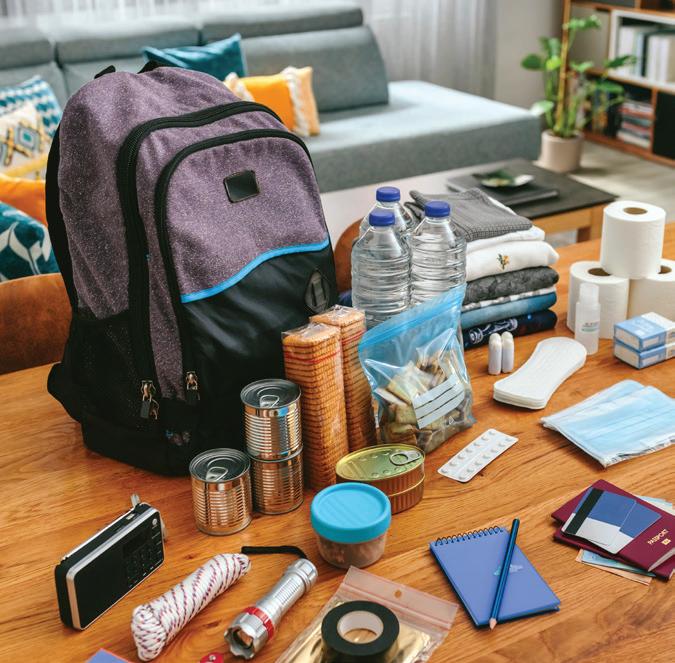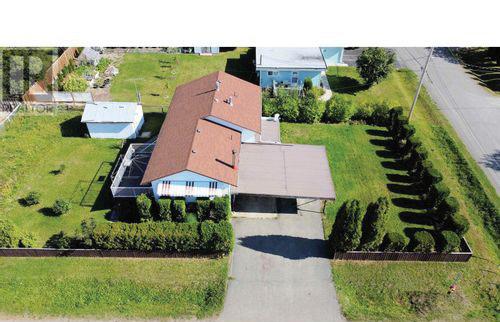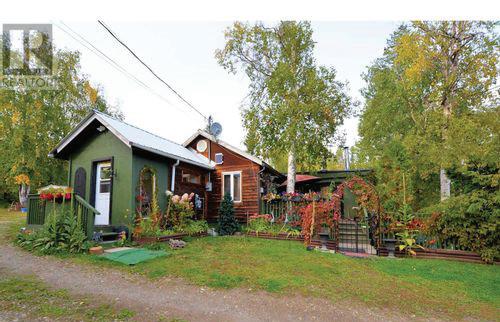



($7,500 cash plus $4,500 Slot Free Play)








($7,500 cash plus $4,500 Slot Free Play)



TED CLARKE Citizen Staff
The fate of the Lower Patricia Boulevard encampment known as Moccasin Flats will ultimately be decided by the BC Supreme Court.
But maybe not until January.
Eric Depenau, the city’s director of administrative services, was asked at a city council meeting Nov. 4 when the city will be going back to court to apply to permanently close the camp, which for the past two years has been a steady source of calls for service to police, fire, ambulance and city bylaw officers.
“I believe in June the timeline that was discussed was as early as Q4 of 2024, and of course we’re in November and are getting close to the end of that quarter, but we’re still looking at that December timeline,” said Depenau.
“But realistically that may be pushed into January.”


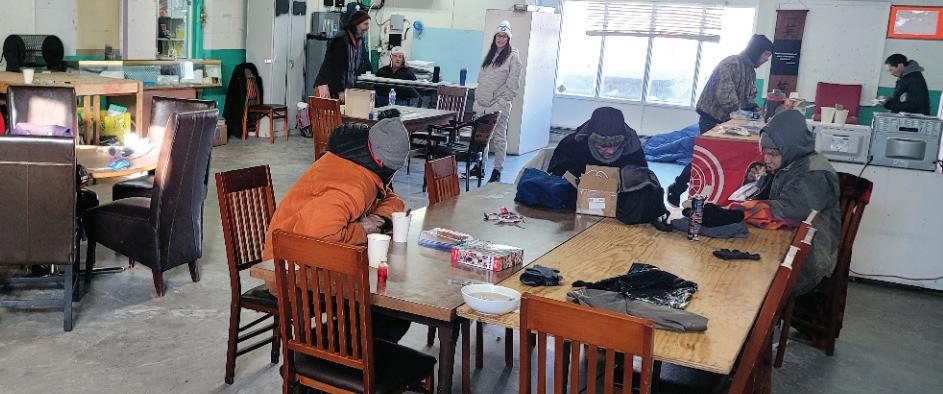
The AWAC warming centre at 497 Fourth Ave., next to the Moccasin Flats encampment, offers 24/7 service to its clients in downtown Prince George. On one recent night, 27 people slept there.
The city wants to permanently close the encampment and has tried to do so several times. But a Feb. 23, 2022 BC Supreme Court ruling legally prevents that from happening until the city can demonstrate camp residents can be accommodated in shelters or other indoor living spaces.
The city also must show the court there are adequate daytime facilities for people without permanent homes.
“One of the challenges we have is so much of what we need is about daytime facilities and shelter spaces and those really come down to assets owned and controlled by the provincial government, in a lot of cases,” said Depenau.
Coun. Brian Skakun said it should be left entirely to the city to provide daytime facilities for people, some of whom are not allowed to remain in overnight shelters during the day.
“We’ve been tasked with so many things that aren’t our responsibility,” said Skakun.
“We don’t want to see people out in the cold, that’s for sure. But our role as a government is definitely not to find housing and things like that. It’s frustrating. Administration and bylaw services, I think, are doing the best they can and they’re doing a good job. Staff is doing the best they can with what we have and I look forward to us going to court and having our homework done, which I’m quite sure we will, and eventually having this encampment shut down.”
City staff developed a report in response to council’s Oct. 7 request for more information about safety issues of concern to residents of the Millar Addition and other neighbourhoods around Moccasin Flats.
The staff report, titled “Social Health – Issues Update,” was presented at Monday’s council meeting and it indicates calls for service and complaints from the Millar-Addition area remained modest through the summer months, which the city attributes to its proactive engagement efforts at Moccasin Flats.
Staff noted a significant reduction in hazardous materials that were being burnt in campfires at the site, the report notes a significant decrease in the number of individuals sheltering at the encampment, which has dropped from 44 in May to just 14 currently.
While that informal census showed just 14 campers, on a chilly Tuesday, Nov. 5, 27 people slept in the Association Advocating for Women and Community (AWAC) warming centre in the building just north of the Moccasin Flats campsite, which provides food, drinks and shower facilities for camp residents.
The city is currently implementing a four-phase response plan to address the challenges posed by the encampment. As of now, the city is in Phase 1, which
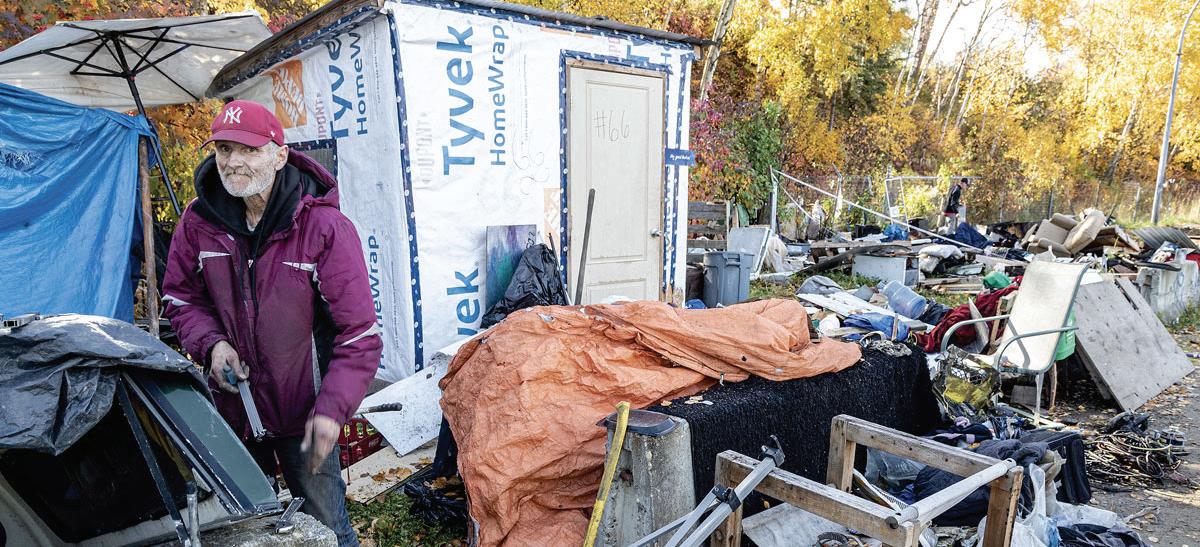
Lawrence Lychak started living in the Moccasin Flats encampment after the basement suite he rented on Quince Street burned in a fire he had no part of. Lychak is one of an estimated 14 residents left in the encampment along Lower Patricia Boulevard in downtown Prince George.
focuses on building capacity and mitigating hazards.
Plans are underway to transition to Phase 2, which will demonstrate to the Supreme Court the city’s capacity to facilitate alternative shelter solutions for those living at the encampment. Further communication with the public will occur once the court application is advanced and additional details are confirmed.
Other highlights of the report include:
Housing and shelter update
As of Oct. 11, all available spaces at Victoria Street Supportive Housing are fully occupied, reflecting ongoing demand for supportive housing in the area.
The city is operating 151 shelter beds, with six reserved for Moccasin Flats occupants.
The provincial government is providing B.C. Housing $4.1 million in funding to establish the Third Avenue Transitional Facility, which will have 43 units, built in Atco trailers. City council kickstarted the project when it approved $468,000 in funding to pay for sewer/water hookups and raise the ground level.
Once open, it will provide 24/7 staffing
and various support services, including health care referrals and life skills training.
“We’re anticipating that opening very soon, it’s on-track, ready to go,” said Coun. Ron Polillo. “I think you’ll see people living there very soon. It’s going to have a significant impact and with that coming online I think you’ll see Lower Patricia encampment virtually empty.
“We’re committed to working with BC Housing to find alternative supportive living. That’s not within our jurisdiction but really to strengthen our case when we go back to Supreme Court to overturn that injunction, we have to do our due diligence to work with BC Housing to make sure we’ve provided them an alternative to live elsewhere.
“It’s incumbent on us to work with BC Housing to make that happen to make sure they offer them the space, and if they turn it down, they turn it down.”
From Jan. 1 to Oct. 20, Prince George Fire Rescue responded to a range of incidents, including 292 burning complaints and 398 medical aid calls within the downtown core. The service remains vigilant in ensuring public safety across the city, the report states.
Bylaw officers continue to collaborate with civic operations to mitigate risks at the encampment, engaging in regular cleanup efforts to remove abandoned materials and improve safety. In 2024, there have been 164 calls regarding open drug use in the downtown area, reflecting ongoing challenges in public safety.
The Prince George Community Policing unit has actively maintained partnerships with local Block Watch groups, currently supporting 44 active neighbourhood watch areas. Reports indicate that break and enter incidents have been relatively stable, with a total of 373 recorded in 2024 thus far.
Council also credited the city’s communications staff efforts to create its Who To Call To Report My Issue poster, which outlines which city authorities are responsible and how they can be contacted or a public safety issue, whether it’s a bylaw enforcement complaint, pothole on a city street, burntout street light, broken water main or bear causing a disturbance.
With files from Kennedy Gordon


































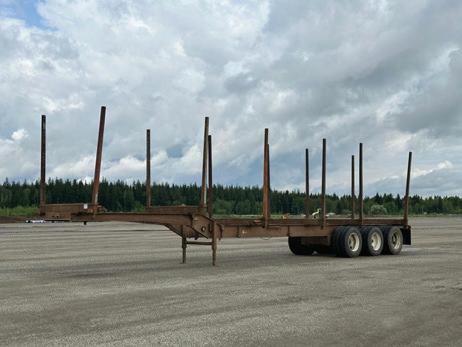


TED CLARKE Citizen Staff
Fortis BC Energy Inc. has applied to the British Columbia Utilities Commission to approve an application to sell Fortis’s customer service centre office building in downtown Prince George over concerns about crime and vagrancy in the area.
The building, at 1190 Second Ave., is adjacent to the St. Vincent de Paul Drop-in Centre which attracts dozens of the city’s unhoused and unsheltered street population who come for its daily meal service.
In a letter to the BCUC obtained by The Citizen, sent by Sarah Walsh, Fortis BC’s director of regulatory affairs, said the company intends to sell the Second Avenue building to Carrier Sekani Family Services.
Walsh explains why the company moved its customer service centre and corporate office in March to an alternate location out of the downtown core to a newly constructed building on the western edge of the Bowl area at 700 Kinsmen Pl.
“The environment around the Prince George Service Centre Office property location has deteriorated over the past years and the crime and disorganization in the area has become a risk to the facility and the mental and physical well-being of (Fortis) employees, as well as (Fortis’s) ability to continue to provide quality service to customers,” said Walsh.
“(Fortis) therefore determined that it was necessary to relocate the customer service centre to endure that (Fortis) could continue to provide quality customer service in a Prince George location without compromising the safety and health of its employees or the security of the facility.”
Walsh said the problem with increased crime and social disorganization has noticeably worsened over the past seven years. In response, Fortis stepped up security enhancements to try to improve the area around the property and also engaged in conversations about the deteriorating

socioeconomic environment with community organizations, including the City of Prince George and Prince George RCMP.
A May 2019 security assessment revealed activities regularly observed near the centre’s main entrance on Second Avenue, including drug consumption, used drug paraphernalia left on the site, clear signs of urination and feces smearing in the entrance way, vandalism and property defacement and persistent loitering.
Over a five-month period from Jan. 2-May 27, 2019, Fortis employees witnessed 95 nuisance issues (loitering/trespassing/ removal of people; 18 incidents that resulted in police file numbers assigned; one physical threat to an employee from a member of the public; one suspicious package left on-site; three break and enter incidents (including a vehicle break-in the company parking lot; and two vandalism events.
Fortis’s security risk assessment made 10 recommendations, including installation of reception area double-doors, intercoms, security cameras, an on-premise security guard and personal alarm devices. Despite those additional security measures, employees continued to
service centres in the province, the Prince George building was set up as one of the main hubs for the company’s network and communications system to provide redundancy in the event of a disaster at either location.
The renovation involved removing the existing mechanical heating/venting/ air conditioning system and replacing it with a high-efficiency mechanical system. Control of the heating and cooling mechanical systems and the automated window coverings was set up for remote control by Fortis’s main office in the Lower Mainland. An uninterrupted power supply and generator system was also added to the building.
experience negative and unsafe interactions with people in the area around the office, particularly when on breaks and entering or leaving the parking area. The situation continued to deteriorate to the point that routine activities of staff such as going for lunch or visiting their vehicles, particularly in the overflow parking lot, raised significant safety issues which impacted the mental and physical well-being of employees.
Vandalism and break-and-enter incidents continued and staff witnessed serious assaults and major medical incidents. Walsh said those experiences are not unique to the Fortis property and other business owners in the downtown area have experienced similar problems.
She said since the March 2024 move to the new building, employee response has been positive.
Fortis was known as Terasen Gas in 2010 when it paid $2.334 million to acquire the 20-year-old Second Avenue building for use as a customer service call centre. The company invested $5.63 million in capital improvements and resiliency upgrades to the two-story, 23,000 square-foot concrete structure and renovations were completed in April 2011.
Built to house one of two customer
The interior office space was demolished and rebuilt to serve the needs of 100 full-time employees who worked there. Including renovations, the total cost of the property to Fortis was $7.8 million.
In January, Fortis hired A-Tech Appraisals to assess the value of the building and in the public report released earlier this month that value has been redacted.
After speaking with a real estate broker, Fortis determined there would be little interest in the building, given its location and the size of the facility. Fortis anticipated it would require conversion into a multi-tenant space or would have to be marketed at a significant discount.
Before it placed the building on the market, Fortis received offers from two community groups - Carrier Sekani Family Services (CSFS) and BC Housing - and accepted the highest offer, which came from CSFS.
On Oct. 7, Fortis filed with BCUC its application to sell the building to the Carrier Sekani Family Services Society.
As part of the regulatory process, Fortis is required by BCUC to show the sale of the downtown building will not result in any harm to its customers. The company believes it has met that obligation and the sale is in the public interest and should be approved.
If a public hearing is required for the review of the application, Fortis is confident that process will be minimal.
TED CLARKE Citizen Staff
Danny Schwab heard the front door security alarm from his phone and it woke him up
It was 4:30 a.m. Thursday, Nov. 7 and the motion detector on the camera at his house in the Foothills neighbourhood had been activated. There was a man standing at the door. But because the video uplink is delayed by about 30 seconds, by the time he got out of bed and rushed across the hall to another room facing the street the man was no longer on the front step.
“The guy was standing at the end of the driveway trying to get back on his bike and my first reaction was if he was robbing us and took something from me he obviously needs it more than I need it,” said Schwab.
“So I watched him for a bit and it just looked like a guy with his bike and his bag and all his belongings.”
Schwab watched him ride away down the street and went back to bed. He looked at his phone to watch the surveillance video and noticed the man wasn’t taking anything, but leaving something.
“It looked like he set something down on the table, so I went and looked out the front door and there was a wallet there, and I opened it up and it’s my son’s wallet,” said Schwab.
“I just thought holy gee, that’s impressive, and went to look for him. I jumped in my truck and couldn’t find him.”
In the wallet was all his son’s identification, credit cards and $50 in cash. It had probably fallen out of his pocket when he got out of his truck, which was parked on the street, Schwab said.
“As he was riding by (the stranger) saw it and came and put it on the table and if look at the video you can hear him say, ‘I found this wallet,’” said Schwab.
“I don’t think he looked inside the wallet. I wanted to thank him and I was going to give him a hundred bucks.

dropped it off in the middle of the night.
Some people are just deserving and that guy is deserving, without knowing his story. You do judge people without knowing their stories.”
It’s human nature to assume somebody standing on your doorstep in the middle of the night, dressed to be out for an extended time in the cold, could be out scouring the neighbourhood looking for property to steal, and Schwab says it’s a heartwarming lesson to have his own preconceived notions proven wrong.
“I felt shame for assuming the worst,” Schwab wrote in a Hell Yeah Prince George Facebook post.
“Quick lesson to all. This world still has some wonderful people in it. Maybe we have to look a little past the cover. To the gentleman who dropped off my son’s wallet, thank you. You opened my eyes again.”
Schwab said if the man reads this story he would like him to come back to the house on Ochakwin Crescent to thank him in person for his honesty.
“I’d still like to reward the guy, he impressed the heck out of me,” he said.


TED CLARKE Citizen Staff
Mayor Simon Yu has directed city staff to pursue provincial government funding to pay for capital projects such as replacing worn-out infrastructure.
That was one of the topics tackled this week by the city’s standing committee on intergovernmental affairs.
Prince George was not included in the Resource Benefit Alliance (RBA), a fair-share agreement deal between the province and 21 local governments across northwestern BC from Masset to Vanderhoof. Announced in February, it will result in $250 million in funding from the province over the next five years.
Coun. Brian Skakun suggested the best way to expedite a similar deal for Prince George is to hire a staff member with the skillset required to apply for grants.
“I think if we get someone that’s


A failed storm drain caused a massive sinkhole on Massey Drive and Winnipeg Street in 2018. The city’s intergovernmental affairs committee is developing a strategy to secure a fair share agreement with the province to help pay for infrastructure repairs.
got connections in government and knows what to do, we have to do something because we got screwed, in my opinion, on that $250 million in infrastructure,” said Skakun. “How did that happen?
“We need another voice working behind the scenes that can navigate the political system. We’re losing our industrial tax base (with mill closures). Can Prince George go on its own for its own fair share agreement of some type?
It would be lot easier for the province to support one local government than a dozen of them.”
Fair share agreements address challenges rural local governments encounter raising revenue needed to make critical investments in local infrastructure investments and pay for services to support industrial development.
“Northeast had it first,” said Coun. Garth Frizzell. “The idea was that they had a lot of development outside of
municipalities, so places like Fort St. John get a lot of benefit from it, otherwise they’d get no taxation from industry that was just outside of their region, places like Taylor.
“It was a one-off for the northeast and then it was one-off in the northwest and now we have to do work for a third one.”
Eric Depenau, the city’s director of administrative services, plans to survey the architects of the RBA deal in the northwest and the Peace River Agreement that secured provincial capital funding for eight northeastern communities to learn exactly how those deals were concocted.
Coun. Kyle Sampson said the city will have to identify who it will partner with in the lobbying process, whether it’s the Lheidli T’enneh First Nation or Regional District of Fraser-Fort George, and what will be asked of them regarding funding commitments or staff time.




At Artemis, we are committed to protecting the health, safety, and well-being of our employees, the environment, and the communities in which we work. We welcome feedback and use it to improve how we operate. Complete our online feedback form artemisgoldinc.com/communityfeedback Email feedback-bw@artemisgoldinc.com Call toll-free 1 (888) 724-0106
Submit our online feedback form in person, via mail, or email Blackwater Mine Attention: Community Relations Manager 101 - 139 1st Street East, P.O. Box 440
TED CLARKE Citizen Staff
Is Prince George the right place to locate a military base?
City council wants to know and planned to meet with Lt.-Col. Torry White, commanding officer of the Rocky Mountain Rangers, this week to discuss whether there is any interest in the Canadian Armed Forces establishing a permanent base in the city.
Coun. Garth Frizzell thinks it’s a good idea.
“Picture the most strategic location in central BC,” said Frizzell.
“We’re not just the two rivers, the highways, the railroad, the airport, but we’ve also got incredible heavy industry and really widespread and diverse light industry. We’ve got a refinery, and a green refinery at that, two educational facilities with the college and university.
“This is an ideal place for support.”
White, who lives in Kelowna, came to Prince George for Monday’s Remembrance Day ceremonies and planned to remain in the city until Thursday.
The city’s standing committee on intergovernmental affairs was asked by council at its Oct. 1 meeting to discuss the army base proposal with White and try to gauge if there’s any interest from the federal government in making that happen.
Council and senior administrative staff are familiar with the Rocky Mountain Rangers locally and the Canadian Rangers nationally and have had conversations about the future of public buildings such as the Connaught Youth Centre, which houses several cadet organizations. The committee wants to hear White’s thoughts on where Prince George might fit in the Canadian Armed Forces’ plans.
“The committee is looking to engage in conversation of how best to support all of those national defence groups here in the region and on the staff side we’ll be looking to co-ordinate some meetings to explore that interest,” said Eric Depenau, the city’s director of administrative services, who also serves as an Rocky Mountain Rangers captain.
“The standing committee is interested
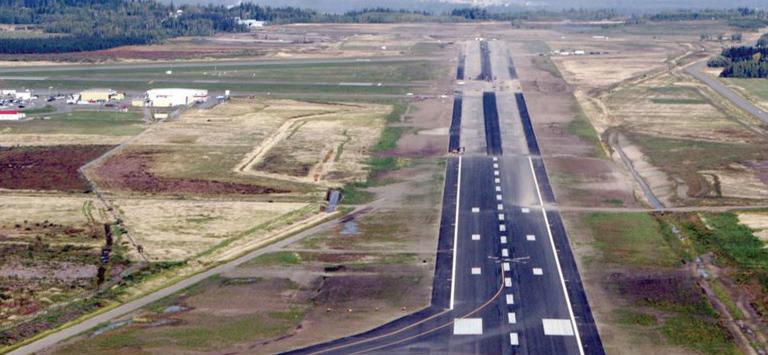
in having an informal get-together just to share some thoughts around aging infrastructure in the city and what the future of the Connaught Youth Centre might be, not that there’s any immediate plans. City council has a veterans and family community covenant and under that covenant Prince George has said that they’re looking for opportunities to support veterans, armed forces and their families and this is a continuence of that covenant work.”
Since February 2011, Prince George has been home to the Rocky Mountain Rangers (RMR) Bravo Company light infantry army reserves, based at the former Meadow Elementary School in the Heritage subdivision at 687 Dornbierer Cr.
Bravo Company, with more than 60 members, recruits soldiers as reservists, some of whom are deployed to Canadian military operations overseas. There’s also an RMR reserve unit based in Kamloops.
Coun. Kyle Sampson said the intergovernmental affairs committee will be meeting with White to discuss what the city can provide to take advantage of local deployment of the reserves for emergency operations such as wildfire evacuations, which could further be enhanced by having a larger-scale base in Prince George.
“Beyond exclusively what the army base can provide from a national perspective, what can we do to benefit from that infrastructure being built
conversation to see where they see the opportunities being in northern BC and how we can tap into that.”
Prince George Airport is home to the fourth-longest commercial airfield runway in Canada and having more substantial military operations in the city would finally allow the city to use that to its advantage.
However, the 3,474-metre (11,400foot) runway is nearing the end of its lifespan and within the next four years will have to be dug up and replaced. Having the Department of Defence establish a Prince George base might be a way to pay that repair bill.
here?” asked Sampson. “Can we tie in emergency management components to that facility that can be staffed locally and provincially and then backstopped in the event of major instances by the military? We’re not the experts in the armed forces. We want to have that
“I know when we’ve had military air force aircraft at the airport they say this is ideal conditions for training,” said Sampson. “They can take off on Canada’s fourth-longest runway and be training in the middle of nowhere in minutes. It provides that connectivity to other parts of the world and that trans-Pacific flight time is lucrative to them.”

KENNEDY GORDON Citizen Managing Editor
KENNEDY GORDON Citizen Managing Editor
KENNEDY GORDON Citizen Managing Editor
KENNEDY GORDON Citizen Managing Editor
The closure of Canfor sawmills in Vanderhoof and Fort St. John and the loss of 500 jobs in those communities is terrible news, but not surprising news.
The latest changes at Canada Games Plaza present an opportunity while building on the success of the new Canfor Leisure pool.
For the first election in decades, you won’t be seeing Shirley Bond signs around town.
The veteran MLA announced last week that she was done with provincial politics after she, and the rest of us, were blindsided by her party leader’s decision to shut down the BC United campaign and endorse the fast-rising BC Conservatives.
There are two supportive housing buildings on Queensway between Patricia Boulevard and 17th Avenue. They’re home to dozens of people with different needs, and operated by agencies that work to help people live on their own in safety and health. You’ve probably never realized that these places are anything other than typical Prince George apartment buildings.
Recent developments — such as the removal of the old bleachers, the construction of a new skating rink, the opening of a tourism gift shop and the possible addition of second, smaller, Mr. PG to the plaza — signal an emerging interest in transforming the Canada Games Plaza.
We’ve known for years that BC’s forest industry is in serious trouble. The most recently announced U.S. tariffs aren’t helping.

This paper went to press just before Bond’s formal press conference Tuesday afternoon, so we can’t tell you what happened there. But she did send out a statement last week in which she outlined her decision.
That’s how supportive housing works in Prince George. As we’ve talked about before, there are many such homes throughout the city, including in College Heights, operated by people involved with the many social service agencies and non-profit organizations doing good work here.
For decades there has been a push, with multiple studies, to revitalize downtown Prince George, including the Civic Core Plan that the city is currently working on. This time however, the user groups have been united, and presented a carefully researched vision for a multi-use convention and entertainment facility that would serve arts, sports, and tourism while addressing infrastructure needs.
“The decision made by BC United party leader Kevin Falcon to suspend our party’s election campaign came as a complete surprise to me and I have spent the past 24 hours with my family thinking about what my next steps should be,” she said in a statement. “Together, we have decided that I will be withdrawing my name as a candidate in the upcoming provincial election.”
Trees.
a unified direction. This piecemeal approach risks wasting both resources and potential.
A development along the lines of the Civic Core Plan could foster a truly multi-purpose space that serves a wide variety of interests and draws people downtown for diverse events — arts performances, sports games, conventions, and more.
Also, the vision behind the Civic Core Plan is one that encourages collaboration.
For years, under first the BC Liberals and then the NDP, the approach has been to kick the can down the road when it comes to addressing the ground-level challenges facing the forestry industry. Companies keep harvesting, milling and shipping until the ledger turns red (or looks like it might), and then the saws are unplugged, the mills close and people lose their jobs. It didn’t have to be this way. Warning signs have been clear since the pine beetle attacked BC forests 20 years ago. While it was a crisis, it led to a major logging boom as salvage operations began. Crews started harvesting the trees the beetles had killed, an operation that saw huge growth in the industry and money being made across the board. Things looked OK.
One of those people is Rick Edwards, who founded Integrity Recovery to help addicts get their lives back on track. Integrity operates on a full sobriety model, meaning that unlike other residential facilities for people with addictions, the clients living in Integrity homes cannot use substances at all. They pay rent, and many of them work, some through the DART groundskeeping service.
The plan envisions a vibrant space that would support conventions and performances, a modern arena to replace the failing Kopar Memorial Arena and expanded greenspaces. It is a vision that, at its core, unite user groups, stimulate economic growth, and make our downtown a hub of activity and culture.
Whether you ever voted for her or not, you were fortunate to have Bond as your MLA for so long.
blueprint for such an approach, focusing on the integration of arts, sports, and business, while emphasizing the need for spaces that can host everything from conferences to concerts.
The Moccasin Flats encampment on Lower Patricia Boulevard is seen from the Millar Addition in this file photo. People who are working to help others recover from addiction and homelessness deserve council support, we suggest today.
didn’t agree with every one of her positions, but she was a good representative for PG. She worked hard and got stuff done.”
These people are referring to the circumstances of Bond’s departure from the race. She was as surprised by BC United Leader Kevin Falcon’s backroom deal with the Conservatives as voters were, and she made it clear right away that she had no plan to jump aboard the John Rustad ship.
board concepts, the industry is run by big logging corporations, and they have a bottom line to meet. That’s the way business works. NDP governments, however, hesitate to support large corporations on ideological grounds. We’ve seen struggling sectors come back to life after being bailed out by government. The Ontario automotive industry comes immediately to mind. Controversial? At the time, yes. Successful? Also yes. People are working steady, high-paying jobs again.
In his case, it’s Mayor Simon Yu. Convincing a city council to change its mind – particularly with the NIMBY factor at play – isn’t easy. But there are ways to make it work, and it’s good to see that Edwards has the support of the mayor. Imagine what it must take to welcome strangers into your home, strangers who are dealing with rock-bottom addiction, for no reason other than to help them. No pay. No recognition. Just compassion.
The proposed multi-use facility, which could host both arts and sports groups, offers a prime example of the city’s potential to break down silos and promote cross-sector collaboration.
Take, for example, the new rink and the tourism shop at Canada Games Plaza. These are positive steps, but they don’t address the bigger picture. Without a long-term, cohesive strategy, they may end up as isolated projects that don’t work together to drive the kind of economic impact we need.
CITIZEN FILE PHOTO
The closure of two Canfor mills is yet another sign that the government has underestimated the crisis facing the BC forestry industry.
Prince George Valemount MLA Shirley Bond poses for a picture taken through the heart of the Chuck Chin Memorial Bench during its unveiling this summer.
While many of these homes operate under the radar, once in a while one of them is noticed, and the NIMBY kicks in. That’s what happened here. Neighbours found out what the home was and complained.
Downtown Prince George faces obvious challenges. Most notably, recent decisions by key businesses, such as Fortis BC’s departure from its downtown headquarters, highlight the growing concerns around safety, crime, and vandalism in the area.
And he’s doing what we recommend everyone does when trying to get something through city hall.
We continue to wonder why Edwards’s neighbours are so upset that he has people in recovery living in a College Heights home when there are real dangers in our community. They’ve called police and used social media to complain about his plan to formalize the arrangement.
This is odd, considering we’ve had an NDP government in power since 2017. Left and centre-left political ideology usually embraces the opposite of kicking the can down the road. Climate change mandates, carbon taxes and the move to renewable energy is usually sold on the idea that we’re taking on tough challenges (and higher expenses) now in order to protect the planet for future generations.
and recovery.
electorate as being not about today, but about the future.
But once those dead trees had been turned into cash, experts warned at the time, the province needed a long-term plan to deal with the eventual collapse of the industry. That plan never came, and here we are in that collapse. The industry has about half the jobs it did 25 years ago. It’s failing.
There tend to be two types of provincial and federal elected officials. Some focus on the Legislature, advocating for their communities and working to shape provincial or federal policy. Others take a more constituent-based focus, spending more time at local events and helping people closer to street level.
These are people who want to show the community that they’re serious about recovery and want to contribute. Programs like the one Integrity offers work, and we need more people like Edwards willing to go out of pocket to help others.
Yet, despite the plan’s comprehensive and community-driven nature, it seems to be languishing while smaller, disconnected developments proceed without
We acknowledge the financial support of the government of Canada.
Nous reconnaissons l’appui financier du gouvernement du Canada.


Bond managed to combine both of those approaches and make it work. First elected in Prince George-Valemount in 2001, she served as an MLA, a cabinet minister (justice, transportation and infrastructure; advanced education; health services; jobs, tourism and skills training; labour). She was attorney general, a vicechair of the treasury board and, for two years, interim party leader and leader of the official opposition – all while maintaining a high profile here in Prince George.
The public outcry was discussed at council’s Sept. 9 meeting, but it wasn’t why Edwards was denied an application for a permit to operate his residential program at the most recent city council meeting. At least, we don’t think so. The decision of council was based on procedural errors Edwards made.
A more comprehensive approach to revitalization is essential. One that looks to create a space that is not only functional but inviting, as more the more people who use the space decreases the challenges.
The user groups plan offers a
With the NDP in power, she is the shadow minister for health, seniors services and long-term care and shadow minister for mental health, addiction
An example is the NDP’s reasoning for its energy and climate policies. The move away from natural gas, the shift from gas-powered to electric vehicles and the end of single-use plastics like grocery bags has been marketed to the
Now he’s back, set to make a presentation to council on Oct. 7. He plans to make council understand that a crucial part of his original application was misinterpreted.


Owner / Publisher
This flexibility would help attract people to the city year-round, filling hotel rooms, supporting local businesses, and boosting tourism. As tourism and business leaders have pointed out, facilities like a new convention center or performance venue could significantly increase our city’s capacity to host large events, which in turn could inject funds into our local economy.
First, understand the process. This isn’t easy. Governments like to employ a particularly complicated and verbose jungle of bureaucratese that, for laypeople, can be intimidating and tough to penetrate. So take the time to figure out what’s required and how to make it happen.
We should also remember that she served on the school board before that. So we’re talking about decades of public service here.
But here’s a situation where the future was clear and little was done to stop a crisis from happening.
Rather than continuing with an ad hoc approach, it’s time for the city to seriously invest in the kind of co-ordinated vision that the Civic Core Plan represents.
That translated into several neveronce-close election wins for her, some of which can be ascribed to party leanings but also to her obvious dedication to Prince George and area.
What could have been done? The province took several steps, like pushing made-in-BC wood products. And there’s this, from the province, which doesn’t really say much: “We are tapping into the knowledge and expertise of forest and ecosystem experts, First Nations, forest communities and others to collaboratively protect forests health across the province and preserve the value that only forests can provide.”
Second, make a friend on council. Our councillors are elected to represent us at city hall, so hold them to that. Make personal connections so you have an advocate sitting around the council table. Be ready to be successful. You may, as Edwards did, find someone willing to stand up for you as an advocate.
Consider this online comment posted to Reddit along with our story announcing her decision to step away: “Wasn’t a fan of her politics but she did serve PG well, she was an advocate for the North. She deserved better.” Or another: “I
This is not a call for slow inaction, but for a commitment to a future-focused strategy that incorporates input from all stakeholders and ensures that taxpayer dollars are spent wisely.
Unfortunately, for all these vision
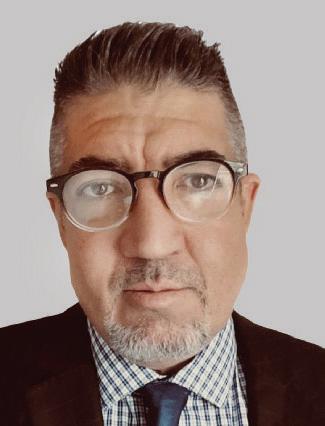
Kennedy Gordon Managing Editor
Kennedy Gordon is The Citizen’s managing editor. CITIZEN PHOTO BY CHUCK NISBETT
Kennedy Gordon is The Citizen’s managing editor. CITIZEN FILE PHOTO
The province does contribute to the forestry industry, but it’s focused more on the new approaches mentioned earlier. One example from the government: “Through the $180-million BC Manufacturing Jobs Fund, the province has committed as much as $70.3 million to forest-sector transition and diversification across 50 projects, which will create and sustain more than 2,500 jobs. Investments are focused on boosting high-quality, made-in-B.C. wood-product lines that create more sustainable jobs for every tree harvested.”
That doesn’t do much good if fewer trees are being harvested. Had it been started 20 years ago, we might be having a different conversation today. But it wasn’t.
That’s misguided. There are people out there who aren’t living in supportive housing that may pose a much more realistic problem.
With Moccasin Flats set for closure this fall, we know many of its residents will reject the structure required in the new trailer housing set up nearby and will return to the urban woods, with no supports, no rules and no barriers. That’s who you don’t want in your backyard.
Rather than seeing sports organizations pitted against the arts community for space and funding, the plan suggests ways to make both thrive in a shared environment, ensuring no sector is left behind. With ongoing investment in smaller projects like the new rink and tourism shop, Prince George is certainly moving in the right direction. But without an overarching strategy that ties these initiatives together into a cohesive vision for the downtown core, we risk squandering a once-in-a-generation opportunity. It’s time for the city to move forward with a unified plan that recognizes the value of a thriving, vibrant downtown and invests in its future.
She could have stayed in the race. It’s likely that Bond would have been easily re-elected as a Conservative, and even as an independent. But she made the call she did, and we can respect that. It’s interesting to consider where BC United would be today had Bond decided to pursue the leadership rather than agree to serve as interim leader of what was then the BC Liberal Party. Would the name change have happened? Would the Conservatives have risen as quickly as they did? Would we be watching an unprecedented political collapse unfold in real time like this? We can’t know. All we can know is that she made this major decision knowing it was right for her and her family, and we can trust that she carefully considered the impact on her constitutuents and her community before she did.
People on the road to recovery need to start their journeys in safe, stable, substance-free surroundings. Edwards provides that.
The Civic Core Plan put forward by the user groups is the local solution we’ve needed — now it’s time to make it a reality.
He deserves council’s full attention and consideration.
We’re not calling for an immediate bailout, but it is something that should be studied. The next government must take a closer look at what can be done to revive and grow the forestry sector. BC depends on it.
Few elected officials in this country can claim a legacy like hers. If you’ve lived here long enough, you’ll likely agree, no matter your politics.
Have your say with a letter to the editor: editor@pgcitizen.ca.
Kennedy Gordon is The Citizen’s managing editor.
OFFICE (8:30a - 4:30p)
OFFICE (8:30 a.m.-4:30 p.m.)
OFFICE (8:30 a.m.-4:30 p.m.)
505 4th Avenue
505 4th Avenue
505 Fourth Avenue
Prince George, B.C. V2L 3H2
Prince George, B.C. V2L 3H2
Prince George, B.C. V2L 3H2
FRONT DESK frontdesk@pgcitizen.ca 250-562-2441
FRONT DESK frontdesk@pgcitizen.ca 250-562-2441
FRONT DESK AND CLASSIFIED frontdesk@pgcitizen.ca 250-562-2441
NEWS AND SPORTS news@pgcitizen.ca
NEWS AND SPORTS news@pgcitizen.ca
NEWS AND SPORTS news@pgcitizen.ca
PUBLISHER publisher@pgcitizen.ca 250-960-2757
PUBLISHER publisher@pgcitizen.ca 250-960-2757
PUBLISHER publisher@pgcitizen.ca 250-960-2757
LETTERS TO THE EDITOR editor@pgcitizen.ca
LETTERS TO THE EDITOR editor@pgcitizen.ca
LETTERS TO THE EDITOR editor@pgcitizen.ca
Letters to the editor are welcome. The maximum length is 300 words. Letters may be subject to editing for length, clarity, grammar, spelling wand legalities prior to publication. Please include your daytime contact information.
Letters to the editor are welcome. The maximum length is 300 words. Letters may be subject to editing for length, clarity, grammar, spelling and legalities prior to publication. Please include your daytime contact information.
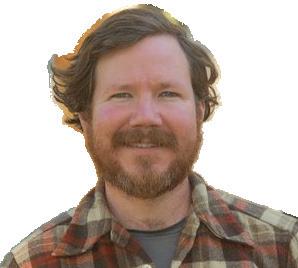
That we would burn food to keep the wheels of progress moving is nothing new.
Starting in the late 1970s we began in earnest growing corn and wheat not to feed people but to brew ethanol and put it in our gas tanks.
Using farmland to produce fuel and not food in an era of rising food prices has nevertheless continued, on both sides of the border. Here in Canada we dedicate around three million hectares of farmland to produce around 2.2 billion litres of ethanol and biodiesel a year, figures that are increasing rapidly.
Originally we decided to burn our food to create a degree of energy independence from Middle East oil. Now it’s got a new goal: climate change.
Apparently we can now burn our increasingly scarce and expensive food to create guilt-free airplane and automobile travel.
Burning food for fuel is of course not cheap and government subsidies and biofuel mandates are required to bring this insanity to market.
Earlier this year the Trudeau government announced $6 million in public funding for a biofuel plant in Manitoba to create jet fuel from food.
This is part of the federal Clean Fuels Fund that aims to rapidly expand the conversion of farmland to so-called low-carbon fuel production with half a billion in annual funding. Here in BC we are leading the charge with the Low Carbon Fuel Standard, a credit scheme that helped get the country’s first stand-alone biodiesel plant established right here in Prince George. The ethanol industry has for years relied on mandates or various provincial subsidies while small farmers growing healthy food see nothing.
The industry is not without its
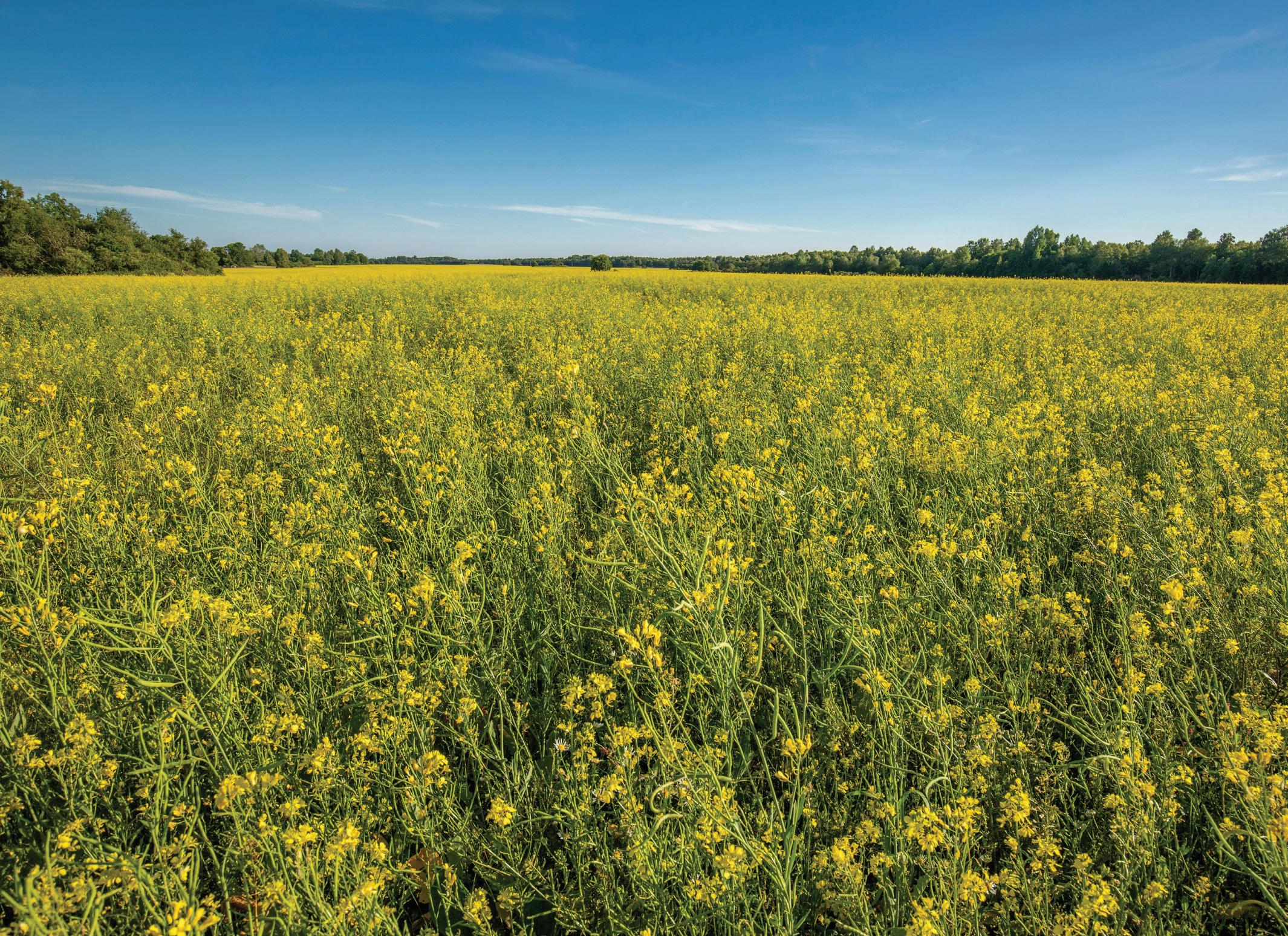
problems, not least of which is that the Americans next door have been flooding the Canadian market with the stuff.
In the US, due to an elaborate, politically corrupt scheme of subsidies and mandates, they now dedicate an astonishing 21 million hectares of farmland (we don’t really know) to produce around 90 billion litres of ethanol and biodiesel per year.
A growing number of experts and observers are criticizing this entire enterprise, and for good reason.
Recent research in the US has claimed corn ethanol is producing much higher carbon emissions than fossil-fuel based gasoline.
This is in no small part because natural areas are being levelled to feed the biofuel plants, which I’m sure we can
expect to see more of around Prince George in coming years. Say goodbye to more PG-area forests for this climate-dumb industry.
Then it’s the crops themselves.
The primary feedstock for biofuel is soil-depleting, pesticide-intensive, GMO roundup-ready corn and canola. When you hear about fertilizer polluting watersheds, it’s primarily these two crops, which require much higher amounts of fertilizer inputs.
When you read about corruption of our pesticide regulators at the highest levels to overturn bans on harmful pesticides like neonics, that corruption was done mainly to protect the canola industry, the primary feedstock for biodiesel. Say hello to more poisons and environmental contaminants around PG
as we expand canola operations.
And obviously there are far more efficient ways to use all that land if the goal is to produce energy.
A Wisconsin study shows that a field of solar panels powering electric vehicles will produce 8,500 per cent more transportation miles than the same field being used for ethanol to power an internal combustion engine vehicle, where 80 per cent of the biofuel energy is consumed just by the harvesting and refining process itself.
As a society addicted to an inefficient design of urban sprawl and globalized supply chains, we will apparently stop at nothing to maintain the illusion this is somehow sustainable. Not even if it means we burn our own food to do so.
James Steidle is a Prince George writer.
PG council rejects plan to cut snow and ice plowing budget
So the bear numbers are going down but we need a paid position in the city? Why does our city council and administration keep trying to spend more money on WANTS. Didn’t they just report we have a massive bill coming with the aging infrastructure we have. Why not focused funds on those replacements first. These decisions seem to be being made by those least bothered by tax increases to fund all these projects and committees.
Alucard
PG council rejects plan to cut snow and ice plowing budget
“Coun. Trudi Klassen said the cost of that driveway-entrance plowing service works out to $3 per person and she considers that money well spent. Coun. Garth Frizzell said the city’s median population is aging upwards and seniors should not be tasked with having to open packed piles of snow on their own driveways after the graders have plowed the street.” Thank you Trudi and Garth. I’m a senior now, lived in PG all my life and snow clearing has been an evolution and I think the city does a fabulous job. Opening driveways came about by necessity as graders became larger and more powerful. With the ice blades, the snow is taken down to the pavement, often leaving large chunks of ice and compact snow at the end of driveways that even a good snowblower can’t handle. So thank you for your consideration.
Ed Denicola
All-weather field centrepiece of Carrie Jane Gray Park improvement plan
Fantastic! Investing in quality recreation facilities is essential for a healthy, active community — especially for kids and teens. This is a smart move by the city, creating spaces where people can stay active and engaged. The long-term health benefits far outweigh the costs and help curb rising healthcare expenses. The impact of inactivity is often overlooked but adds significantly to healthcare costs. The long-term health benefits help to curb rising healthcare expenses and will save us money.
S. Goods
BC
So indirectly, the taxpayer is on the hook for purchasing this property for the sole reason of vagrants destroying the area who are enabled and encouraged to do so by our government.
Municipal and provincial government paid for by taxpayers, mind you.
I wonder if a dumber society has ever existed? How long could this continue before we no longer have access to reliable sanitation and electricity?
How long before food shortages become widespread?
If we keep electing “progressive” governments we will find out.
Editorial: Investing today to secure Prince George’s tomorrow
Conditions in this town will likely continue to deteriorate. This town prospered on harvesting natural resources in the fifty’s, but now what remains of those high paying jobs and industry, is on life support.
Prosperity in this city has steadily been declining for some time now and there is no end in sight.
Forestry is on the ropes, certain political parties want to eliminate oil and gas all together, there are no major construction projects on the horizon provincially, mining is not really flourishing, etc. how are any communities in this province going to thrive, when everyone is loosing their jobs? Whats it being replaced with?
Our down town is literally becoming a ghost town, one building at a time and like it or not, homelessness is tied in with the cost of living. Many people simply gave up.
Talk about managing wealth all you want, but if there are no jobs attracting people and prosperity, PG will continue its steady decline, along with surrounding communities.
Zangief
Editorial: Investing today to secure Prince George’s tomorrow
This is what happens when you spend, spend, spend and don’t manage what you have. You can’t keep coming back to the tax payers, we don’t have it to give.
Dial back all our needless spending and focus on what “needs” to be done, not what you would “like.”
We all “like” new things, but the city has a real history of not staying on top of looking after the assets the city currently has.
The pool and the theatre are prime examples, then there’s the 34 million dollar hole in the ground called a parkade or the $750,000.00 washrooms at Carrie Jane Grey park.
When councillors talk stupidity about borrowing being good for the community, that’s a problem.
No one on council has challenged the city staff to cut every departments budget by 5%, yet every year we waste money having staff bolt rubber speed bumps down in the city hall parking lot.
It’s time the people of Prince George start telling council to do the jobs they were elected to do, that’s actually manage the city by saying NO.
John Zukowski
DD22 Share your views on our stories at
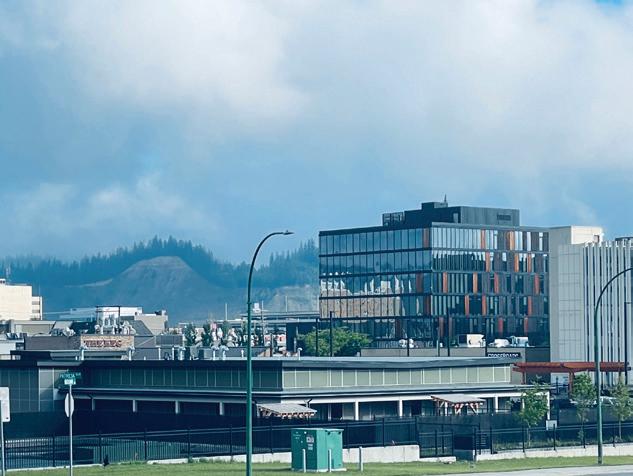


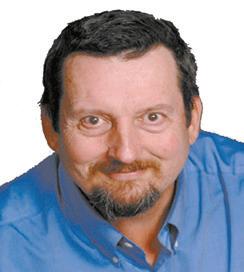
We all breathe the same air. We drink the same water. We live on the same land. Earth is one system, home to a myriad of living organisms from the tiniest toad to the tallest tree. Every living thing is part of it and, for that matter, even the non-living entities are part of it. We are constantly exchanging atoms with our surroundings.
And while we may draw lines on a map and say “this is my country” or “this is my province” or even “this is my land,” those lines don’t really matter to the physical world. Rivers run across
borders. Landscapes are not marked by dotted lines.
I say this because what happens here affects there and what happens there affects here.
A forest fire in B.C. can produce smoke across the prairies. A forest fire in Siberia can result in health consequences for people in Prince George. Dust from the Sahara is picked up and deposited on the islands of the Caribbean. Pesticides from China blow onto the west coast.
We live on one planet and we have to share. (Something we were all supposed to learn in Kindergarten!)
When people say they aren’t an environmentalist, they are ignoring that fact.
But perhaps more troubling is the dichotomy which has developed both at a social level and a political level where we juxtapose the environment
with the economy.
We can’t have an economy if we don’t have an environment. This has been made apparent in Prince George over the past 30 years.
Climate change allowed the pine beetles to infest forests and destroy large tracts of land. The bitter cold snaps of November and/or January necessary to kill the beetles have disappeared.
The consequence was a lot of dead pine beetle infected wood and so, in response, the government ramped up the allowable cut, knowing full well the environment was not going to regrow trees fast enough to replace the excess cut.
I had a conversation about this years ago with the chief forester. The plan and predictions were shared with everyone involved.
But we are only now seeing the
impacts of climate change on the forest industry as there are curtailments in cuts and a lack of fiber.
Environmental impacts can take a long time to manifest in the economy, which is why it is sometimes hard to see the connections.
But we will need to grow more trees. And preferably not monocultures. We will need to be good stewards of the environment in order to have a sustainable economy for the future.
And yes, the above is a simplistic analysis but even a more thorough analysis comes to the same conclusions. Further, similar arguments can be made for any industry.
We all need to think about both the environment and the economy because they depend on each other.
Todd Whitcombe is a chemistry professor at UNBC.


TED CLARKE Citizen Staff
A Prince George family has had its daily routine turned upside down by an aggressive form of childhood cancer that has stricken two-year-old Mavrik Turnbull.
He’s been diagnosed with high-risk neuroblastoma, which set off the growth of a large tumour that takes up much of his abdomen.
The four-inch cubic-shaped growth has wrapped itself around the main aortic artery that connects his heart to his legs and doctors can’t operate to remove it for another eight or 10 months until they are able to shrink the tumour using intensive chemotherapy.
After that, he faces radiation treatment to make sure it doesn’t come

Mavrik was flown by air ambulance on Oct. 26 to BC Children’s Hospital in Vancouver, where he received his first of regular chemotherapy treatments that will keep him hospitalized there for the next 18-24 months.
Now into his fourth day of treatment, Mavrik had a positive day on Tuesday, Derek Turnbull said.
“He’s come off his pain meds, which is nice, and today he had a bit of energy and was up walking around and he was eating for the first time in 10 days,” said Derek.
“He was talking and was a little bit more coherent, which was fantastic, because sitting watching him sit in bed for 10 days was hard.”
Derek and Vanessa Turnbull, Mavrik’s parents, both work in career occupations and Vanessa, a Prince George native who works for the province as a child protection social worker, will likely be off work for the duration of Mavrik’s treatments.
Derek will have to take significant time off his job as a heavy-duty mechanic for Top Lift Enterprises for frequent trips to Vancouver while he remains in Prince George looking after his two daughters from a previous relationship, aged 11 and 12, and their German shepherd/ great Dane dog Tikka.
CONTINUED
“With the nature of this disease I also need to be around Mavrik during the hardest times,” said Derek, in a GoFundMe page post.
“My goal is to work as much as I can, while continuing to be able to support my family in Vancouver and in Prince George.”
His bosses at work said he can continue to run his crew of four in Prince George while working remotely and the company said it will offer him some work while he’s in Vancouver if he’s able.
“Some days I can’t, just because Mavrik’s immune system is super-low,” he said.
Derek says his son is a “happy little man” and a huge hockey fan who always has a mini-stick in his hand. He also attends Prince George Cougars games, where he especially likes spending time with Cougar mascot Rowdy Cat. Derek has also posted a few photos of Mavrik wearing a Leafs jersey.
“I’m a Leafs fan and I try to keep it open for him, so he’s not cursed like I am,” laughed Derek. “He can still pick any team he wants, as long as it’s not Boston.”
For now, Derek and Vanessa are staying close to the hospital at Ronald McDonald House but the funding is limited to a month and they will have to pay a fee to stay there after that, which Derek says he will. As a volunteer firefighter he also has access to Honour House in New Westminster, but that’s a 45-minute drive away from the hospital.
“I have been living in PG for the last 10 years, and have loved PG since moving here,” said Derek. “I love the community, the area, and my family. I also volunteer with the closest fire department to my area (Beaverly Fire Rescue).”
Derek and Vanessa are grateful for the donors who have come forward to support the family and are overwhelmed at the generosity of people who want to help Mavrik.
That’s fantastic,” he said.
“We are looking for this funding to go

Turnbull watches the Prince George Cougars play in Kamloops last Friday after receiving his first chemotherapy treatment at BC Childen’s Hospital in Vancouver. He’s facing treatments that could go on for the next two years.
for the medications and chemotherapies that aren’t covered under Medicare, or our benefits, as well as standard living costs during Mavrik’s extended stay in Vancouver. I will be working as much as I can to pay for all the other bills, life expenses, flights for the kids to visit their brother, and accommodations in Vancouver and our place in Prince George.”
The two Prince George Carl’s Jr. burger restaurants at 2333 Westwood Dr. and 5541 Hartway Dr. have designated Saturday, Nov. 23 as Carl’s Jr. Fundraising Day. The owners plan to donate 10 per cent of proceeds received that day from each restaurant to help the Turnbull family.
As of Tuesday afternoon the Help Little Mavrik Battle Cancer Go Fund Me page has collected $28,425 and is closing in on the goal of $35,000.


FINAL POP-UP INFO SESSIONS: PINE CENTRE MALL, 10 A.M. TO 4 P.M. NOVEMBER 13 & 20

CHRISTINE DALGLEISH Citizen Staff
The more than 20-year-old School District 57 sign has seen better days and will soon be restored with the help of the original carver and his daughter.
Indigenous master carver, artist and knowledge keeper Peter B. George created the carving commissioned by School District 57 (SD57) and it has weathered over time.
Jameel Aziz, SD 57 superintendent, reached out to George to make the request for the sign to be revived.
George wasquick to agree and brought daughter Hailey into the project as his carving apprentice.
“We have certain Indigenous artifacts and pieces of culture within the school district and I just felt that the sign at the Prince George school district office really had deteriorated honestly over the course of time,” Aziz said.
“And Peter was sharing with me details about how it was first created and the number of students that were involved in the process of the creation of the sign, the carving and the painting and I was really quite moved to hear that because I didn’t realize the origins of the sign.”
When the sign was initially installed it was exposed to the weather and over time it became obvious the weather was taking its toll on the sign, Aziz added.
“Then we put a plexiglass covering over top of it but then it was probably too late for the deterioration that occurred,” Aziz explained.
“So we just really wanted the sign refreshed because it is the first thing people see when they enter our offices and I think it really is a very positive acknowledgement to Indigenous culture and the Lheidli T’enneh and other rights holders we have in the Prince George area.
“I am so honoured that Mr. George agreed to revisit the work for us because having the original carver engage in reburbishment of the work isn’t always a simple thing to do and the fact that he wanted again to engage

students. So we’ve had a lot of classrooms visit, a lot of students hands on during the refurbishment process.
I hope that our community and our schools and are families will see this as an act of reconciliation that the school district can engage in and we’re looking forward to engaging in many more.”
Peter, who is a residential school survivor, said he was honoured that Aziz wanted to restore the sign in the proper way.
“He wanted to do it respectfully,”
Peter said. “As you show respect to the culture and the traditions you’re showing respect to not just me for doing the art but to a whole group of people.”
On the sign is the Bear Clan, which is Peter’s clan, and Grouse Clan, which is
would do the demonstrations.
“We used to tease each other, we were ‘the only ones left in captivity’ because they would rope of us off in the foyer,” Peter laughed.
The work is taking place at the Centre for Learning Alternatives, located in the building once known as John McInnis high school.
There is a full wood working shop in the building and taking up one corner is the sign where the artists Peter and daughter Hailey are working their magic.
“There was a lot of black on the wood and then somebody tried to fix it and there’s glue on it,” Peter said. “To try to get it off it’s like chiselling stone.”
The process sees Peter take off the top layer of the carving from an eighth of an inch up to a quarter of an inch.
“All of that had to be taken off the top and that took almost two weeks and since then I’ve been trying to get the worst parts off first,” Peter said, who’s been working on it since school started in September.
“The rest of it seems to come a lot easier after that.”
There are a lot of knots in the wood that present a challenge, especially to newbie Hailey as she tries to reestablish the original intent of the carving.
his father’s clan. There is also the Frog Clan and Caribou Clan displayed along with the Eagle in the centre.
The idea to make the sign a cultural depiction of the Indigenous Clans within School District 57 came about, Peter said, when he was invited to teach a Native Art and Culture program in the schools from primary to secondary.
“I was one of the first few through the door to teach the culture and the history of our people because the only other source was the history books written by non-Native people,” Peter said.
Often students would find Peter in the foyer of the school creating art.
“And they would come and ask me questions,” Peter said.
He and another artist, Rose Thomas,
“I feel very proud because I am only one of two female apprentices that have worked under my father - the other is my sister,” Hailey said. “I’m very enthusiastic about that. I would like to see more females show some interest in carving so I am hoping this will inspire others to try.”
Hailey’s recent focus has been to try and remove the damage to the wood carving and the glue.
“That way my Dad can focus in on the artistic features of the sign,” Hailey said.
“And this is how I learn. By the time we’re done with these spots my hope is that I will be able to start work on the design so that in 10-20 years or so if this needs some work done again I’ll have the skill level where the original artist’s daughter can come do the work.”
CONTINUED ON NEXT PAGE
“I had originally helped carve this and now my work is a lot more in depth this time and then hopefully have the skill to take on more of the artistic designs when it needs to be worked on again in the future,” Hailey said.
“She’s earned herself a set of tools,” Peter said.
“Yes, my Dad passed on his original chisel set to me and I’ve got myself one knife so far and I am working hard to see if I can earn myself another one before this is all done,” Hailey said.
“That’s how I started,” Peter said. “My grandfather gave me his pocketknife.”
Hailey is an artist in her own right and started making Dreamcatchers as a way to commit to learning more about her culture.
“So I have always followed my Dad’s way of doing things, where everything tells a story, so I have taken his knowledge and applied it into my own art and now that I have reached a certain level with my Dreamcatchers what I am wanting to do is take on something like this where I can start at the bottom and work my way back up again,” Hailey explained.
“One thing that I do is name every Dreamcatcher that I make in our traditional language. My Dad always named his pieces and he told stories with them and that’s where I started following in his footsteps but in my own way. And now the idea is that I will be able to do the same thing but with his skill as a carver.”
Hailey said she felt she had to make her own way as a Native artist before she ever stepped into something like carving.
“Now that I have I am satisfied with that,” Hailey smiled.
Woodworking is a fine art.
“And after you’ve finished, you’ve felt like you’ve accomplished something,” Peter reflected.
The School District 57 sign was created with wood donated from McBride. The piece came to Peter as a section of log and until he cut the slab for the sign he didn’t know what he was getting.
“There were a lot of knots and that’s where the repair has come in,” Peter said.
When the sign came into the building to be refurbished, it dried out and started to bow and the end pieces were rotten and had to be replaced, Peter explained.
“This is where the sign was first created,” Peter said, looking around the wood working shop.
“The wood was put through this machinery to make the sign from four different pieces of wood. The shop teacher back then was Mr. Glass and we worked together. With his knowledge and my muscle we dowelled it all together. There are no nails.”
The majority of the hard work is done now.
“We’re getting down to where the wood is solid again,” Peter said. “We’ve got most of the weather rot gone. There were four garbage bags filled with just wood chips from the rotted wood.”
There are students that come through the shop to experience carving which imparts some cultural knowledge to the students first hand.
It won’t be long before the painting starts.
“All of our cultural designs represent something. In Hollywood they further marginalized us and they would say things like ‘low man on the totem pole.’ But traditionally that’s where the story starts on a totem pole and it holds up the rest of the story.”
Peter’s grandfather carved totem poles and as a kid growing up he helped.
“Probably more or less got in his way but he enjoyed it and he started telling me stories and that’s why I enjoyed it so much,” Peter said.
People say Indigenous people didn’t write their history down and that it was passed along in their oral storytelling, he added.
“But it was told in all of our legends and all of our history is in the artwork,” Peter said, indicating the SD57 sign.
Find Peter’s work on Facebook at Peter B. George - Native Art and Culture.
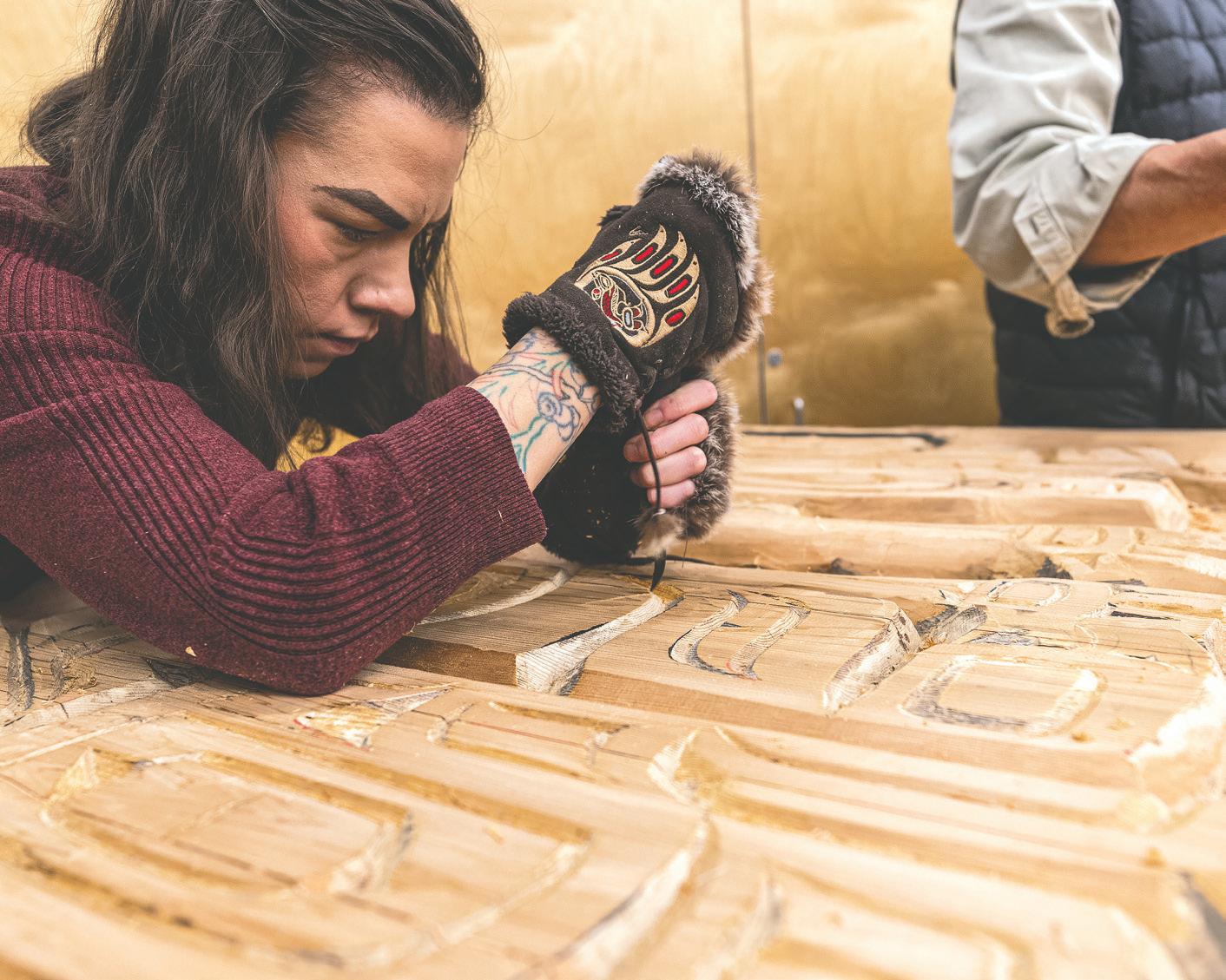
Effective December 1, 2024, BC Transit will cease the sale of legacy fare products to offer more convenient options such as Umo Cash Balance, a digital DayPASS, or a 30-Day Pass. Get ready for the benefits of travelling with Umo and download the Umo Mobility app or pick up a free reloadable Umo card at one of our vendor locations today.
Scan to learn about all available fare products in the Prince George Transit System.

The project is supported by a $50,000 grant from the Department of National Defence
Luna K C, an assistant professor at the University of Northern British Columbia (UNBC), is leading a groundbreaking research project aimed at empowering women and girls to protect themselves against online gender-based violence.
Often, when women and girls experience online harassment, the typical response is to advise them to delete their social media accounts or reduce their online presence. But K C argues that this approach is counterproductive and risks depriving women of their digital rights.
“By advising women to retreat from the digital world, we’re stripping them of their access to important online spaces,” says K C, who teaches in the Department of Global and International Studies at UNBC. “We need to understand cyberspace through a gendered and intersectional lens, because the harms women face online are not only gendered but also disproportionately affect racialized women and girls.”
K C’s project, supported by a $50,000 Mobilizing Insights in Defence and Security (MINDS) Grant from the Department of National Defence (DND), is focused on developing a Women’s Cyber Self-Defense Toolkit.
The goal is to provide women and girls with the tools and knowledge they need to navigate the online world securely and confidently — empowering them to engage on social media without fear, rather than retreating from it altogether.
“This toolkit will offer practical, realworld solutions,” K C explains. “It will help women defend themselves against online violence, boosting their ability to engage online safely and assertively.”
The research adopts a feminist approach, with a core study group that includes women veterans from the Canadian Armed Forces (CAF), women cyber experts, and other diverse participants.
In an effort to build a collaborative framework, K C is hosting a hybrid
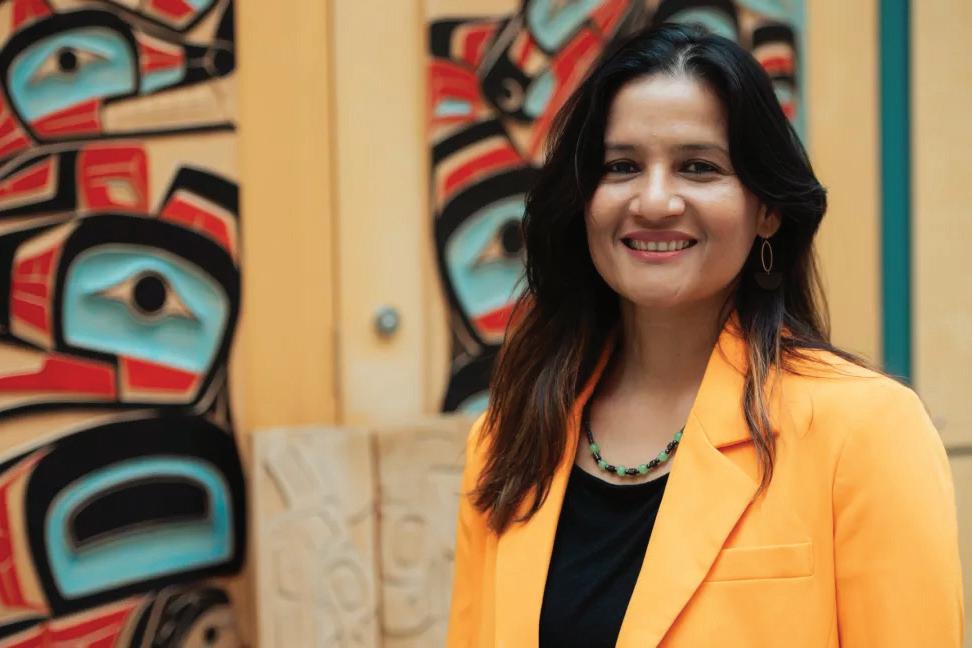
workshop at UNBC’s Prince George campus on Nov. 21. The event will bring together students, faculty, women experts in cybersecurity, and representatives from women’s advocacy organizations to generate key resources, including the toolkit, a policy brief, and a podcast.
“These materials will be shared widely to raise awareness about online gender-based violence and offer practical solutions,” K C says. “Our aim is to create a toolkit that can be used by women and girls everywhere, and eventually share it on a global scale.”
K C’s work is directly aligned with ongoing international efforts to address online violence.
Feminist organizations, as well as bodies like NATO and the Canadian government, have increasingly recognized the serious threat posed by online
This toolkit will offer practical, real-world solutions. It will help women defend themselves against online violence, boosting their ability to engage online safely and assertively.’
violence. The issue is a key focus of Canada’s Third National Action Plan on Women, Peace and Security (WPS) and is particularly pressing for Indigenous women, girls, and two-spirit individuals.
The MINDS-funded project promises to make a significant contribution
to the global conversation on cyber safety and online violence, with K C’s feminist-informed solutions resonating on both local and international levels.
The research also has the potential to inform the Canadian Armed Forces and the Department of National Defence on best practices for securing military women’s online safety.
“My work has always centered on gender, peace, and security,” says K C.
“This project is a natural extension of that. Every woman and girl deserves the right to navigate the digital world without fear, empowered to express themselves freely and safely — claiming their rightful place in the online world.”
For more information about the Women’s Cyber Self-Defense Toolkit and to get involved, visit UNBC’s website or contact K C.
CITIZEN STAFF
With the City of Prince George officially proclaiming November 13-20 as Inspiring Women Among Us (IWAU) Week, the University of British Columbia is hosting a celebration of women’s leadership, empowerment and action against gender-based violence.
The week-long event features a slate of workshops, talks, performances and panel discussions aimed at fostering inclusive dialogue and community engagement.
It offers opportunities for all genders to come together to listen, learn and share.
This year’s theme, Caring in the Time of Polycrisis, explores how individuals and communities can support one another through moments of social, political, and environmental upheaval.
The opening event was held Wednesday, Nov. 13, with keynote speaker Ethel Tungohan talking about Care Activism: Learning from Migrant Domestic Work
Room 7-212
Women in Science panel discussion
• Tuesday, Nov. 19, 3:30 p.m. to 4:30 p.m.
• Featuring Penina Sara-Lynn Harding, Alexia Constantinou, Kathy Lewis and Krista Sittler
• Location: Room 7-238 and online
Transgender Day of Remembrance ceremony
• Wednesday, Nov. 20, 11 a.m.12:30 p.m.
• Location: Omineca Arts Centre, 369 Victoria Street
• Commemorative Ceremony for the National Day of Remembrance and Action on Violence Against Women, Wednesday, Nov. 20, 1 p.m. to 3 p.m.
• Location: UNBC Teaching & Learning Atrium















Xatsull First Nation is calling on the government of British Columbia and Osisko Development Corp. to halt the proposed Cariboo Gold Project, located southeast of Prince George, until their concerns are addressed and they grant consent.
“The province has shown it is failing to responsibly regulate this sector in our territory,” said Kukpi7 (Chief) Rhonda Phillips. “It’s not the 1980s anymore. By ignoring our very serious concerns about the Cariboo Gold Project, both the province and Osisko are neglecting their commitments to reconciliation and to upholding the rights of Indigenous peoples.”
Meanwhile, Osisko Development Corp. announced Thursday, Nov. 7 that the Mines Act permit for its Cariboo Gold Project has been referred for a decision to the statutory decision maker at the BC Ministry of Energy, Mines and Low Carbon Innovation.
The company also announced that the review of its Environmental Management Act permits has been completed, with those permits expected to be referred to the statutory decision maker in the near future. Osisko anticipates receiving final decisions on both
permits in the fourth quarter of 2024.
The Cariboo Gold Project, which would be one of the largest gold mining operations in the region, lies within Xatsull’s traditional territory.
Osisko states that the project covers an area of 192,000 hectares. The underground operation is expected to produce about 1.87 million ounces of gold over a 12-year mine life.
The project has been at the centre of a multi-year permitting process. In a statement, Osisko reiterated its commitment to advancing the project in partnership with Indigenous nations. This includes years of consultation and the signing of participation agreements with the Lhtako Dené Nation (2020) and the Williams Lake First Nation (2022).
While the company has yet to reach an agreement with the Xatsull First Nation, it stated that it remains committed to ongoing engagement with the community, including following the issuance of any Mines Act or other permits.
“We have made good faith and reasonable efforts in the past two years to reach an agreement with Xatsull First Nation, offering financial and other benefits similar to those agreed upon with other Indigenous communities,” said Sean Roosen, chair and CEO of Osisko Development. “Our focus has always
been on ensuring that the Cariboo Gold Project is both beneficial and viable for all parties involved.”
Xatsull leaders, including Phillips, argue that despite months of negotiations, there has been minimal progress in addressing their concerns. Phillips said the province and Osisko must engage in a genuine, consent-based decision-making process aligned with the principles of the Declaration on the Rights of Indigenous Peoples Act (DRIPA) and the United Nations Declaration on the Rights of Indigenous Peoples (UNDRIP).
The Xatsull people call the proposed gold mine, located in the Wells-Barkerville area, a source of tension due to what they call its potential to harm local ecosystems and disrupt their cultural practices.
Xatsull’s concerns include the potential negative impact on the threatened Southern Mountain subspecies of the Barkerville Woodland Caribou herd, as well as broader cumulative environmental effects that could severely restrict the First Nation’s ability to practice traditional activities like hunting, fishing, and gathering medicinal plants.
Xatsull has also raised alarms over the potential harm to human health and cultural well-being. The risk of exposure
to contaminants through traditional foods and water, as well as the loss of access to cultural sites, could have long-term consequences for Xatsull’s spiritual and social fabric, the release states.
The company reports that it addressed 1,700 comments during the environmental assessment review, and through multiple rounds of consultations with the Mine Review Committee, responded to over 1,800 additional comments as part of the permit application process.
Despite Xatsull withholding its consent for the project, the provincial government issued an environmental assessment certificate for the project in October 2023. Phillips said the failure to meaningfully address Xatsull ’s concerns after more than a year of discussions signals a disregard for Indigenous rights.
Roosen expressed confidence that the provincial government would uphold its responsibilities in the decision-making process, and reiterated the company’s intention to continue engaging with the Xatsull First Nation, particularly in sharing the socio-economic benefits of the project.
Smoke rises after a vehicle went up in flames after exploding on a city street Saturday morning. It happened on Loyola Drive, across the street from Malaspina Elementary School in College Heights. There was no word on injuries.

CONTINUED FROM PREVIOUS PAGE
“Consultation on this project has been robust and thorough, and we are confident that our record reflects our commitment to meeting our obligations. We look forward to continuing to work with all stakeholders, including Xatsull First Nation, to ensure a meaningful and sustainable outcome,” he said.
“We emphasize that Xatsull would like to see sustainable resource development in our territory, but it’s remarkable that in 2024 the province and Osisko continue to push ahead with this mine without our consent,” she said.
“If permitting moves forward without addressing our concerns, any permits issued will be highly vulnerable to legal challenges.”
In addition to its ongoing negotiations with Osisko, Xatsull is calling on the
provincial government to prioritize a collaborative process that would resolve outstanding issues before the Cariboo Gold Project proceeds. The First Nation has warned that without such a process, the project could face significant legal risks, especially in light of the Supreme Court of Canada’s ruling in the Tsilhqot’in case, which found that projects initiated without Indigenous consent could be required to cancel if they unjus tifiably infringe on Aboriginal title.
Xatsull is also considering a legal chal lenge based on cumulative industrial impacts, similar to the successful case brought by the Blueberry River First Nations, which challenged the province over cumulative effects from industrial development in their territory.
“We will not stand down until we are treated respectfully as partners and acknowledged as Aboriginal title holders and decision-makers,” Phillips said.
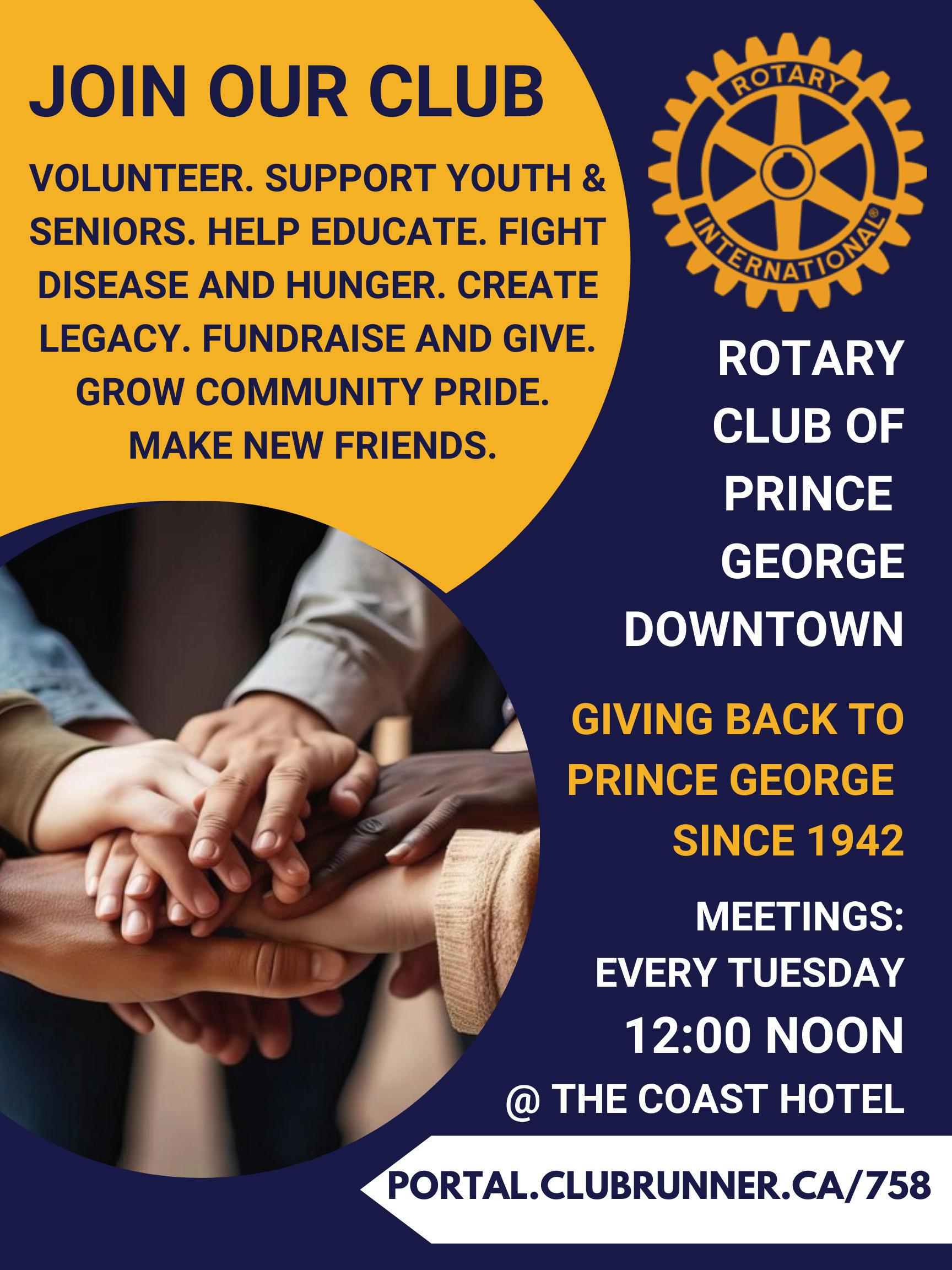

JOIN OUR CLUB VOLUNTEER. SUPPORT YOUTH & SENIORS. HELP EDUCATE. FIGHT DISEASE AND HUNGER. CREATE LEGACY. FUNDRAISE AND GIVE. GROW COMMUNITY PRIDE. MAKE NEW FRIENDS ROTARY CLUB OF PRINCE
GIVING BACK TO PRINCE GEORGE SINCE 1942 MEETINGS:
The City of Prince George is now accepting applications for the 2025 intake of the Celebrate PG Grant, a funding initiative aimed at supporting registered non-profits in creating or enhancing events that promote community pride and attract visitors to the city.
Applications for the grant are open annually, with the deadline for this year’s intake set for Dec. 13 at 4:30 p.m.
Grants range from $5,000 to $10,000, depending on the scope and nature of the event.
Emerging events may qualify for smaller amounts, while established, signature events — those with a minimum three-year track record and an operating budget of at least $100,000 —are eligible for higher funding.
To be eligible for the Celebrate PG Grant, applicants must be registered non-profit societies, and the event must

take place within the city of Prince George and be open to the public. The grant can be used to fund various
event enhancements, including:
• Bringing in high-profile entertainers or adding new activities
• Expanding a one-day event into a multi-day affair (preference is given to multi-day events)
• Marketing and promotional expenses
However, the grant does not cover standard event expenses such as operational costs, staffing, administrative fees, or costs incurred prior to grant approval.
It also does not fund fundraising events, sports competitions, political gatherings, trade shows, or other specific types of events.
In 2024, the City awarded nearly $30,000 in Celebrate PG Grant funding to several popular events, including Pops in the Park, the Pride Picnic, Method Dance Society’s Community Moves, the Coldsnap Music Festival, and the Wild About Lheidli T’enneh/Prince George outdoor festival.
For more information on eligibility, funding guidelines, and the application process, visit www.princegeorge.ca.
CITIZEN STAFF
The Alzheimer Society of B.C. is calling for a volunteer to take on the role of walk committee chair for the 2025 IG Wealth Management Walk for Alzheimer’s in Prince George.
Scheduled for Sunday, May 25, 2025, this event is a major fundraiser in the fight against dementia, and the society is looking for a dedicated leader to help organize and drive the community involvement necessary to make the event a success.
The annual Walk for Alzheimer’s is Canada’s largest fundraising initiative for Alzheimer’s disease and other forms of dementia.
It raises essential funds for programs, services, and research while also promoting a message of inclusion and hope for the estimated 85,000 British Columbians currently living with dementia, as well as their families and caregivers. In Prince George, the event relies on the leadership of a committed Walk Chair
to ensure it runs smoothly and achieves its goals.
“Being a walk chair is an incredibly rewarding role,” said Laurie DeCroos, Northern Indigenous Community Outreach and Collaboration at the Alzheimer Society of B.C. “It’s an opportunity to bring your community together and make a real difference for people affected by dementia.”
Walk committee chairs play a critical role in organizing the event, which involves coordinating volunteers, fundraising, and engaging local businesses and community members.
These volunteer leaders serve as ambassadors for the Alzheimer Society of B.C., building relationships with participants and sponsors, and fostering a supportive community environment for people living with dementia.
The position requires someone with a strong connection to their community, excellent organizational skills, and the ability to work alongside society staff to engage participants, promote
the event, and drive fundraising efforts. Walk chairs also have the opportunity to create a unique experience for participants by honoring local individuals or groups who have been impacted by dementia.
“We are looking for someone who can bring passion and energy to this role,” said Nick Dunn, volunteer co-ordinator with the Alzheimer Society of B.C. “The Walk Chair plays a vital role in ensuring the event’s success and, in turn, helping to improve the lives of people living with dementia.”
Volunteers like Marisa Gagne, who co-chaired the Walk for Alzheimer’s in Burnaby in 2024, know firsthand the impact of this role.
Gagne, whose family has been personally affected by dementia, joined the event as a way to contribute to the cause.
“Organizing the Walk really feels like we are part of a community, working together for something important,” she said.
Andrea Campbell, a long-time volunteer in Vernon, echoed Gagne’s sentiment.
She explained how she and her committee have gone above and beyond to celebrate honorees in creative ways, from vibrant tie-dye themes to backyard family barbecues. “As a walk chair, you have the freedom to bring your ideas to life and make the event special for everyone,” Campbell said. “It’s also a great way to start important conversations about dementia in your community.”
With walk chairs needed in several communities across the province, including Prince George, the Alzheimer Society of B.C. encourages those with leadership experience and a passion for supporting people affected by dementia to consider this opportunity.
Those interested in becoming the 2025 walk chair for Prince George are encouraged to contact Nick Dunn at 604-742-4908 or via email at ndunn@ alzheimerbc.org.
RCMP investigators work at the scene after cordoning off two empty lots between 15th and 17th Avenues on Victoria Street on Thursday, Nov. 7. Police put out the call to the public for help after a fatal shooting the night before in a downtown vacant lot across from the Victoria Medical Building, asking for anyone who was in the area between 11:35 p.m. and 11:50 p.m. to come forward with information. They are also seeking video footage from dash cams, cell phone footage or video surveillance systems for the same time period. RCMP spokeseperson Cpl. Jennifer Cooper called the incident a targeted attack.

Prince George RCMP are on the lookout for two suspects connected to a robbery early Sunday, Nov. 3 near Ferry Avenue and Westwood Drive.
At about 12:30 a.m., a male victim was approached by a man and woman who demanded he hand over his wallet and backpack. The male suspect showed he had a knife and the man handed over his backpack.
Police were called to the scene soon after and surrounded the area but could not locate the robbers.
The male suspect is described as caucasian, between 16-20, with a slim build, and between five-foot-four and five-footfive. He was dressed all in black.
The female suspect is described as caucasian, between 18-20, slim build, between five-foot-four and five-foot-five, with brown hair and also dressed all in black
No injuries were reported.
Two women face charges after an incident that saw them allegedly switch places in the front seat of a vehicle after a collision, then hit the same car again as well as a pedestrian nearby.
Prince George RCMP officers were called after a vehicle hit a car parked in a lot on the 1600 block of Central Street East at about midnight Nov. 5.
“Police officers arrived at the location and found two women in a small, black SUV, which was stuck to a pickup truck,” stated Cpl. Jennifer Cooper, media relations officer for the Prince George RCMP, in a release. “Witnesses stated that after the first collision, the driver and passenger switched spots in the vehicle. When the now-driver attempted to leave the parking lot, she ended up striking the same parked car as the original driver as well as a witness who was near the parked vehicle.”
The two women were each arrested on suspicion of impaired operation of a motor vehicle and tested over the legal limit.


Thursday November 28th, 2024 8:00 am


Special Guest Speaker: Jasmit Phulka
Canadian Freestyle Wrestler Medal Winner from both Pan AM and Commonwealth Games
Guest Speaker Sponsored by:

Sweeney Todd on Friday, Nov. 15 to Sunday, Nov. 17 at Vanier Hall. Sweeney Todd offers the infamous musical tale of a murderous barber returned from exile to avenge his wife. Music director at PGSO, Michael Hall, will conduct the symphony. Tickets at www.pgso.com/ concerts/Sweeney-Todd.
Sterling Scott – The Golden Buzzer Tour goes Friday, Nov. 15 at 7:30 p.m. at Crush Nightclub, 1192 5th Ave. Join us for an unforgettable comedy show with the hilarious Sterling Scott, known for his side-splitting punchlines and Golden Buzzer-worthy performances. Tickets are $20 at www.eventbrite. com/e/sterling-scott-the-golden-buzzertour-tickets.
The PG Italian Centre is offering homemade, authentic Italian pasta, meatballs, sauce and baking for the Christmas season to be ordered until Saturday, Nov. 16. Lasagna 8x12 tray for $37, large meatballs one dozen for $25, gnocchi 1.2 pounds $15 and marinara sauce 24 ounces $10. Pre-order by email at orderspgic@gmail.com and pre-pay by e-transfer pgitalainclub1@gmail.com. Pick up is Sunday, Nov. 24 from 1 to 3 p.m. at the PG Italian Centre downtown at 1209 Fifth Ave. during the Christmas bake sale. For more information visit on Facebook or go to www.princegeorgeitalianclub.com.
For the Love of David Bowie goes Saturday, Nov. 16 at 8 p.m. at Omineca Arts Centre, 369 Victoria St. Come join us at the Omineca Arts Centre for a night dedicated to the iconic musician David Bowie! Dance the night away to his greatest hits and a wild


mix of glam rock, dance punk, disco and house. DJ Larry (2nd Thoughts) spinning vinyl all night. Kick off with David Bowie Hour from 9 to 10 p.m., then lose yourself to a night of feel good music curated by one of PG’s finest DJs. Cash prize for best outfit! Tickets are $20 at www.eventbrite.com/e/ for-the-love-of-david-bowie-tickets.
My Eyes Are Fuses Book Launch & Reading goes Saturday, Nov. 16 from 7 to 9 p.m. at Books & Co., 1685 Third Ave. With vivid imagery and striking allusions, Norah Bowman’s My Eyes are Fuses is feminist mythology brought to life. Local authors Betsy Trumpener and Sarah de Leeuw will provide opening readings to the launch of Bowman’s latest collection,
released by Caitlin Press.
Live Pro Wrestling goes Friday, Nov. 15 and Saturday, Nov. 16 at 5:45 p.m. at the Prince George Civic Centre. Two great live shows. VIP Doors open at 5:45 and starts at 6 p.m. General doors open at 6:30 p.m. and bell at 7 p.m. sharp. Tickets are $25 at the door or $20 in advance at the Scrapbook Zone, 3899 18th Ave., or J&A Stereo +, #5-1839 First Ave., and online at www.ticketseller.ca/tickets/event/ the-primetime-tournament.
Immaculate Conception School
Craft Fair goes Saturday Nov. 16 from 10 a.m. to 4 p.m. at 3285 Cathedral Ave. Join the event for some holiday cheer and crafts to get a jump start on your holiday shopping while supporting local vendors.
An Evening with climate sci fi author Premee Mohamed goes Monday, Nov. 18 at 7 p.m. at Books & Co., 1685 Third Ave. Premee Mohamed is a multiple award-nominated Indo-Caribbean scientist and speculative fiction author based in Edmonton, Alberta. She is an assistant editor at the short fiction audio venue Escape Pod and the author of among others, the Beneath the Rising series, the Annual Migration of Clouds series, and Books & Co staff favourite, The Butcher of the Forest.
Artisan Fair presented by the Aboriginal Housing Society of Prince George goes Saturday, Nov. 23 from 1 to 3 p.m. at 1917 17th Ave. Showcasing fine arts and crafts for sale, offered by local merchants.
CONTINUED ON NEXT PAGE
Alex Mackenzie’s Hungry for Laughs Comedy Tour goes Saturday, Nov. 23 at 7:30 p.m. at CN Centre. Get ready to embark on an extraordinary evening of entertainment as the show returns to Prince George, now larger and more spectacular than ever. This exclusive event showcases two of Canada’s comedy giants, the swiftest rising star in Australian comedy, and a worldclass magician, ensuring an unparalleled show that caters to every taste. Partial proceeds of each ticket goes to a local charity. Tickets are at www.ticketsnorth.ca/event/hungry-for-laughs.
G2G Annual Tea, Bake Sale and Craft Fair goes Saturday, Nov. 30. Proceeds support the Stephen Lewis Foundation. 10 a.m.-3 p.m., Our Saviours Lutheran Church, 3590 Dufferin Ave. (just off Ospika and Massey). Lots of parking.
Games Night goes every Thursday at 7 p.m at Spruce Capital Seniors Centre, 3701 Rainbow Drive. Come on down and join in a game of backgammon, checkers, crib or better yet try out the pool table or dart board, please bring your own darts. Open to everyone for a $5 drop in fee.
Prince George Farmers’ Market goes every Saturday from 8:30 a.m. to 2 p.m. at Third & Quebec until Oct. 26 where visitors will find about 100 vendors offering everything from local vegetables, ethically-raised grass-fed meats, baking, fruits, hot foods, coffee, honey, jams and jellies, preserves, and a wide



variety of artisan products including jewellery and crafts.
Craft & Chat at the main branch of the Prince George Public Library goes every Saturday from 1 to 3 p.m. in the magazine corner, second floor, where fibre artists are invited to bring their latest projects to share, vent frustrations, brag about successes, get and give help and join in lively discussions. Snacks provided. This event is in partnership with Great Northwest Fibre Fest.
Parkinson Support Group meetings are the third Saturday of each month at 1 p.m. at the Spruce Capital Seniors
Centre, 3701 Rainbow Drive. Meetings are informal and are for sharing information about slowing down the progression of PD. There are guest speakers, special events and biweekly exercise sessions and positive social interaction. Use lower parking lot beside ball diamond to access the seniors centre.
Story Walk at Duchess Park is open to the public. Each story panel is facing the paved walking path and is not located in the dog park itself. The program is available rain or shine so participants should dress for the weather. The

story is changed on a monthly basis to keep it fresh and exciting.
Trivia Night at Nancy O’s goes every other Wednesday at 8 p.m., 1261 Third Ave. There are three rounds per game, each round has five themed questions and five music questions. he winning team gets a custom Nancy O’s Trivia trophy and a round of drinks, their photo on the wall that goes into the winners’ book after two weeks. Those caught cheating will be publicly shamed and labelled as cheaters –good wholesome fun. Book a spot t 250-562-8066.
Omineca’s Coffee House Open Stage is every Sunday, 369 Victoria St., from 3 to 7 p.m. Everyone is welcome to step up and share their talents, stories and art forms of all kinds including but not limited to musical, literary, comedic and performative expressions of our diverse community. Refreshments and snacks by donation. Sign up is on-site. There are some house instruments provided but feel free to bring your own creative tools for expression. First-timers and emerging artists are encouraged to experiment and collaborate with others. Please share and invite friends and family to build audience, engage and cheer on local artists in a fun, relaxed and safe environment.
If you’ve got an event coming up email us at news@pgcitizen.ca to offer details including name of the event, the date, time and location, ticket price and where to get them and a little bit about what’s happening, too. LOCF

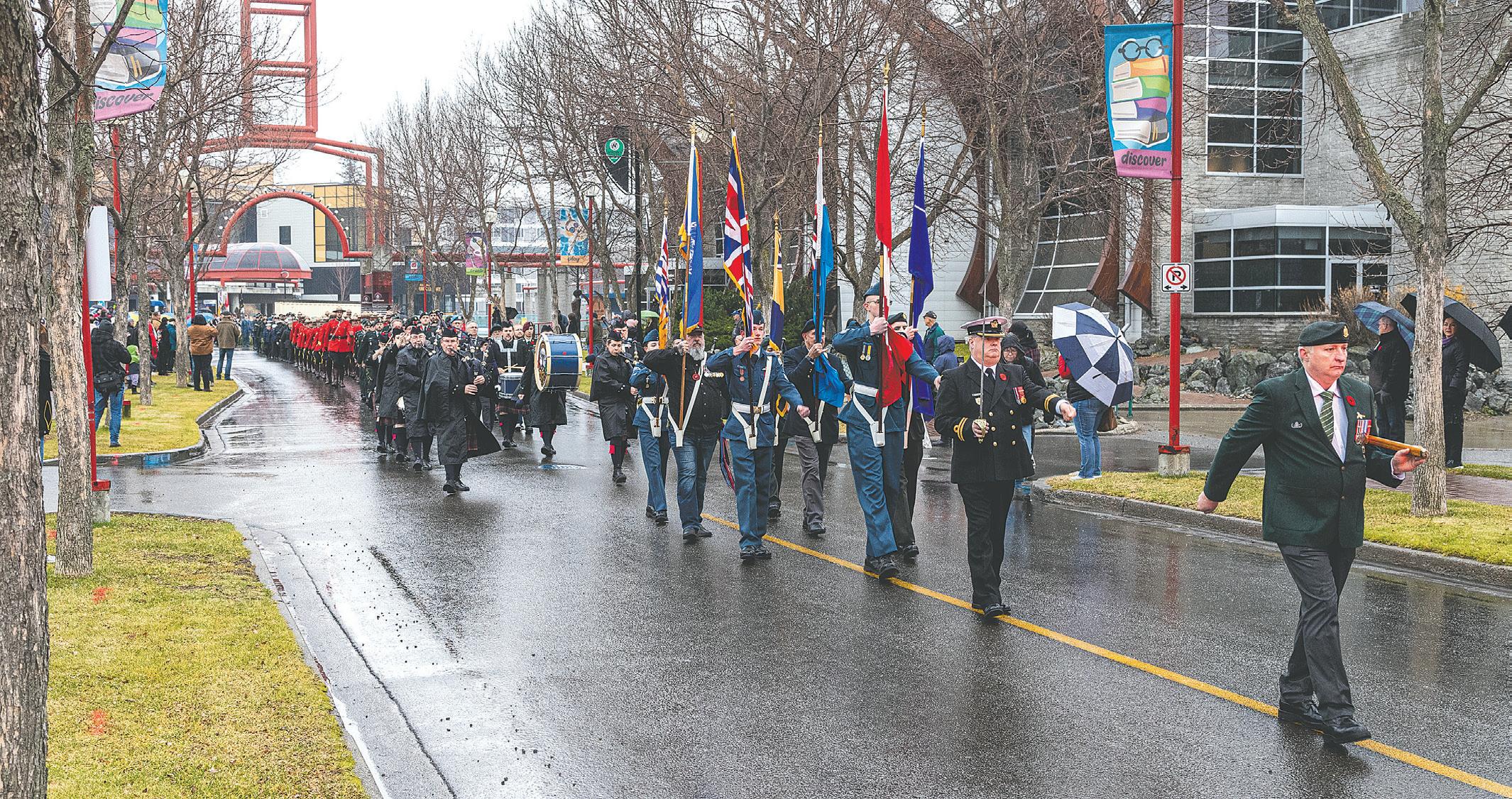

Prince George pays tribute to those who made the ultimate sacrifice
LEFT: Veterans, Rocky Mountain Rangers, first responders and others follow the Colour Guard and the Prince George Pipes and Drums as they lead the parade from the Civic Centre to the Cenotaph for the conclusion of Monday’s Remembrance Day Ceremony.
BELOW LEFT: Prince George - Valemount MLA Rosalyn Bird leads the veterans from Veterans’ Plaza following the Remembrance Day ceremonies.
BELOW RIGHT: Una Scarr, 4, places her poppy at the Cenotaph after the city’s Remembrance Day ceremonies.
BY
CHUCK NISBETT
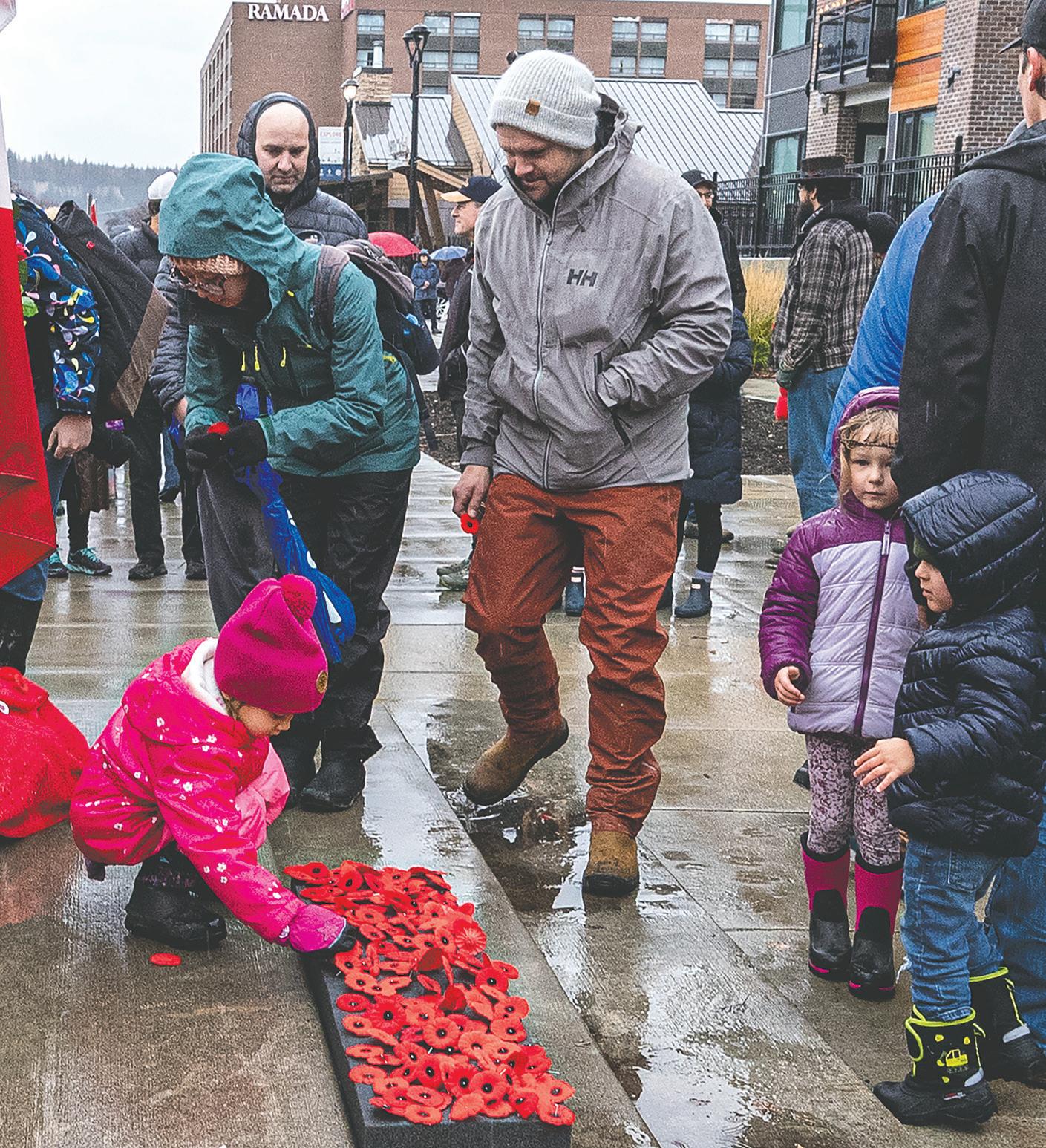
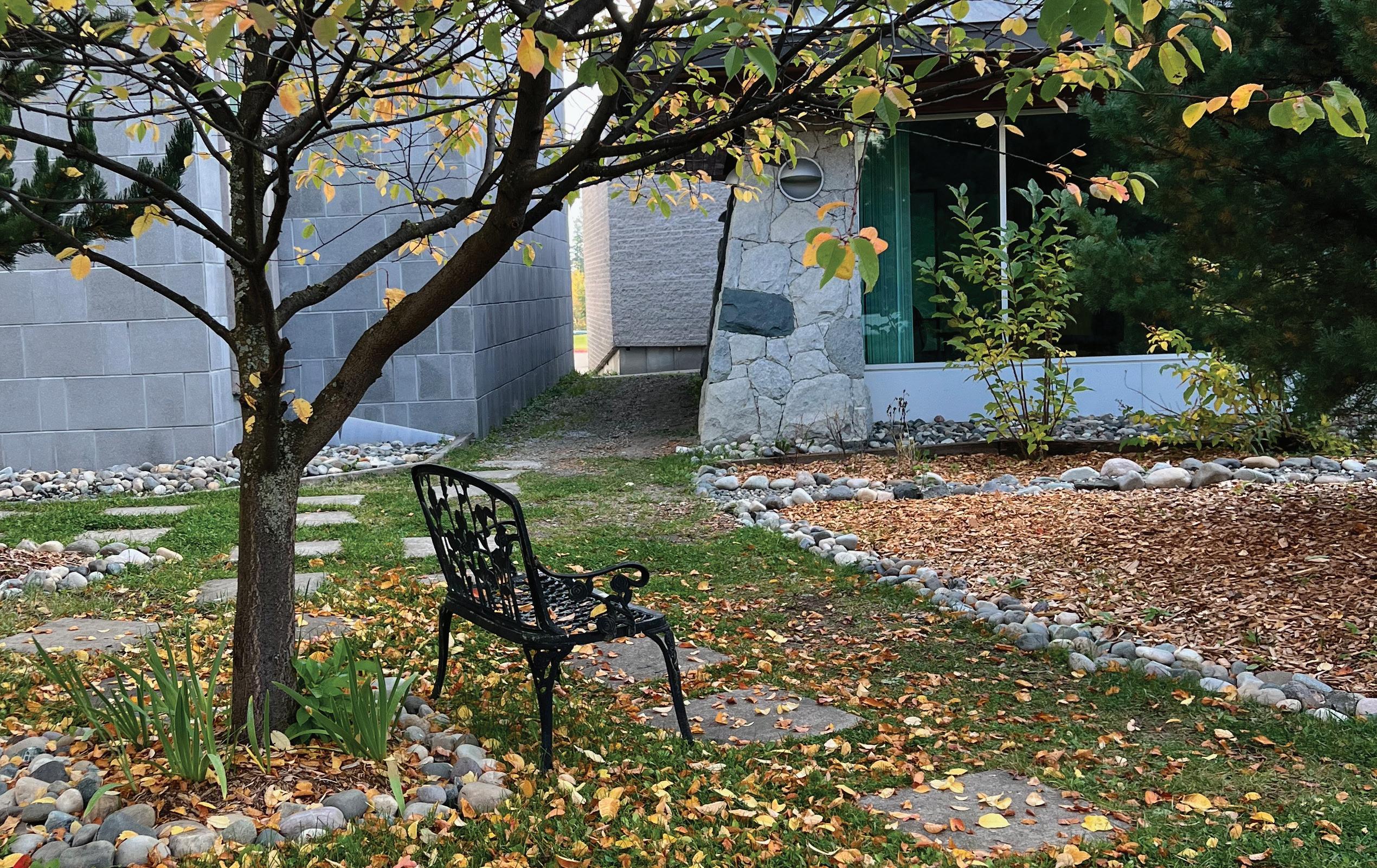

AUTHOR: CALEB MUELLER
On October 26, a group of us from the UNBC Outdoors Club set out for Caledonia Mountain, a hidden hike about 2-3 hours from Prince George. It was a very rainy morning, which made it very difficult to get to the meeting spot, and a few people who said they were going were no-shows. Fortunately, having less people show up made driving there much faster, since we only had one car. Getting there required navigating the Bowron and Tumuch Forest Service Roads, where loose gravel makes for a cautious but fun drive. As we drove, I mentally prepared myself for 4-6 hours in the pouring rain and wet snow.
Luckily, once we got to the trailhead the rain and snow had stopped, our reward for showing up to brave the elements. Our adventure began at the end of a narrow road off Tumuch FSR, where we
were immediately challenged by a creek crossing on large, frost-covered logs. Once across, we entered a second-growth spruce forest that led up to a more open, yet barren area. This section seemed like it had burned long ago, leaving muddy terrain that hadn’t fully regrown. Halfway through this clearing, the snow began to deepen, with each of us taking turns creating a trail.
As we continued past a large pond, we tried to reach the ridge using an alternate route by zigzagging through deep snow. Small balls of snow kept forming underfoot and rolled down, gathering size in the classic “snowball effect.” At this point, one of my gaiters decided to break, letting a generous amount of snow enter one of my boots. This didn’t really matter though, as my socks were already pretty wet. The real challenge began as we approached the ridge, where we were hit by some of the strongest winds I had ever experienced. Rain jackets were hurriedly thrown on, and everyone fought to keep their balance and prevent their gear from blowing away. The wind was relentless, making it hard to stay upright.
At the summit, we found a sheltered depression in the rock to escape the wind and enjoy a much-needed lunch. Despite the fierce weather, the breathtaking views of snow-covered peaks and vast wilderness around us made it all worthwhile. Even though the sun wasn’t setting, the horizon was glowing a beautiful orange, making it look like the entirety of western BC was on fire.
On the descent, we practically ran down the ridge, using the snow as a soft cushion in a style similar to scree skiing. Outdoors Club Executive Ben decided to try and roll down, which ended up being pretty brutal with his pack still on. Our pre-made trail from the hike and gravity made the return much easier, though the clearing was now muddier and slipperier than ever, resulting in a few memorable wipeouts. In total, we covered 9.09 km with 978 meters of elevation gain, pushing through snow, intense wind, and muddy terrain. We congratulated each other for showing up even though we were expecting a miserable rainy day.
A detailed description of how to get to this trailhead is available on the Caledonia Ramblers website. An
AWD or 4x4 vehicle is definitely required if you want to drive there in the fall or winter, unless you want to add a few kilometers onto your hike from the Tumuch FSR.
Join Us!
If you are a UNBC student, you can join the Outdoors Club if you want to go on fun, challenging trips like this!
Trip Statistics:
Distance: 9.09 km
Elevation Gain: 978 meters
Location: ~2-3 hours from Prince George
Required: AWD/4x4 vehicle (fall/winter)






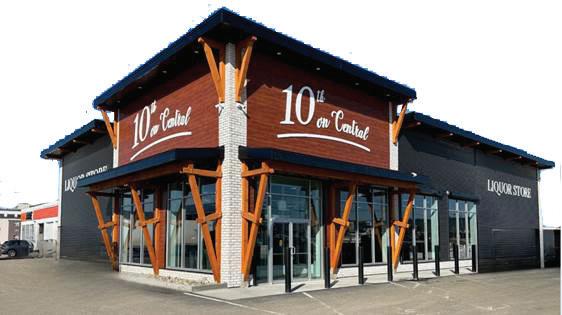
AUTHOR: ANONYMOUS
“Congratulations!” he said with a big smile, as if this was a huge achievement. Our mutual friend had just shared the news of his new relationship, and my former boyfriend quickly offered his enthusiastic approval.
It struck me as odd, though not surprising. Over the past three years, I’ve noticed that it’s rarely about the milestones people work so hard to achieve — not the promotion they’ve earned, not the side business they’ve been building from the ground up, and not the fact that many of us have been navigating life solo after tough breakups and hardships. No, the loudest congratulations always seem to come when someone enters a new relationship.
“Wow, that’s amazing! I’m so happy for you! Well done!” It almost feels as if finding a partner holds more weight than any personal accomplishment or growth.
I’m happy for my friend, of course, and I’m sure his new girlfriend is wonderful. But I can’t help wondering why this is what everyone is so quick to
celebrate. Does having a new partner really outrank all the other forms of success or happiness we work so hard for?
Since I moved to this new place, I’ve spent time rediscovering who I am, strengthening friendships, and growing in ways I never imagined. Yet none of that has ever sparked the same level of excitement or praise. Is it easier to celebrate a new relationship than to acknowledge the more subtle but equally meaningful victories in life?
Maybe I should check if I’m writing this out of unprocessed feelings about my ex.
It’s not about being bitter or resentful, but it does make me question our cultural priorities. Why do we place such emphasis on romantic relationships, as if they are the ultimate measure of success? I’ve known love in so many forms—through friends, family, and myself. But somehow, those things don’t seem to carry the same weight.
So yes, I’ll congratulate my friend because I’m genuinely happy for him. Still, I’ll also remind myself that the truest celebrations are the ones that recognize how we grow, whether in relationships or on our
By the way, congratulations to all the incredible humans defending their research this month — that’s also worth celebrating!

Author: Aubrey Potschka
Since 1999, Transgender Day of Remembrance (TDoR) has been held globally on November 20 to honor transgender lives lost to violence and hate. This solemn occasion often concludes Transgender Awareness Week, which runs from November 13 to 20.
This year, the University of Northern British Columbia (UNBC) will observe TDoR as part of Inspiring Women Among Us’s (IWAU) week-long series of workshops and speakers. IWAU, in collaboration with the Northern Pride Centre, will host a ceremony on Wednesday, November 20, from 11:00 a.m. to 12:30 p.m., followed by a brunch. The exact location will be announced on their website, iwau.ca, and shared on social media.
Transgender and gender-diverse individuals are those who live as a different gender than the one assigned to them at birth. Unfortunately, they experience disproportionately high rates of violence and suicide attempts compared to their cisgender (non-transgender) peers. According to Marci Ien, Canada’s Minister for Women and Gender Equality
and Youth, 70% of trans youth have faced sexual harassment or assault. A study by the Canadian Centre for Justice and Community Safety Statistics further highlights that trans teens and adults experience more violence than their cisgender counterparts.
This year’s TDoR is particularly significant for Canadians due to a rise in anti-trans legislation targeting youth over the past two years. Provinces like Saskatchewan and New Brunswick have enacted laws restricting the use of transgender students’ chosen names and pronouns. In some instances, these laws mandate that teachers inform parents if a child is transgender and require transgender students to consult with a psychologist or social worker. Alberta’s provincial government is also expected to introduce similar legislation this fall. A study published in Nature Human Behaviour indicates that such policies significantly increase the risk of suicide among transgender youth.
Hostility towards transgender individuals isn’t confined to legislation. In June 2023, a former student attacked a gender studies class at the University of Waterloo, stabbing two students and a professor. The assailant has since pleaded guilty to charges
related to the attack.
Small acts of support can make a significant difference. Using a transgender person’s chosen name, for example, can reduce the risk of suicide, as reported by Reuters. To foster a more inclusive environment, IWAU is hosting a “Lunch & Learn” event titled “Allies Supporting Queer Friendly Spaces—An Introductory Conversation” on Friday, November 15, from 11:30 a.m. to 1:00 p.m. in the Bentley Centre, room 7-172 at UNBC.
Students seeking a 2SLGBTQIA+ safe space on campus are welcome at the Northern Pride Centre located in room 6-344 of the NUSC building. The Centre offers comfortable seating areas, a library with a wide range of fiction and non-fiction books, and resources about the 2SLGBTQIA+ community.
If you or someone you know is experiencing suicidal thoughts, help is available. Call 9-8-8 to connect with a 24/7 national crisis hotline. Trans Lifeline also offers support at 877-330-6366 for trans, gender-diverse, and questioning individuals.
AUTHOR: BEHROUZ DANESH
If you’re new to Canada or curious about local traditions, you might wonder about the red poppies you see each November. What’s the meaning behind Remembrance Day, and why is it so significant here? Here’s a breakdown of what this day represents and how Prince George commemorates it.
Remembrance Day has been a Canadian tradition since the end of World War I. Every November 11th, Canadians honor over 2 million people who have served in times of war, conflict, and peace. This day isn’t about celebrating military victories – it’s about remembering those who risked everything for the freedoms we enjoy today.
In Prince George, Remembrance Day isn’t just a televised event – it’s a day that brings the community together. The main ceremony happens at Veterans Plaza near the Civic Centre, where people from all walks of life gather to pay their respects. Organized by the Royal Canadian Legion Branch 43, the event includes a parade along Canada Games Way, featuring veterans, active service members, students, and families.
What makes our local events unique is their inclusivity. After the ceremony, the Legion opens its doors to everyone, offering a chance to meet veterans, hear their stories, and understand why this day matters to so many.
Prince George has its own traditions for this day. Local veteran Derk Grooten, for example, leads an 11-kilometer run at 2 a.m. in honor of fellow service members. This is just one way our community keeps the spirit of remembrance alive. Thanks to donations and community support, the Legion Branch 43 makes these events accessible, allowing everyone to participate – whether you’re new here or have lived in Prince George all your life.
Remembrance Day dates back to 1919, first

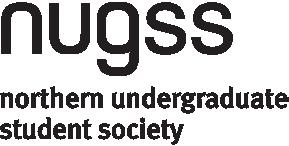
celebrated in the British Commonwealth by King George V to remember those who lost their lives in the First World War. Initially called Armistice Day, it was observed on the Monday of the week of November 11th until 1931, when it was officially moved to November 11th. This shift marked a change from celebrating military victories to honoring those who made the ultimate sacrifice.
You may not read much about this in textbooks, but the history of Remembrance Day includes the contributions of millions of soldiers of color. For instance, during World War I, around 4 million nonEuropean soldiers served in various theaters of the war. European powers, including Britain and France, recruited troops from their colonies – a reminder of the complex role colonialism played in both world wars. France recruited troops from Senegal, North Africa, Vietnam, and Madagascar, while Britain enlisted soldiers from India, Africa, and the Caribbean.
The experiences of soldiers of color were often shaped by discrimination within the military. Promotions and awards were frequently withheld, and these soldiers’ contributions were often overlooked. In World War I, West African soldiers on the Western Front faced higher casualty rates and endured great hardship, with many of their acts of bravery going unrecognized.
To give some perspective on the sacrifices made by soldiers of color:
Over 3.8 million Indian soldiers served in both World Wars, yet only 31 received the prestigious Victoria Cross.
The British West Indies Regiment, comprised of 16,000 Caribbean soldiers, earned 81 medals during World War I.
In World War II, over a million African soldiers served, and 80,000 African workers contributed to building essential war resources.
As a new Canadian, I’ve come to understand that
Remembrance Day isn’t only about the past –it’s about recognizing how we arrived here and acknowledging everyone’s contributions, regardless of their background. When we gather at Veterans Plaza on November 11th, we’re honoring service members from every corner of the world.
If you’d like to participate, the Legion Branch 43 welcomes everyone to their events. Even if Remembrance Day is new to you, there’s a place for you in this tradition. The two-minute silence observed at 11:00 a.m. on November 11th may seem small, but it’s a meaningful way to say “thank you” to all who served – no matter their origin.
Lest we forget.
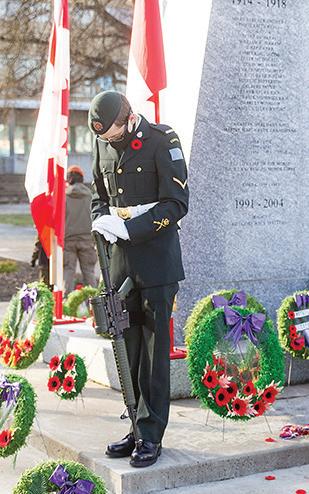
Every November 11th, Canadians honor over 2 million people who have served in times of war, conflict, and peace

AUTHOR: TIFFANY KUKU
Networking can feel incredibly daunting for anyone, but for introverts, it often seems like an insurmountable challenge that is almost entirely avoided. Here at UNBC, with our intimate campus community, it could potentially be hypothesized as a social experiment designed to see who can climb some sort of invisible ladder to success. The prevailing myth, which is a subconscious belief that many of us hold, is that networking is solely an extrovert activity—implying that only extroverted personalities can thrive in this climate. This belief tends to further deter introverts from engaging in such activities, thus fostering unnecessary anxiety, stress and selfdoubt for introverts. Trust me, I know the feeling. However, networking is an instrumental skill for all UNBC students, especially in today’s job market. To assuage some of these fears, here is a guide to connect with others successfully while staying true to your personality.
As affirmed previously, we tend to approach networking as a form of extraversion expression, that is, we assume these situations are cultivated only for socialites. This belief can overshadow the strengths that introverts also possess in a communication-based setting, which often differ from extroverts but
remain crucial nonetheless. At UNBC, introverts frequently excel at listening, observing, and forming meaningful relationships due to their tendency to maintain a smaller circle. These skills can be harnessed in building networks by leaning towards one-onone discussions, intimate interactions or small group conversations that are just as relevant as other networking associations. Recognizing these innate skills is the first step towards achieving networking success without the need to conform to our segregated beliefs.
As an introvert at UNBC, you can leverage your ability to make unique, personal connections. Our university’s smaller size is actually perfect for this approach. Focusing on quality over quantity in these endeavours is the best fit, and is a phenomenon that can apply to all. However, due to our natural tendency to avoid big social interactions, determining what networks are of value to your personal growth is essential in forming quality connections regardless of how small these connections may be.
When attending big networking events such as the UNBC Career Fair or Northern Development Initiative Trust events, it is expected to have a large gathering of participants and organizations alike. Instead of avoiding the whole event completely, set realistic and achievable goals based on your personality style. Focus on identifying potential rather than measuring size in comparison to others. This allows you to form a clear direction on who you are looking to engage with, and do so authentically as you will be more keen to express your interests this waywithout the pressure of the social situation itself.
If you’re feeling particularly overwhelmed just by the thought of attending these events, you can always consider bringing a fellow UNBC student along to serve as comfort and support during your discussions. Having a familiar face nearby can make the situation more relaxed while allowing you to express yourself more freely if you are too intimidated for a solitary encounter. Coupled with this, you can utilize online networking platforms like UNBC’s LinkedIn alumni network or the Northern BC job boards where social relationships can be more controlled, starting with direct messages that are not at face value. It also shows strong intent when you express interest in an organization’s journey or mission, or
communicate your drive that aligns with their mission. Remember that the goal is to inform and engage, but know what’s best for you. It is perfectly okay to prioritize your well-being and engage at a pace that feels best for you!
Networking does not have to be this unappealing terminology, especially within our unique northern
community. You can transform it into something worthwhile based on your personal or professional interests, at a comfortable pace for you and fits who you are. Embrace your introversion and reform the act of networking from a source of discomfort into a more positive experience. UNBC’s closeknit community provides the perfect environment for introverts to shineone meaningful connection at a time.


AUTHOR: CALEB MUELLER
On October 28, Spark Lab at the Wood Innovation and Design Building downtown hosted an exciting Wii games night, drawing in a group of around 10 people for an evening of classic gaming, pizza, and 3D technology. The event was a perfect mix of nostalgia and innovation, bringing together people of all ages to experience both old-school fun and cutting-edge tech.
The main attraction of the night was Wii Sports, projected on the wall above the 3D printers. Attendees took turns swinging virtual swords and competing in various games, all while sharing laughs and bonding over fond memories of the Wii era.

But the fun didn’t stop there. Attendees also had the chance to step into the future with 3D face/body scanning. Our setup allowed guests to get their heads scanned, and then the real magic happened – their heads were 3D printed as miniature models! It was a unique and memorable experience, giving a few willing participants personalized keepsakes to remember the night.
Spark Lab plans to keep the momentum going with more events like this in the future. Whether you’re into gaming, tech, or just looking for a fun night out, keep an eye out for upcoming events at Spark Lab!

Perfect for Students, Great for Working Professionals! Suites & Amenities Made for a Balanced Lifestyle!
√ Comfortable, easy living in a secure, exclusive setting
√ Thoughtful, smart design
√ Amenities for a balanced, active lifestyle
√ Fully furnished suites with private ensuite washrooms
√ All-inclusive utilities and Internet included in rent
√ Independent living in the heart of downtown Prince George
Prime Location: Provides easy access to UNBC, shopping centers, and public transport.
Ready to make Veda your new home? Visit us at vedapg.ca to schedule a tour!







AUTHOR: AHMAD JALIL
The University of Northern British Columbia (UNBC) is buzzing with a playful phenomenon that’s left staff and students both puzzled and amused. Rubber ducks have been mysteriously appearing in offices across the campus, turning workspaces into whimsical displays and sparking a wave of speculation about the mastermind behind this lighthearted prank.
The “ducking” saga quietly started in March when a new face arrived on campus. What began as isolated incidents soon escalated by April and May, with rubber ducks popping up in more and more locations. During orientation week, the ducks seemed to multiply overnight, especially with office doors left open amid the campus hustle and bustle. Building 8 emerged as a hotspot, with numerous

offices finding these feathered friends perched on desks, bookshelves, and computer monitors. Suspects and Speculations As the ducks continued to appear, theories about the culprit began to circulate. Marika Zacharias, an assistant in the Academic Success Centre, found her office adorned with glow-in-the-dark ducks. Some have associated her with the prank due to the sheer number of ducks in her workspace. However, her colleague Katherine Saunderson stated that Marika denies any involvement in orchestrating the prank.
Attention also turned to Dakota Den Duyf, who works as a Career Readiness Coordinator. Given Dakota’s history of playful antics, many speculate that this “would be a Dakota move.” The idea that Dakota or their team might be behind the prank adds another layer to the campus mystery.
Even the Registrar’s Office hasn’t been spared. Alongside other departments, they’ve discovered ducks nestled among paperwork and office supplies. This isn’t their first brush with campus hijinks— they’ve previously experienced a flamingo prank, possibly linked to the Geep Club, and even rumors of pothole pranks have surfaced.
Rather than causing frustration, the ducking incidents have infused the campus with a sense of fun and camaraderie. On Valentine’s Day, ducks were given out as tokens of appreciation, adding to the festive atmosphere. Stories circulate of a father who asked a coworker to hide ducks in various offices, contributing to the ongoing prank and highlighting the community’s embrace of the unexpected.
Bill Clyne, involved in coordinating work-integrated learning projects, may have witnessed or even participated in some of the duck placements. His involvement underscores the widespread nature of the prank, bridging various departments and roles within the university.
Some suggest that the Access Resource Centre (ARC) could be the source of the ducks, given their practice of handing out ducks and flamingos as “emotional support animals.” The fact that the archives remain untouched by the ducking suggests that the prank might be a departmental inside job or that the pranksters have yet to reach every corner of the campus. Note that graduation ducks are also given to students who have used ARC services and are graduating.

What started as a small prank has evolved into a cherished campus tradition, offering a welcome distraction from academic pressures. Offices have begun to adopt the ducks, incorporating them into their décor and daily routines. The playful atmosphere fosters a sense of unity and joy among staff and students alike.
The Great Ducking Mystery has not only provided entertainment but also sparked conversations and connections across departments. Whether it’s Marika, Dakota, or someone from the Access Resource Centre, the campus is alive with speculation and delight.
We want to hear your stories! If you’ve found a rubber duck — or perhaps another unexpected guest like a flamingo — in your office or around campus, share your experience with Over the Edge. Let’s unravel this mystery together, one quack at a time.
AUTHOR: ALIREZA NOORY
Why do you lock the doors of your house, car, or workplace when you leave? These everyday actions safeguard our properties from theft. But what about the products of our intellectual labor? How do we protect our research outputs from unauthorized use?
In this article, we delve into the crucial topic of intellectual property (IP) protection.
According to the World Intellectual Property Organization (WIPO), “intellectual property refers to creations of the mind, such as inventions; literary and artistic works; designs; and symbols, names, and images used in commerce.” Protecting IP allows individuals and institutions to earn recognition and financial benefits from their innovations and creations. This could encompass anything from a groundbreaking device to a scholarly paper published as a result of rigorous research.
As our university, the University of Northern British Columbia (UNBC), continues to grow—evidenced by an increasing student body, a rising number of alumni, and a plethora of published papers—it’s essential to examine our progress in registered patents and research-based companies. The World Intellectual Property Organization (WIPO) reported in 2020 that the IP system must balance the rights and interests of various groups, including creators, consumers, businesses, and countries at different income levels. This balance is achieved through various mechanisms. For instance, copyright protection is essential for thriving scientific publications that benefit millions globally. Similarly, patents reward inventors while promoting knowledge sharing through public patent applications, fostering innovation.
Looking at patent registration activities in Canada provides an interesting perspective. In 2022-2023, Canadian residents were granted 2,398 patents, with British Columbia accounting for 243 of these. This raises an important question: what was UNBC’s contribution to these numbers?
Fortunately, UNBC has taken significant steps to provide a framework for intellectual property and enhance awareness among students and faculty about the importance of IP protection. This knowledge is vital for fostering university-based industrial activities. Many successful businesses, such as Dropbox, Snapchat, and Reddit, originated within university settings. UNBC has the potential to nurture the next wave of innovative enterprises. However, this potential hinges on our collective understanding of how to safeguard our research outputs from unauthorized use. By empowering students and faculty with the knowledge of IP protection, we can ensure that the fruits of their intellectual labor are rightfully theirs.
In conclusion, as we foster an environment of creativity and innovation at UNBC, it is imperative that we also prioritize the protection of our intellectual property. Recognizing and protecting what is ours is not just a matter of individual achievement; it is essential for the growth and reputation of our university in the competitive landscape of academia and industry.


This originally appeared in Over the Edge Volume 11, Issue 5
BY CAROLYNNE BURKHOLDER, EDITOR IN CHIEF
UNBC students living in residence are outraged at the amount of damage vandals were able to cause to their buildings on Saturday, October 30th, even though security was posted at the doors to residence.
Both buildings were targeted by a vandalism spree that took place over Halloween weekend. Neyoh received the brunt of the damage with several holes punched into the walls in the hallways and stairwells. Keyoh also received a fair share of vandalism when the culprits uncoiled one of the fire hoses and used it to spray down the hall, causing major damage to the drywall.
According to Ali Sucro, Residence Life Coordinator of the UNBC Residences, the charges of the damage “are not finalized.” The holes in the walls should cost a few hundred dollars to repair, and the water damage is also costly but harder to assess at this time.
In addition to the building repair costs, students in residence will also bear the expense of recoiling the fire hose, which must be handled by the fire department. This will cost the residence upwards of $200.
Although this rash of vandalism was extremely costly, Sucro asserts that this may not be the worst occurrence of vandalism in residence. She stated that “every year is different” in terms of the scope and cost of damages caused by students in residence and their guests.
Despite the recurring issues, Sucro is adamant that the behavior must stop. “I want this to stop. I really do,” she said.
A simple hose like this was turned into a weapon of mass destruction when a thoughtless vandal uncoiled it and used it to create a giant waterfall down the stairs in the Keyoh residence building.
Students in residence are understandably upset about the recent vandalism in their living space.
“I find it really frustrating,” stated a second-year Social Work student. “When you move out on your own, it’s assumed that you have a certain amount of maturity. It’s obvious that this is not the case.”
Another second-year resident added, “It’s pretty sad that we have to live in this kind of environment.”
A key concern about the October 30th incident is that University Security was present all weekend but was unable to prevent the vandalism. Their presence, intended to deter such acts, drew criticism for failing to protect the residence.
Sucro clarified that security officers were stationed at the residences primarily “to ensure the safety and security of students living in the residences. I can only imagine what might have happened if security had not been present,” she stated.
However, many students feel that security measures are ineffective in preventing vandalism. A fourthyear English student remarked, “The security guards are totally ineffective because there are two ways to get into both buildings. All they do is turn away people’s friends, which is just annoying. If we’re paying for security, why aren’t they accountable when damage occurs? I’d rather pay for video cameras to be installed.”
A third-year Psychology student echoed the frustration, particularly since they live on the floor where the majority of damage occurred. “[The extent of the damage] really upsets me. You’d think
security would prevent this. They clearly can’t do their job.”
Godfrey Medhurst, Head of Facilities at UNBC, stated that security guards are “not allowed on the premises at the residences unless specifically invited by a Resident Assistant.” This policy limits the ability of security to ensure the safety of residents.
As of press time, no suspects have been identified or caught. If the issue persists, residents will face large repair bills at the end of the semester.
the damage] really upsets me. You’d think security would prevent this. They clearly can’t do their job.”
Godfrey Medhurst, Head of Facilities at UNBC, stated that security guards are “not allowed on the premises at the residences unless specifically invited by a Resident Assistant.” This policy limits the ability of security to ensure the safety of residents.
As of press time, no suspects have been identified or caught. If the issue persists, residents will face large repair bills at the end of the semester.

This originally appeared in Over the Edge Volume 11, Issue 2
AUTHOR: TRAVIS NIELSEN
“Gamer” is a loose term for anyone who enjoys playing the old-fashioned paper-and-pencil style role-playing games.
UNBC is home to an ethnically diverse population, a multitude of people crusading for the rights of the less fortunate throughout the world. These larger, more official groups make us forget about the smaller clubs, groups, and organizations that bring us all together.
It is in these sub-cultural groups that we forge the most lasting friendships, and escape from pressures associated with the culture shock of university life. The fact that these groups get pushed out of the limelight is something that should bring shame to all of us, because of their importance in our lives.
Something must be done to help bring these great groups back into the glamour of the spotlight, and that is exactly what I intend to do! Now because this is the first article in this epic series, what better way to start than to expose the truth behind those high adventuring, dice-chucking Gamers?
“Gamer” is a loose term for anyone who enjoys playing the old-fashioned paper-and-pencil style role-playing games. These use a dice-based rule system that gauges the ability to perform actions, and storytelling to create a game where player characters face many challenges and heroic struggles.
It is a common myth that gamers are a secretive group, lurking in empty university classrooms late at night, or in smelly living rooms and basements throughout the world. Subsisting on high-caffeine cola, large amounts of junk food, and pizza; staying up for all hours of the night in order to commit satanic rituals and beat up kittens.
This is entirely not true. Some gamers do have unhealthy obsessions with the games they play,

making them painfully hard to be around most of the time. The majority are interesting, intelligent people who enjoy having a good time not involving Satanism or the beating of kittens.
Gamers are simply out to enjoy themselves by escaping into a fantasy world where they are not subject to the stresses of day-to-day life, and save fair maidens by slaying evil dragons deep within dangerous dungeons.
So the next time you meet a gamer, please do not pass them up as a geek or weirdo. Instead, ask them more about the exciting hobby of role-playing games. You just might want to get involved. On the other hand, if you are a gamer, please do not fear those that might judge you for engaging in this imaginative pastime.
Be proud that you are Sir Gallant, knight of the western kingdoms for five hours a week. Roll your dice with dignity, hold your head high and say “I am a gamer!”





AUTHOR: LINA MAKSYMOVA
Warning: Sarcasm Ahead! If you’re the sensitive type, read with caution (and maybe a helmet). Cheers!
Alright, buckle up, brave multitaskers! If you’re here, you’re probably trying to figure out how to work part-time while studying full-time without, you know, completely losing your sanity. Is it doable? Technically, yes. Is it survivable? Well, that’s the milliondollar question, isn’t it?
The First Truth: It’s (Almost) Impossible
Yes, the legends are true — it is nearly impossible to juggle classes, a job, assignments, social life, and a hint of personal hygiene. But hey, it builds “character,” right? And who doesn’t want to start adulthood with a near-constant state of exhaustion? Imagine the joy of deciding which of these absolutely vital things will be sacrificed each week. Pro tip: Make a list, roll a die, and voilà — one of them gets to go! You’ll just hope it’s not sleep for the third night in a row.
And here’s the real kicker: just juggling work and school isn’t enough. Nope. To stand out in today’s job market, you also need experience—
preferably ten years, and a Ph.D.level skill set. Plus, a sprinkle of volunteering, a dash of publications, and ideally, a minor in “multi-tasking under extreme stress.” Not to mention that you’ll be adding all these skills on top of homework, work shifts, and the occasional shower. Fun! And get this — all for an entry-level position. Yes, congratulations! You’re officially overqualified to start at the bottom.
Ah, the age-old debate that students have pondered for generations. What’s more important: those precious few hours of sleep, or the deeply fulfilling experience of socializing? Personally, I like to think of it as a budget: if you spend five hours with friends, you’ll just have to “borrow” those hours from somewhere. Sleep is usually the easiest thing to cut back on since it’s not like your body really needs it... right?
But remember, with every lost hour of sleep, you earn one hour closer to the very fashionable zombie look. Think about it: trendy, mysterious, and perpetually a little cranky.
Class Participation... or Silent Mode?
So, you’ve chosen both work and


study (bold choice!), and here you are in class, pretending to listen while actively plotting your next nap. You might want to participate—raise that hand, share your brilliant thought — but there’s a slight problem. You’re either semi-conscious or running on a strong cup of coffee and two hours of sleep, and forming coherent sentences isn’t exactly on today’s menu.
In reality, you’ll probably end up sitting in the back, wearing your best “I’m totally here” face, but actually either trying to stay awake or low-key managing your work social media on the side. Because who needs “class participation” when you’ve got “invisible attendance,” right?
And finally, let’s talk about the real balancing act: keeping up with friends, family, and maybe a few hundred followers while navigating work and study. Of course, if you decide to go all in on work and school, you may have to redefine “social life.” Suddenly, a late-night chat with your work buddies on WhatsApp counts as “socializing.” Meeting up for study groups doubles as friend time. And, for the super daring, you might even pull an allnighter and manage to post a little something for the ‘gram so everyone knows you’re still surviving. Kinda.
The Dilemma That Keeps on Giving
Let’s break it down: you have to get a degree (hello, Bachelor’s, our modern-day passport). You also need a job (unless you have a hidden inheritance... and if so, can we be friends?). And don’t forget volunteer work, because employers love a long list of unpaid experience and community service, too. Now, somehow, you’re also expected to keep up with friends, family, and eat three meals a day. Laughable? Absolutely.
And speaking of balancing acts, let’s not forget about self-care! I even tried seeing a psychologist, thinking she’d help me organize this circus. Spoiler: instead of turning me into a productivity machine, I got “in touch” with my emotions. Now, here I am, sometimes combining class reflections with crying sessions. Who knew mental health and homework could go hand-in-hand?
The Bottom Line
In the end, you can balance it all... with a healthy dose of caffeine, sarcasm, and the expectation that sometimes things will just fall apart. But that’s all part of the journey, isn’t it? Remember, if you’re laughing instead of crying, you’re already winning. Cheers to the balancing act!
AUTHOR: PARNIYA PEYKAMIYAN
As a UNBC student, you get invited to countless events and seminars through your email inbox. I always try to attend these events, believing they offer fresh perspectives on different subjects and valuable networking opportunities. As a Computer Science student, I find it particularly enriching to venture outside my technical field and explore diverse subjects. While algorithms and programming might seem worlds apart from business theory and sustainability, I’ve learned that some of the most valuable insights come from crossdisciplinary exposure. Plus, observing different presentation styles and public speaking approaches helps me develop my own communication skills – something crucial in any field.
When I received an invitation for a research presentation by Dr. Niki Khorasani, a postdoctoral fellow from the Alberta School of Business who was interviewing for an Organizational Development Professor position at UNBC’s School of Business, I was immediately intrigued. Her presentation title, “Trojan Mice: Unraveling Institutional Myths Through Entrepreneurship,” sparked my curiosity. As I added it to my calendar, I thought this might also make for an interesting article for Over The Edge, UNBC’s student newspaper, allowing me to share these innovative ideas with the broader student community.
What struck me most was how her research could apply to our daily lives as students and community members. While we often think about success in terms of constant growth –better grades, higher salaries, bigger businesses – Dr. Khorasani suggested that sometimes “enough” can be better than “more.” This perspective challenges how we typically think about success and progress in our lives.
Dr. Khorasani’s research looks at something we rarely question: the idea that businesses must always grow bigger. She calls this the “growth myth” – the belief that success always means expansion. Through interviews with 50 entrepreneurs and 80 hours of watching how they work, she discovered something interesting: some business owners are choosing a different path. These “Trojan mice,” as she calls them, are making small but meaningful changes to how they run their businesses.
Think of it like this: instead of trying to become the next Amazon or Walmart, these entrepreneurs ask themselves “What’s enough?” They focus on what their community needs and how they can make a positive impact, rather than just making more money. Some share their business solutions with others instead of keeping them secret. Others choose to grow slowly, like a tree, rather than rushing to expand.
This way of thinking about business might seem unusual, but it’s catching on. From local farmers’ markets to community-owned shops, we can see examples all around us of businesses that prioritize community benefit over unlimited growth. Perhaps the most fascinating takeaway from Dr. Khorasani’s research is that meaningful change doesn’t always require massive disruption – sometimes small, thoughtful adjustments, like mice quietly making their way through walls, can lead to powerful transformations in how we think and act.
As students, we often feel pressure to constantly achieve more, grow faster, and compete harder. Dr. Khorasani’s research reminds us that there might be alternative paths to success. Maybe success isn’t always about
being the biggest or the fastest, but about finding what works best for us and our communities.
While I walked into this seminar with my computer programming mindset, I left with new perspectives on how we might think about growth and success in our own lives. Sometimes the most valuable learning experiences come from stepping outside our usual subjects and listening to different viewpoints. That’s the beauty of being part of a university community – these unexpected encounters can reshape how we think about success, growth, and what really matters in our careers and lives.
Attending Dr. Niki Khorasani’s seminar on ‘Trojan Mice
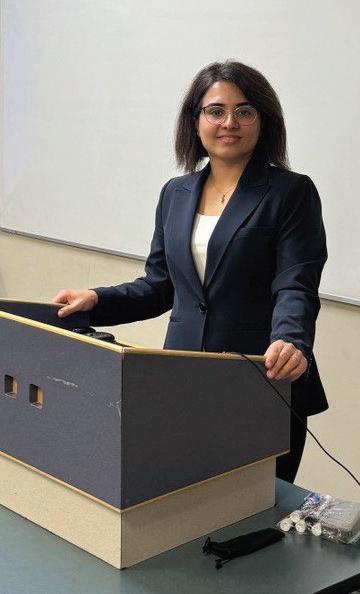
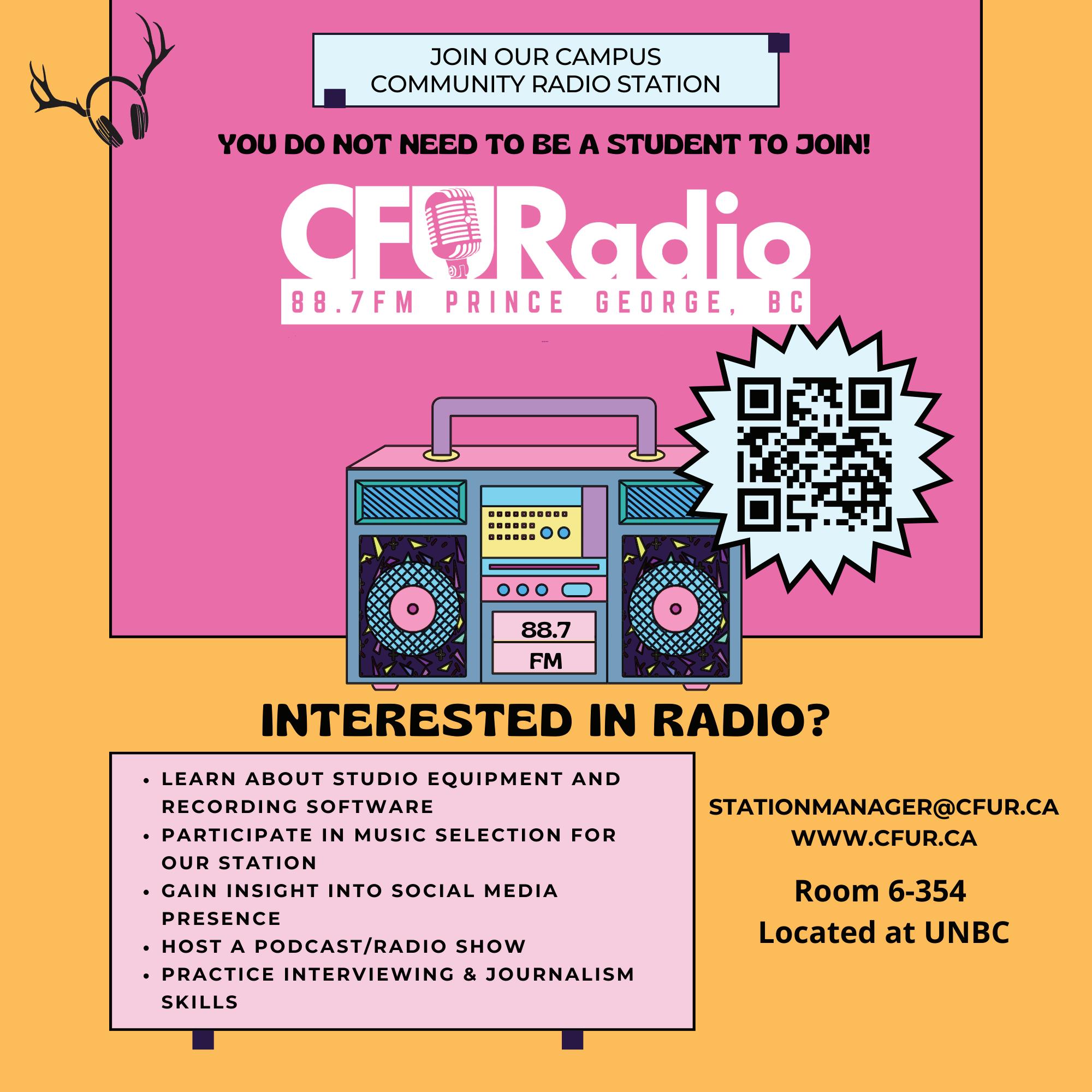

AUTHOR: AHMAD JALIL
While sifting through the archives of Over the Edge, UNBC’s student newspaper, I stumbled upon a 2004 article titled “Your Organs to Save Lives: Realistically, You’re Not Going to Need Them.” Written by then Editor-in-Chief Carolynne Burkholder, the piece passionately advocated for organ donation and encouraged readers to consider the life-saving impact of becoming donors. Curious about the author, I delved deeper and discovered that Carolynne Burkholder — now Carolynne Burkholder-James — not only wrote about organ donation but also lived her words. In 2022, nearly two decades after her original article, she donated one of her kidneys to a stranger in Winnipeg. This remarkable journey from advocacy to action is a powerful testament to the enduring impact one individual can have.
Unearthing a Passionate Plea
In her 2004 article, Carolynne highlighted the critical shortage of organ donors in Canada. She wrote:
“It has always surprised me that the only thing that is certain in life is something that we rarely discuss. Though our mortality is a difficult thing to think about, the possible good that can come out of a death should definitely be some comfort.”
Her words were a call to action for students and the broader community to have conversations about organ donation and to make their wishes known to their families.
From Page to Practice
Discovering that Carolynne had become a living organ donor added a profound layer to her original message. In a recent interview, she reflected on how her views on organ donation evolved over time. “As a lawyer working in wills and estates, I often
help clients with end-of-life planning,” she said. “This work reinforced the importance of organ donation in my mind. I realized I could do more than just talk about it — I could be about it.”
In December 2022, after months of medical screenings, Carolynne underwent kidney removal surgery at Vancouver General Hospital. Her kidney was immediately transported to a recipient in Winnipeg, someone she has never met. “It’s really only a month or so out of my life to make such an impact on other people,” she shared. “I felt strongly that this was a way I could give back.”
Carolynne was part of the Canadian Blood Services’ national kidney-paired donation program, which relies on non-directed anonymous donors to provide kidneys to patients without matching directed donors. These altruistic donations often trigger a chain reaction, enabling multiple transplants to occur.
“It takes a certain type of person to be so altruistic to do something like that,” said Dr. Olwyn Johnston, medical director of kidney transplant at Vancouver General Hospital. “They go through all those hoops, and they still want to donate.”
Carolynne’s journey from writing about organ donation as a student to becoming a living donor herself is a powerful narrative that resonates deeply within the UNBC community. It serves as a reminder that our actions, no matter how small they may seem at the time, can lead to significant impacts down the road. Her story also underscores the value of our student newspaper archives. Hidden within those pages are voices and messages that continue to inspire and challenge us today.
For those moved by Carolynne’s story, there are several ways to get involved:
Register as an Organ Donor: Visit the BC Transplant Society’s website at transplant.bc.ca to learn how you can register.
Have the Conversation: Talk to your family and loved ones about your wishes regarding organ donation. Spread the Word: Use your platforms—be it writing for Over the Edge, social media, or community groups—to raise awareness about the importance of organ donation.
The serendipitous discovery of Carolynne’s 2004 article while exploring the Over the Edge archives led to uncovering a story of true altruism and commitment. Her journey exemplifies how advocacy can evolve into meaningful action, inspiring others to consider how they too can make a difference.
As members of the UNBC community, we have the opportunity to continue this legacy—through our words and our deeds.
“Becoming an organ donor is more than just a personal decision; it’s a commitment to help others in the most profound way possible,” Carolynne said. “I encourage everyone to think about the difference they can make.”






BELOW:




TED CLARKE Citizen Staff
The Second World War movie Breakthrough, filmed just outside of Prince George in March has enlisted a well-known Canadian actor to take on a starring role.
William B. Davis, best known as the Cigarette Smoking Man on The X-Files TV series, will join the production playing the role of a soldier reliving the past. The 86-year-old native of Toronto is currently starring in the Amazon Prime series Upload
The plot of Breakthrough centres around two soldiers on opposite sides who meet during the Battle of the Bulge in the winter of 1944, the final German offensive on the Western Front.
Dug into the Ardennes Forest, the American 106th Infantry Division faces a devastating counter-attack from the German Army and in the aftermath, a wounded Jewish American soldier and a young German boy soldier form an unlikely friendship while trapped together in a foxhole.
Breakthrough explores the tense connection that develops suddenly between the two soldiers, and how that bond transcends the brutality of war.
“We are thrilled to announce that William B. Davis will be starring in the film. I’m excited to be working with an actor that is so beloved by the Vancouver film community,” said Breakthrough director Kate Green, who recently wrapped up production of the movie in Vancouver.
Breakthrough was written by Michael John Fuller, a renowned Second World War historian and technical advisor who worked on the movie Dunkirk. Fuller also stars as the older soldier.
Former Prince George resident Norm Coyne of Barker Street Cinema shares the production credit with Green, through her company Kate Green Productions. Coyne and Davis previously worked together on a film adaptation of the Sherlock Holmes story The Doctor’s Case, written by horror novelist Stephen King.
“Both Kate and I have grandfathers who served in World War 2,” said
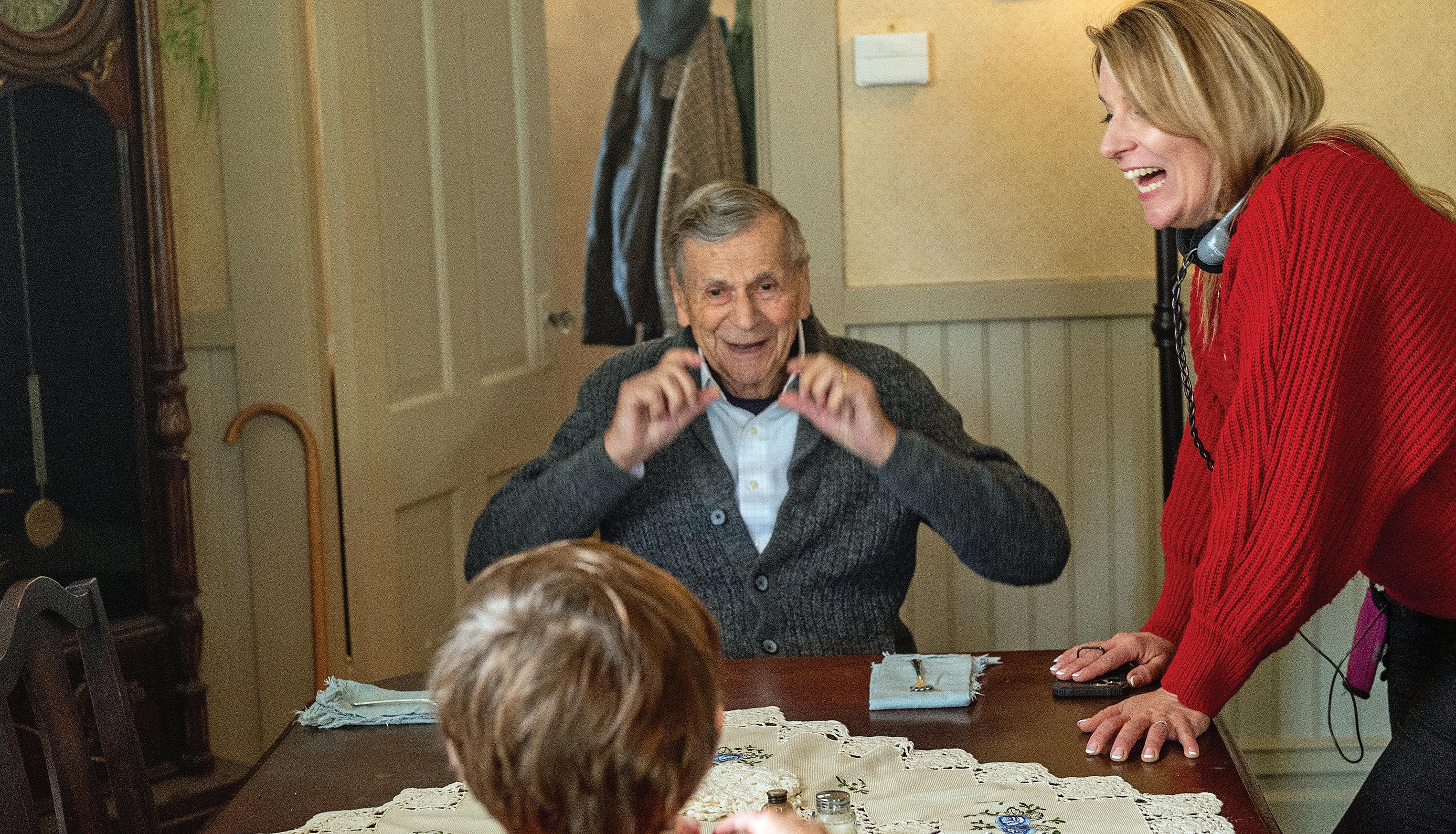
Coyne. “With Remembrance Day coming up next week, I can’t think of a better way to honour those who served than with a meaningful story like Breakthrough.”
Green’s credits include the hit science-fiction series Narcoleap, which won two Canadian Screen Award nominations, a Writers’ Guild of Canada nomination and six Leo Award nominations, winning the best web series award.
Narcoleap also won best science fiction series at the Miami Web Fest and best series at Blood in the Snow.
Prince George actors Riley Banzer and Aiden Smith are also featured in the movie.
Also cast are Vancouver actors Kelly McCabe, Gillian Hurtig, William Carson and Aaron Haegert, who plays the young German soldier.
Hon. Col. Tom Newell of the Rocky Mountain Rangers served as executive producer on the film and utilized the talents of several Rangers army reservists from Bravo Company in Prince George to help with production on and off screen.
Breakthrough is scheduled for release in 2025.

CHRISTINE DALGLEISH Citizen Staff
Walking into Deadfall Brewing Company is a stop-you-in-your-tracks moment.
There’s a split second of ‘am I in the right place?’ doubt but once you get past the vivid art on the walls and cozy seating area and it finally sinks in there are actual brewing tanks in the back and beyond that’s when you start to get it.
Your eyes can’t take it all in at first, the space is a vast expanse that just seems to surprisingly keep going.
The live-edge table and comfy couch, an upright piano, a lending library, the old school rollie chairs around solid oldster tables – so inviting - and the art. You can’t even comprehend what you’re seeing on the walls it’s so expansive, colourful, alive... and dead. And that’s just the tap room.
And then you look up and there’s a row of freaking crowns – yes, like royalty – crowns on the top of a divider wall, in the row with all their other trophies and they’ve only been in business for two years.
Taking it all in leaves more questions than answers and isn’t that a perfect conversation starter.
Let’s begin with the crowns.
The Canadian Craft Brewers Association presents the Canada Beer Cup awards and this year they crowned Prince George’s Deadfall Brewing with six national awards. They won the most awards out of all the breweries entered into the competition.
They got five crowns and a rather ordinary-looking award compared to the heavy resin crowns but still a national award. Details look like this: Gold for Succession, gold and silver for Gloaming, bronze for Basal Brown, bronze for Aurora, bronze for Belgian Strong Ale and a silver from BC Beer for Grissette.
There’s a few beer awards and competitions across Canada and the Canada Beer Cup is the more prestigious one where they bring in international judges, Erin explained.
“The Canada Beer Cup is still in its

Brandon and Erin Baerwald, two of the owners of Deadfall Brewing Company, wear the crowns they won during the Canada Beer Cup championships.
infancy, this was only its third year,” Brandon Baerwald, Deadfall’s brewing master, said.
“It’s very quickly becoming one of the highest calibre, best run competitions out there and it’s just for Canadian independent craft brewers. Winning the awards is validation that our hard work is paying off.”
And he’s always tweaking to make it better. Ironically he tweaked it right out of taking the gold for the second time. It was his Basal Brown in the American Brown Ale category that won the grand championsip (leaving the typo because wouldn’t that be great if they actually called a beer competiton’s top spot the ‘grand championsip’?) in 2023 and this year slipped into bronze. But don’t worry, even though he won’t go back to exactly what it used to be he’s already retweaking.
“Because it can always be better,” Brandon said and then echoed. “Always be better.”
He continues to make subtle changes because that’s what the best in Canada does.
“We are pretty stoked for our little Prince George brewery,” Ivan Eytzen, sales and marketing manager at Deadfall, said.
Erin Baerwald and Brandon Baerwald, are two of the owners of Deadfall and it’s gotta be said baer wald in Old High German means bear power, so cool.
Erin is the bat prof, no seriously, she teaches and studies bats at UNBC, so
like a hole in the wall.
“Or let’s say when you flip that log and you see all the cool stuff underneath,” she grinned.
“I really wanted that sense of surprise.”
In the front half of the brewery people are invited to explore the beers on tap with tasting flights and if you don’t know what you’d like Erin will be happy to match you up.
“If you’ve never been in before -,” Erin begins.
cool. And Brandon with an ‘o’ also studied bats but now he’s a wizard because he makes the best beer in Canada. OK, maybe not a wizard but he is a master brewer, so cool.
They each started out as home brewers and somehow found each other in this crazy world and they speak this very unique and kinda strange beer language that only brewers understand, again, so cool.
Words like hazy pale ale, strong British dark, strong Belgian dark, mild dark, Basal Brown, session hazy, all inspired a plea to talk slower.
“We are a microbrewery and we can only make 700 litres at a time,” Erin said.
A microbiologist, Jane Fowler, and a doctor now studying to be a psychiatrist, Will Emery, are the other two owners and they all met at grad school. Makes sense.
They came up with the name Deadfall because when a tree falls it causes new growth, Erin explained. It provides wildlife habitat, cycling nutrients and aiding plant regeneration under the canopy.
“So the idea behind the name, branding and all the art is beauty from death,” Erin said.
“So there’s beauty in the cycle of life and death and you can’t have beer without lots of generations of yeast, which are fungus, giving up their lives, so you’ll see lots of mushrooms in our imagery, lots of beautiful skeletons because that’s our jam.”
Erin really wanted the brewery to feel
“ ... and it’s easy to tell because people walk in and they stand at the door for a while and look around and they’re like ‘oh, wow’ and we’re like ‘you must be new!’” Brandon finished what Erin started with a laugh.
“So people can get overwhelmed when they come into new places so I will ask what they normally like to drink,” Erin said.
Even if the person prefers wine, there’s a beer that might just surprise them, she added. And because they support local businesses, they have Northern Lights Estate wine on hand.
“I can provide beer education 101 and if they know the style of beer they like I can match them up,” Erin said. “Do you want a lawnmower beer? We got one. Do you want a campfire beer? We got that, too.”
Because Deadfall doesn’t have a kitchen people can bring in their own food and they are licenced for family friendliness.
“We had a group of ladies come in and they filled the table with charcuterie and just sat for hours talking and laughing,” Brandon said. “We had a couple bring in Tupperware containers filled with spaghetti. It’s just that kind of place. We love to see new faces and even if you’re not a beer drinker you might be after you’ve tried ours.”
Community engagement is important to Deadfall and they regularly host fun event, too.
For all the details visit Deadfall Brewing at 1733 Nicholson Street South or checkout their Facebook page at www. facebook.com/DeadfallBrewCo.
CHRISTINE DALGLEISH Citizen Staff
Carrier Sekani Family Services
unveiled Stories of Hope and Strength, a powerful film series amplifying the voices of Indigenous women, girls, and LGBTQ2+ communities last month at the Prince George Playhouse.
The project changes the narrative of the ongoing crisis of violence toward Indigenous peoples, sharing personal stories of resilience, healing, empowerment and hope.
Cindy Blackstock, Gitxsan, advocate and First Nations Caring Society Executive Director, shares how she embraced her voice and used it to stand up and speak out. Cindy embodies “you are worthy” in this vignette by highlighting the basic human rights and love that all First Nations children deserve now and for the future.
“I have been working with Carrier Sekani Family Services since about 1986 when it first got off the ground with Warner Adam and just a couple of staffers back then in Prince George,” Blackstock said. “And then over the years that relationship has grown and of course through the amazing complement to Warner’s leadership of Mary Teegee and it was really her view that we needed to show more young people the positive examples of how you can live hope and really hold on to that hope and that dignity while confronting life’s challenges while also living fully and enjoying life’s gifts.”
Blackstock said in the recent past she has seen a lot more recognition of the full humanity of First Nations’ peoples.
“At the epicenter of colonialism is a savage and civilized dichotomy where everything that we are is savage and everything that is not us is civilized,” Blackstock said. “Part of confronting discrimination is humanizing us and that humanization was made possible really by many people who came before me, including those survivors of residential schools that told their truth through their tears so their grandkids didn’t have to go through it.”
And Blackstock does not say they
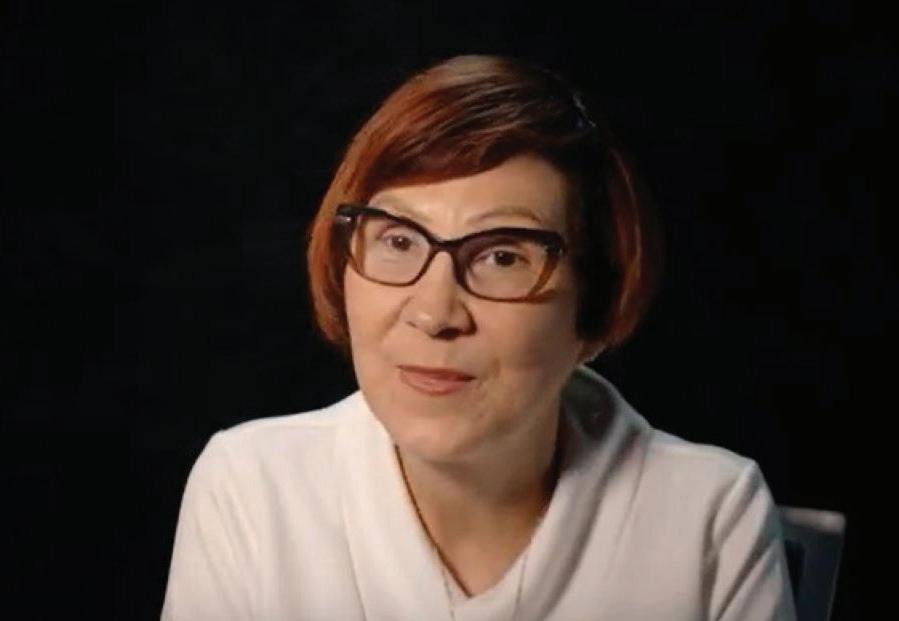
are telling their stories instead she said they were telling their truth, their testimonies.
“Each one of them was a gift to all of us and also a belief in all of us that by knowing the truth we actually could do better,” Blackstock said. “Now we all need to make a personal decision and a societal decision of whether we were worthy of that truth telling.”
When Blackstock grew up throughout Northern BC she said everyone told her what she couldn’t be.
“What I want this film to do is to show every young person that they have a gift and aluminate what they can be, they will be, that they have the opportunity to be,” Blackstock said.
“This is my life and my goal is to be at work in a collective of people that helps ensure that First Nations children don’t have to recover from their childhoods and non-Indigenous kids don’t have to say they’re sorry. I’ve tried to do it in a way that the late Elmer Courchene taught us is that when it comes to children justice is not enough. You must achieve loving justice. At a minimum that means you remain committed to the goal, but you also every day – even if you don’t feel like it – you have to act in ways that bring honour to them in
waiting around for someone more than you are to come by and solve the problem,” Blackstock explained.
“You know the problem exists but you’re sure it’s not going to be you that needs to be called on – there’s someone better.”
Faith by Patrick Overton
When you walk to the edge of all the light you have and take that first step into the darkness of the unknown, you must believe that one of two things will happen:
There will be something solid for you to stand upon, or, you will be taught how to fly
your advocacy. There’s a difference between complaining and yelling – and there’s a lot of that in society. But if you really, truly want to do loving justice it requires discipline, it requires a management of yourself, so that every day you wake up and you see beyond the boundaries of who you are and into the lives of a generation you will never know.”
Plato had it right thousands of years ago, Blackstock noted, when he said the first qualification to being leader is not wanting to be a leader.
“And that certainly applied to me,” Blackstock said. “When I grew up I was scared stiff of public speaking, I didn’t think I had anything to say that anybody else ought to listen to, I was just happy to be blending into the population like a little flock of sheep. But despite myself and at every turn – I was born with a loud voice and an opinionated mind and also a real intolerance for injustice for anyone. It took me a long time to embrace the fact that I had to be what I feared the most.”
Blackstock said she always goes back to a poem by Patrick Overton called Faith.
“And I paraphrase it but it kind of talks about that place where you are
“And that’s what I found,” Blackstock said. “I didn’t know anything about how to define this problem with Canada’s basically apartheid public services, how to develop solutions to address it and how to break through the stereotype that First Nations people were getting more not less to the Canadian public and bring them on as allies. I knew none of that but eventually I had the ability to step across that place where light leads into darkness and there were a lot of people there who taught me to fly.”
The series will serve as a call to action and a platform for storytelling in the face of disproportionately high rate of violence against Indigenous women, girls, and LGBTQ2+ members.
Within the films the focus will be lived experiences, cultural strength, and unbreakable spirit of survivors, families, and future leaders.
“Our stories are not just statistics,” Mary Teegee-Gray, Carrier Sekani Family Services executive director of Child & Family Service, said.
“This film series was created to remind the world that behind every number is a young woman with a story, a community with strength, and a culture with deep-rooted resilience. These films are about the power, beauty, and brilliance of our people.”
Cindy Blackstock’s vignette can be seen at www.youtube.com/ watch?v=4mugnolA-hI.
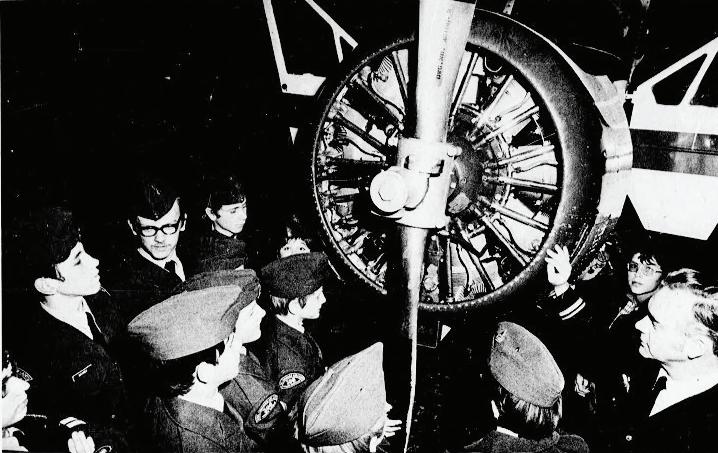
Nov. 14, 1973: Air cadets from Prince George Squadron 396 get a close look at a plane’s radial engine during their evening meeting in the Columbia Airlines hanger. Cadets usually met in the Legion basement, but when the hall became unavailable the airline firm offered the use of its facilities. CITIZEN FILE PHOTO BY DOUG WELLER

Nov. 16, 2006: Students in Sarah Bonner’s Grade 5 class at Hart Highlands elementary show off the shoeboxes they filled to be sent to Third World countries through the Samaritan’s Purse Operation Christmas Child. The students collected the items over the past week and put the boxes together in class. CITIZEN FILE PHOTO BY BRENT BRAATEN
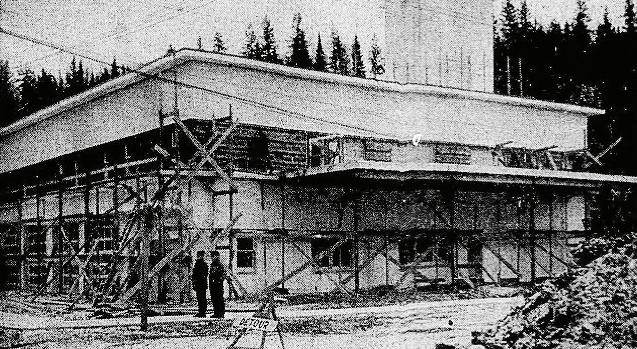
Nov. 15, 1956: Work on the new Prince George Fire Hall was right on schedule and the ground floor was expected to be ready for occupancy before Christmas. Marpole Construction, contracted for the $130,000 structure, planned to have the building ready for full occupancy by February 1957. There were 12 men employed at the site. The 7th Avenue building was demolished in May 2023 after residents voted to replace it in a 2017 referendum. It was briefly used as offices for the Canfor Leisure Pool project before it was torn down. CITIZEN FILE PHOTO
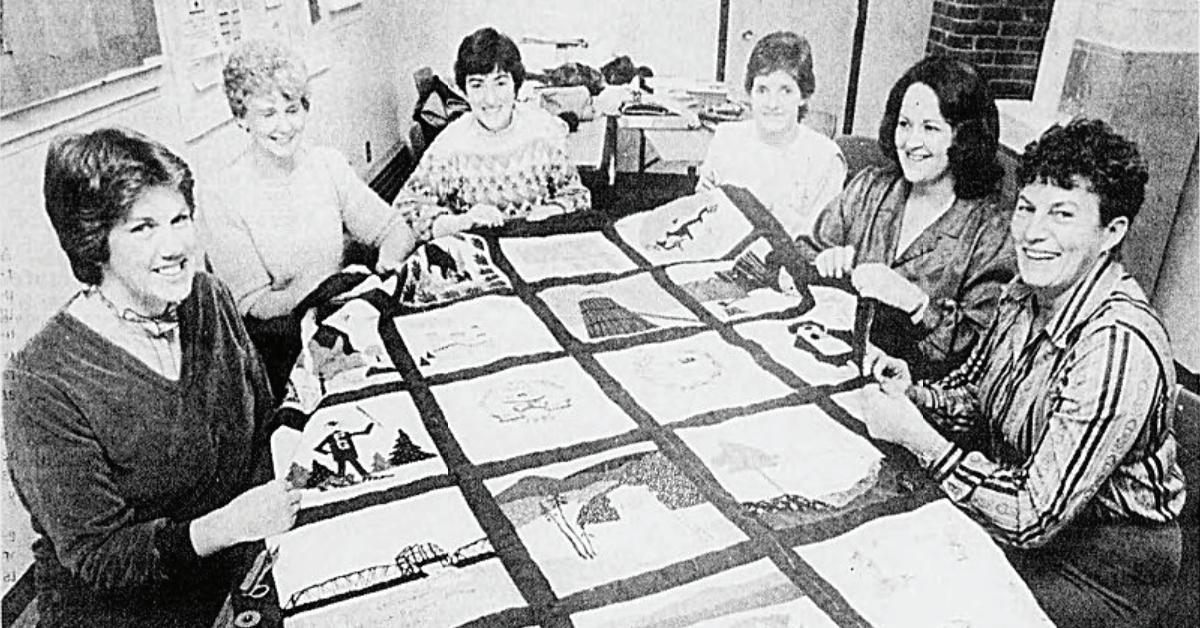
Nov. 14, 1985: A handmade quilt depicting the history of Prince George will be presented to city council Nov. 27 by the Quilters’ Guild at Studio 2880. The multicoloured quilt with brown sashing shows historic landmarks, plants, wildlife and symbols representative of the area. It’s expected the quilt will be put on display at Fraser-Fort George Museum. Quilters putting finishing touches on the work include, from left, Marilyn Loyer, Shirley Jones, Georgie Boyle, Elsie Olesik, Maureen Larson and Georgina Lamanes. CITIZEN FILE PHOTO BY BROCK GABLE


Double Win Regular games

Slot Free Plays X 10 Draws
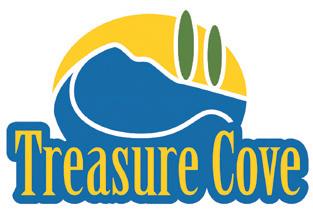


SATURDAY, NOVEMBER 16TH 6:00 PM Evening Bingo Know your limit, play within it.



The British Columbia Construction Association Employee Benefit Trust (BCCA EBT) is celebrating its 55th anniversary by making charitable donations totaling $16,500 to three key health organizations in the province.
Each of the BC Mental Health Foundation, the BC Diabetes Foundation, and the BC Cancer Foundation will receive a $5,500 contribution.
Nicole Bryant of Prince George, CEO of the Northern Regional Construction Association (NRCA), highlighted the importance of the trust in helping employers attract and retain talent.
“The trust offers comprehensive coverage that meets the unique needs of our members in northern B.C.,” she said. “As we mark this milestone, it’s clear that the BCCA EBT is more than just a benefits provider — it’s a vital partner in the well-being of employees and their families.”
The donations reflect the BCCA EBT’s long-standing commitment to supporting the health and well-being of its members, their families, and the broader community, states a BCCA press release.
Founded in 1969, the BCCA EBT provides health benefits to employees in the construction industry and beyond. Currently, the trust supports more than 9,000 employees at more than 500 businesses across British Columbia.
These donations honour the trust’s dedication to improving health

The British Columbia Construction Association Employee Benefit Trust celebrates its 55th anniversary by making $5,500 donations to three charitable organizations, including the BC Cancer Foundation. Pictured left to right are Colleen C.F. Cadez, vice-president of the trust; Clodagh O’Higgins, development officer, BC Cancer Foundation; Christy Kerr, director of finance and administration, Kerr Controls Inc. and board chair of the trust; and Arthur Chung, chief executive officer of the trust.
outcomes for its members, especially in areas related to common health claims, such as mental health, diabetes, and cancer care.
“Our anniversary is a moment to reflect on our ongoing mission to serve the people who make up our industry,” said Arthur Chung, CEO of BCCA EBT.
“These donations are a way to give back to our community while supporting causes that directly impact the health of our members. For 55 years, we’ve prioritized people over profits, and we’re excited to continue expanding our support for our members’ health and the communities where they live and work.”
Rory Kulmala, CEO of the Vancouver
Island Construction Association (VICA), emphasized the value of the trust’s health benefits in supporting both workers and employers.
“The BCCA EBT has been a gamechanger for our industry,” he said. “It’s about more than just coverage — it’s about peace of mind,” he said. “Personally, I’ve seen how the trust’s support can make a meaningful difference during challenging times. As we celebrate 55 years, we’re excited for the continued positive impact this organization will have on the construction community.”
BCCA president Chris Atchison called the trust’s services “a cornerstone” of support for the construction industry,
helping businesses strengthen their workforce by providing essential health benefits. “The BCCA EBT has always been there for us, and its ongoing commitment to the health and well-being of our workforce is something we deeply value,” Atchison added.
The BCCA EBT’s focus on personalized, flexible health benefits continues to drive its success.
While originally established to serve the construction industry, the trust now extends its support to a variety of sectors, from architecture to manufacturing, reflecting the diverse nature of B.C.’s workforce.
As the BCCA EBT looks to the future, it remains dedicated to evolving its offerings to meet the changing needs of its members. The trust is committed to providing data-driven solutions, comprehensive coverage, and the personalized care needed to support a healthier workforce across the province, states the press release.
The British Columbia Construction Association Employee Benefit Trust (BCCA EBT) is a non-profit organization dedicated to providing flexible, comprehensive health benefits to employees in the construction and related industries. With more than 55 years of service, the trust supports more than 9,000 members across 500 businesses throughout British Columbia.
For more information about the BCCA Employee Benefit Trust or to inquire about membership, visit www.bccabenefits.ca or contact info@bccabenefits.ca.
CITIZEN STAFF
The new state-of-the-art hospital in Terrace has reached another important milestone as it has been gifted a Tsimshian name, Ksyen Regional Hospital, Terrace. The name recognizes the territory in which the hospital was built and the region it serves.
Local First Nations and municipal leaders had discussions together about the naming of the hospital. It was agreed
that a Tsimshian name proposed by the Kitsumkalum First Nation would be the name submitted to be approved by the Northern Health board of directors and the province.
Ksyen (KUH-see-yen) is the Sm’algyax name for the Skeena River. Sm’algyax is the language spoken by the Ts’msyen (Tsimshian) people, who have lived for thousands of years on the North Coast of British Columbia.
Ksyen Regional Hospital will also
recognize the history and important contributions that Dr. Stanley Mills and others have made to health care in the region -- including Dr. Mills’ role in bringing the current hospital to the community.
Mills will be recognized in the new facility with a history wall and will have the ambulatory care unit named in his honour.
“With this new hospital we now have a significant and meaningful
opportunity to recognize and honour the historic past, the first peoples and the Indigenous territory that this facility is on,” said Northern Health Board chair Colleen Nyce.
“I am grateful for the collective input and discussion that has brought us to this decision, and in particular I thank both Kitsumkalum and Kitselas First Nations for coming together to allow this very appropriate Tsimshian name to be used.”
In a move aimed at improving eye care across Canada, the federal government has passed Bill C-284, the National Strategy for Eye Care Act.
This legislation lays the groundwork for a comprehensive national approach to addressing eye health, ensuring that Canadians across the country can access essential eye care services, treatments, and rehabilitation programs.
The passage of Bill C-284 is the culmination of years of advocacy by a coalition of Canadian eye health organizations, led by Canada’s Vision Health Partners.
The new law will prioritize the development of a National Eye Care Strategy, which will focus on prevention, treatment, research, and education surrounding vision health.
Among its key provisions, the bill designates February as Age-Related Macular Degeneration Awareness Month to raise awareness of one of the country’s leading causes of blindness.
The strategy will address growing concerns over eye diseases and vision loss, which currently affect more than 1.2 million Canadians.
More than eight million people are living with conditions such as age-related macular degeneration (AMD), cataracts, diabetic retinopathy, and glaucoma.
Currently, more than 1.2 million Canadians are affected by vision impairment, with the number expected to rise in the coming decades.
Vision loss is particularly common among people with diabetes, with nearly one million Canadians affected by diabetic retinopathy, a leading cause of blindness among those with the condition.
According to Diabetes Canada, more than 60 per cent of people with type 2 diabetes and nearly all people with type 1 diabetes will experience some form of diabetic retinopathy over time, highlighting the need for early detection and preventive care.
Bill C-284 aims to address this pressing issue by investing in research, expanding access to eye care

The federal government has passed new legislation that will lead to a National Eye Care Strategy, which will focus on prevention, treatment, research, and education surrounding vision health.
professionals, and integrating vision rehabilitation services into the broader healthcare system. This comprehensive approach will help Canadians with vision loss achieve better outcomes and improve their overall well-being.
In a press release, Canada’s Vision Health Partners — a coalition of prominent eye health advocacy groups — states it has been instrumental in pushing for this legislation.
The coalition includes organizations such as the Canadian Ophthalmological Society, Canadian Association of Optometrists, Canadian National Institute for the Blind (CNIB), Fighting Blindness Canada, and Diabetes Canada, among others.
These groups have worked together over the past two years to address critical gaps in patient access to care and to advocate for a more coordinated, national approach to eye health.
The passage of Bill C-284 is being hailed as a significant step toward equitable access to vision care for all Canadians, regardless of where they live
also expressed his approval, noting that the bill underscores the importance of proactive eye care at every level of the healthcare system. “This legislation embodies our commitment to eye health as a national priority,” Spiro said.
For organizations like CNIB, the passage of Bill C-284 is a crucial step toward ensuring that people with vision loss receive the support they need.
Angela Bonfanti, President and CEO of CNIB, highlighted the potential for the bill to improve outcomes for children and adults with vision impairment.
“We hope that the National Eye Care Strategy will help increase access to eye exams for children and provide comprehensive services to people with unavoidable blindness, enabling them to thrive,” she said.
or their socioeconomic status, the coalition states. By creating a structured framework for eye health services, the legislation seeks to ensure that Canadians will not only have access to timely treatment but also receive ongoing support for vision rehabilitation.
The bill has garnered support from a range of healthcare professionals who understand the importance of eye health in overall well-being. Irving Gold, CEO of the Canadian Association of Occupational Therapists, applauded the legislation, emphasizing the role of occupational therapists in helping individuals with low vision or blindness maintain their independence and quality of life.
“The passage of Bill C-284 is a milestone in ensuring equitable access to vision care for all Canadians,” Gold said. “Occupational therapists play a key role in supporting people with vision loss, helping them participate fully in daily life and achieve their goals.”
Dr. Martin Spiro, president of the Canadian Association of Optometrists,
The new law also promises to drive innovation in the field of eye health through increased investment in research. Jennifer Jones, president and CEO of Fighting Blindness Canada, emphasized the importance of funding research to advance treatments and technologies for vision loss. “An investment in research is an investment in hope,” she said. “The creation of a National Eye Care Strategy will help improve the lives of Canadians with vision loss and their caregivers.”
The Opticians Association of Canada echoed similar sentiments, noting that the strategy will help protect and enhance the vision health of Canadians.
“We are proud to support initiatives that protect and enhance vision health, and we look forward to working with our partners to drive further progress,” said Claudia Rojas, president of the association, emphasized the potential for collaboration across the healthcare sector.
Canada’s Vision Health Partners is a coalition of not-for-profit organizations dedicated to improving eye health across Canada. Its members include organizations such as Balance for Blind Adults, Canadian Association of Occupational Therapists, Diabetes Canada, Canadian Ophthalmological Society, and Vision Loss Rehabilitation Canada, among others.


TED CLARKE Citizen Staff
The PG Bowl-champion College Heights Cougars know that when they take to the field Friday at Burnaby Lake Sports Complex to face the Holy Cross Crusaders, they’re going in as underdogs.
You can blame geography for that. With only two other high school football teams to contend with in the vastness of north central BC, College Heights didn’t have the luxury of honing their football skills against a different opponent each week. In sharp contrast to the Crusaders, who play in the BC High School Football Association double-A East, facing full rosters drawn from equally large population bases.
College Heights and its crosstown rivals at Shas Ti Kelly Road Grizzlies and the Nechako Vikings of Vanderhoof are all that’s left of the North Division that once boasted seven teams and neither opponent had what it took to beat the Cougars.
But the Cougars certainly aren’t using their lack of competition as an excuse.
Going 5-2 after four exhibition games, two regular season games and one playoff – their 14-7 win over Nechako Valley in the PG Bowl final at Masich Place Stadium Nov. 1 – the Cougars head into their final week of practice confident they’ve done all they can to get set to clash with one of the top teams in Greater Vancouver.
They know what’s at stake in the sudden-death affair. A win over the Crusaders will put College Heights into the provincial semifinals.
“I think it’s going to be a close game, I don’t think either team’s going to run away with it,” said Cougars head coach Grant Erickson.
Holy Cross went 5-1 in the season and finished second in the East, their only

loss to 6-0 Robert Bateman of Abbotsford. The Crusaders are ranked fourth. College Heights holds the No. 5 ranking.
“They’re a big team, we’ve watched their film, and of course film doesn’t do it justice when you’re face-to-face with a big team and we don’t have a lot of big guys, so it’s going to be a challenge,” said Erickson.
“I would expect we’re going to run outside and use our passing game quite a bit. They look like a disciplined team and they don’t do a lot of fancy stuff, they just play tough football.
“We have some pretty good weapons on our team. Dillon (Piddocke) is a dualthreat quarterback. He has a strong arm
and he can run.”
The Cougars’ offence revolves around Piddocke, who not only has scrambling ability but a golden arm that’s thrown for 1,373 yards in seven games – a College Heights school record. He completed 90 of 126 attempts for a 71.4 per cent rating.
Receivers Zach Loewen (412 yards) and Troy Weatherly (381 yards) are Piddocke’s primary targets and the surehanded Smith piled up the 269 yards as the Cougars’ screen play specialist.
On the other side of the ball, Smith and Lincoln Shiels, both Grade 12 veterans, direct traffic in the linebacker lanes, backed by a well-schooled
defensive line that includes Dray Barclay, Ethan Curzon, Devlin Dwinnell, and George Bigham, Hayden. Piddocke and Tyler Rohra Jr. have made their presence felt in the Cougars’ secondary with seven and three interceptions respectively.
In winning their seventh PG Bowl title, more than any team since the league began in 2004, the Cougars shook off a shaky start and got touchdowns on a goal-line sneak from Piddocke and a six-yard run from running back Smith to grab the lead in the first half.
Vancouver Giants forward Cameron Schmidt releases a shot that is turned away by Cougars goalie Josh Ravensbergen Saturday night at CN Centre. The Prince George Cougars pasted the Giants 7-1 in front of an electrifying sellout crowd of 6,038. On Community Heroes Night, the Cougars had a handful of heroes in their midst on the ice at CN Centre and they answered the bell by committee to defeat a division rival that’s been creeping up on them. As lopsided as the score might seem on a night when Koehn Ziemmer rang up his second hat trick of the season and Borya Valis delivered a two-goal, two-assist effort, this one easily could have taken a turn for the worse if not for the play of Ravensbergen. Midway through the second, Ravensbergen stuck his glove out to deny Cameron Schmidt, in his Prince George homecoming, on a backhand deke that was probably the best save of the game for the 17-year-old North Vancouver netminder.

The Cougars survived getting backed onto their own one-yard line on their opening series after they briefly lost starting centre Barclay to a finger injury. His replacements made a couple of gaffes snapping the ball in the opening series, but they didn’t allow a point.
“I’m really proud of my guys, that could have gone sideways fast but they held it together and held their composure, and once Dray got back in there they started rolling,” said Erickson.
“We had them hemmed into their own end and I don’t they got it past midfield the whole fourth. We had it down to their 20 three times and we just couldn’t convert anything. It’s hard when you play each other three times, they know everything that you’re going to do.”
The Vikings made it a one-score game in the third quarter on an eight-yard run from Dexter Malo in the third quarter, but with starting quarterback Linden Buchanan forced out of the game early with a concussion, the Cougars kept the Vikings penned in their end of the field the rest of the way and it was game over.
Despite the presence of the junior Prince George Kodiaks, who have revived interest in the game, high school football in the region has taken a few hits in recent years.
What used to be a seven-team North, with teams from PGSS, Duchess Park, D.P. Todd, Correlieu (Quesnel), is down to just three teams.
The Duchess Park Polars last fielded a team in 2022, while Prince George Polars (PGSS) dropped out before the
start of this season. Erickson attributes the demise of those programs to a lack of coaches, especially those who double as teachers, where they have classroom access for recruiting.
College Heights and Shas Ti Kelly Road both have football courses in their schools, open to students in Grades 10-12, and Erickson says that’s been a key to recruiting and his team’s success.
In that class they work out together in the weight room, practice football skills in the gym, watch game film and devise plays on the whiteboard – all while the fields outside are buried in snow. By the time spring comes and they can get out on the field, the players have a much better understanding of their roles.
“We’re just so much further ahead when we get on the field because we work on that stuff,” said Erickson. “It’s a
huge advantage for sure.”
Although the Cougars played only two regular season games they went 3-1 in exhibition, starting with a 27-6 win over Mount Douglas Rams in Saanich and a 17-14 loss to the Westsyde Wundas in Kamloops.
“We’ve come a long way,” said Erickson. “We took our lumps last year and this year guys have really taken it seriously and have taken their game to another level and it’s fun to be part of it.”
The Cougars have a roster of 33, with an even distribution of players in grades 10, 11 and 12. The seniors coming to the end of their high school careers are Loewen, Smith, Shiels, Barclay, Rohra Jr., Jackson Moleski, Hayden Marrion, Owen Bass and Ben Duchsherer.

TED CLARKE Citizen Staff
Thunder Innis and Ben Ruttan of Inner City Boxing PG punched their way to titles at the Alberta Sub-Novice Tournament in Calgary on Nov. 2 and 3.
The 15-year-old Innis won both his fights in the 80-kilogram-and-over division. He started with a unanimous decision against Morris Crow of Red Deer’s Black Rock Boxing Club and then beat Carter Martin, who was representing Humble Boxing of Airdrie.
Ruttan, 17, had one bout in the 90kg weight class and defeated Deshawn Flavel-Howse of the Lac La Biche Boxing Club.
Sixteen-year-old Trayton Ruttan of Inner City fought in the 70kg division but lost to Thakur Jaswal of the Olympus Chestermere Boxing Club.
The Ruttan brothers got their first taste of Inner City last June as part of
a school program. Seventeen-year-old Ben and 16-year-old brother Trayton have been training at the Inner City gym for about five months.
They had long been interested in boxing, and liked the atmosphere at the club right away. When coaches Kenny Lally and Jag Seehra invited them to come back and train, they jumped at the opportunity.
And they’ve taken advantage of it.
“I’ve learned a lot,” Ben said. “Keeping your hands up, staying disciplined, and proper technique. I’ve been to two other boxing gyms and I’ve never learned as much as I’ve been learning here. This has changed me a lot. It’s really made me more mature.”
Trayton puts it more simply.
“I work my butt off and it’s been paying off,” he said.
Since they started boxing, Ben and Trayton have been training six days per week – five at Inner City and one on their own. And while it’s always one
against one in a boxing ring, they’ve been a team in all of the work that goes in ahead of time.
“Doing it with my brother makes it even better,” Trayton said. “I’ve got a training partner always by my side. We train together, run together, it’s been good. We’ve always been really close, since we were younger.”
From Lally’s perspective, the Ruttan brothers have been great additions to Inner City’s fight team, which currently stands at 12 boxers.
“I love those kids,” Lally said. “We call them our Diaz brothers. So if anybody’s familiar with UFC, Nate and Nick Diaz, they remind us of them. They’ve got a very tough exterior and they’re very talented at the same time. And it’s really cool when you see them now, the role models they are in the gym, especially for the younger kids – helping them out, encouraging them on the bag.”
During his own boxing career, Lally was a seven-time national champion,
and he sees bright futures for the Ruttan brothers in the sport.
“They’re here to learn,” Lally said. “That’s what Jag and I dream for: for kids to come up here that ask questions, that are waiting at the door to come in, that are running on their off-time. That’s what it’s all about.”
Seehra is equally impressed with the Ruttan boys. When he sees them supporting each other and giving everything they’ve got during training sessions, he says he’s reminded of the partnership he and Lally had for so many years as Inner City boxers.
“They’re something else,” Seehra said. “They feed off each other’s energy and it’s just cool to see two brothers close like that. They both kind of hold each other accountable. That’s what you need in this game.”
Members of Inner City Boxing PG will now prepare for a home fight card, Champions of the North on Nov. 23 at the Roll-A-Dome.
Saturday night in Victoria, the UNBC Timberwolves fell 70-60 to the University of Victoria Vikes. The Russian tandem of Sveta Boykova (13) and Viktoriia Filatova (12) combined for 25 points for the visitors while the Vikes were led by Abigail Becker who chimed in with 18 points and nine rebounds.
Makena Anderson added 16 for the Vikes who traded leads back-and-forth with the TWolves all night before pulling away in the back-half of the fourth quarter.
Boykova and Tegan Michel swapped early buckets to start the game, then Sophia Fuller hit back-to-back threes for UNBC which gave them an 8-4 lead. After notching a season-high 11 threes a night prior, the three-ball was a clear focus for Sergey Shchepotkin’s club to start the night Saturday as four of the first eight UNBC shots came from beyond the arc. UNBC took 23 threepoint shots on Saturday.
Defensively the TWolves held their ground as well, keeping Victoria to just eight points through the opening five minutes as they opened up a 14-8 lead, but five-point sequence from Victoria’s Avery King off the bench helped push the score back even at 14-14.
Amrit Manak drained the third three of the quarter in response for the TWolves before the Vikes countered with 6-1 run to take the lead.
A three from Brynn Dergousoff and a layup from Victoria’s Becker rounded out the first quarter scoring as the Vikes led 22-21 through the opening 10.
A triple from Manak and two successful free-throws from Filatova put UNBC ahead 26-22 early in the second. Boykova added two successful freethrow makes of her own to help UNBC start on a 7-3 run.
Through just 13 minutes on Saturday, the TWolves had amassed 10 free-throw chances – eight more than their entire sum from Friday. They connected on seven of those 10.
Halfway through the second, UNBC led 34-31 had clicked on five of their first

single free throw from UNBC’s Manak rounded out the first half of scoring as Victoria led by a slim 41-40 margin.
Boykova and Manak each had seven first half points along with four rebounds for the Green and Gold while Becker (13) and Anderson (12) combined for 25 of Victoria’s 41 first half points.
Victoria began the third quarter on an 8-2 run and got an added advantage when TWolves forward Bella Mesquita fouled out of the game, but Claire Huang and Filatova notched back-to-back layups forcing UNBC back within two. Defensively both teams hunkered down in the third, as the two teams combined for 17 points in the quarter.
Boykova’s first bucket of the second half came on a final minute layup, and forced the TWolves back within two as Victoria led 50-48 with 10 minutes remaining.
Consecutive layups from Filatova pushed UNBC up by two early in the fourth.
Filatova’s four-point stretch got her to double digits offensively for a fourth straight game to start the season. But Victoria restored their advantage thanks to a Becker layup that followed two Vike’s free throws.
After Boykova set up Halle Tiessen with a sensational no-look pass for a layup (and a brief UNBC lead again), the Vikes answered with a 12-0 run and led 70-59 with under two minutes to go. A three from Karis de Paiva served as the dagger as the Vikes would hold on to win the game by a 70-60 score.
With a 12-point effort that was complimented by five rebounds, four steals and two assists, Filatova captured the Mr. Mike’s Player of the Game honour for UNBC and has now reached double-digits in scoring in all four games so far this season.
11 three-point attempts. Just as impressive for UNBC at that point was the fact that 10 different TWolves had registered points.
But on the strength of seven unanswered points from Anderson, the
Vikes clawed their way back to a 38-35 lead. But Filatova and Dergousoff each answered with two successful free throws, giving UNBC a 39-38 lead with less than a minute remaining. A late three from Victoria’s Anderson and a
The game was the second of a double-header in Victoria that also saw a loss Friday.
The Green and Gold are back in action on Thursday as they begin a Thursday-Friday double-header in Regina against the Cougars.
Saturday night in Victoria, the UNBC Timberwolves wrapped up their weekend with a 92-62 loss at the hands of the Victoria Vikes.
Diego Maffia paced the Vikes attack with 35 points while Shadynn Smid added 13.
Leading the way in response for UNBC was Evgeny Baukin who, in 30 minutes of action, supplied 13 points, two rebounds, a three, and a steal. Justin Sunga and Josh Gillespie both added 11 for Todd Jordan’s club.
After the opening 10, the Vikes held a 20-12 lead. 11 of Victoria’s first quarter points came from Maffia who went fivefor-eight while no other Vike secured more than a single first quarter field goal. Baukin answered with six first quarter points for the TWolves while Gillespie opened the game with four points and was two-for-two from the field.
After being held off the scoresheet a night ago, Sunga bagged his first two points of the weekend and added a pair of boards. Both teams struggled from beyond the arc in the first as the team’s shot a combined one-for-11 from deep.
The Vikes firepower was on full display in the opening four minutes of the second as they started the quarter on a 16-5 run. Maffia had eight during that span while Ethan Boag added four.
The first three UNBC field goals of

the quarter came from Isaiah Bias who began the night three-for-three from the field.
Baukin later added a triple, Sunga made another field goal and Milan Pasquale converted a difficult ‘And 1’ play as the TWolves eventually rattled off 19 points in the quarter compared to Victoria’s 28.
The score at halftime showed 48-31 in favour of the Vikes.
Halfway through the game Maffia had
23 points on nine-of-19 while Shadynn Smid had the nest highest point total with nine.
Baukin led all TWolves with nine at the half while Josh Gillespie (7) and Justin Sunga (6) combined for 13. Victoria held a 26-12 rebounding edge through 20 minutes.
The points came fast and furious for both sides to start the third as Victoria outscored UNBC 18-11 through the opening five minutes. Baukin, Sunga,
Gillespie and Will Keyes all supplied buckets for the TWolves while Maffia supplied eight of Victoria’s first 18 and had a season-high 31 points on the board with five minutes still remaining in the quarter.
To the Timberwolves’ credit, they never stopped competing. Todd Jordan’s club matched their total offensive output from Friday (48 points) by the seven minute mark of the third quarter on Saturday.
The Vikes went on a late surge in the third, which led to a 77-48 lead through 30 minutes.
Two minutes into the fourth, with the quarter scoring at 4-4, and the hosts up by 29, the Vikes pulled their starters from the game. Todd Jordan eventually did the same.
Fourth quarter offense came courtesy of Gillespie, Keyes, Sunga, Milan Pasquale, Marcus Wilson, Wesley Ainu’u and a three from Ben White in what ended as a 92-62 win for the Vikes.
Maffia’s 35 points were the clear offensive highlight for the Vikes while Evgeny Baukin’s 13-point effort through 30 minutes of action Saturday helped earn him a Mr. Mike’s Player of the Game honour for UNBC.
With the loss, the TWolves now sit at 0-4 and will look to find the win column for the first time this season on Friday next weekend when they begin a Friday-Saturday double-header in Saskatchewan against the Regina Cougars.
CITIZEN STAFF
A local soccer standout is staying close to home to continue his athletic and academic journey. Sascha Vicei, a 2023 graduate of College Heights Secondary School, has officially committed to the University of Northern British Columbia (UNBC) Timberwolves men’s soccer team.
The announcement was made by head coach Steve Simonson, who expressed his excitement about the addition of Vicei, a talented winger who has been training with the
Timberwolves throughout the 2024 season.
Vicei, who is currently enrolled in UNBC’s nursing program, has a long history with local soccer. During his final year at College Heights, he earned the Top Striker Award for Coach Nick Buljevic’s Cougar squad. In addition, Vicei has played at the club level for the Prince George Youth Soccer Association (PGYSA), where he was mentored by coaches Colin Payne and Ryan Beer.
For Vicei, staying local to play for the Timberwolves was the clear choice. “It just made sense for me,” he said. “I’ve
been playing with a lot of these guys since I was young, and after talking with Steve, I saw that there’s a great support staff and coaching here. It’s been awesome.”
Known for his creativity, dribbling skills, and precise passing, Vicei has quickly adjusted to the higher level of play required at the university level.
“It has been a bit of a jump for me,” he admitted, reflecting on the transition.
“The style of play is different from what I’m used to, but I think I’ve adjusted. I’ve been coached a lot, and that has helped me get better.”
Coach Simonson, who has worked closely with Vicei over the past season, praised the young player’s work ethic and growth. “Sascha is a top local prospect, and it’s been a pleasure to watch him develop,” Simonson said. “He’s a technically sound player who is adapting well to the physical demands of university soccer. In a short time, he’s made impressive strides, and I’m excited to see his continued growth.”
The decision to keep local talent at UNBC is a priority for Simonson, who has made it a point to recruit players from the Prince George area.

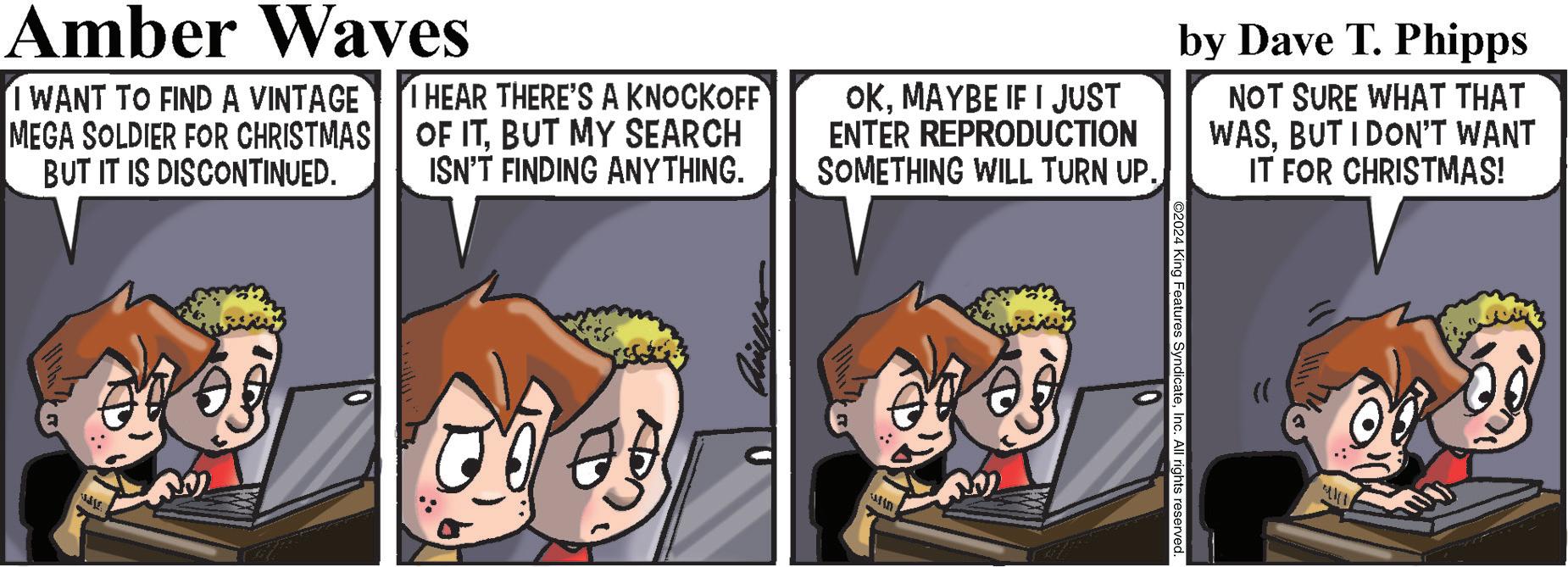






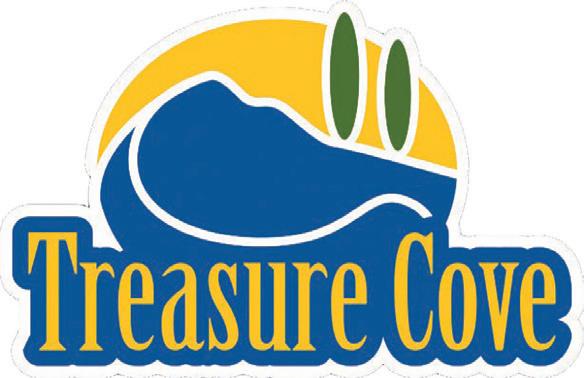



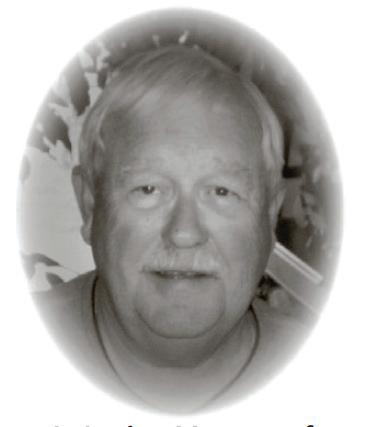
In Loving Memory of LARRY PETER NORBECK
Jan. 24, 1945 - Nov. 16, 2018
A page in our book of memories is gently turned today — as time unfolds another year, memories keep you ever near — Silent thoughts of time together, hold memories that will last forever...
We miss you so much, Love, Joan, Dana, Andy, Koewen and Brendyn


Mona Rita Gysin
November 29, 1940 - October 31, 2024
Born in Akron ohio, no known relatives. Mona passed away peacefully in emergency at UHNBC from lung and heart complications.
Thanks to the Drs. & Nurses in emergency and IMU (Pod C) who attended to her. Many thanks to ASAP and to all the people in Prince George who befriended and helped Mona on her journey through life.
Celebration of Life on Saturday, November 16th, 2024, 1-3 pm
The New Life Center 1164 - 3rd Ave. Prince George. Bring your good memories.

May Edna Bjorklund (Swain) born in Prince Albert, Sask March 16, 1943 Passed peacefully on October 20, 2024 at the age of 81 in Prince George, BC She is survived by her children Lloyd (Ruby), Donna, Duwayne, Cheryl (Mike), Curtis, her sisters Ina, Lila, Patsy and grandchildren and many other family members and friends.
She was predeceased by her parents Rothwell and Clara Swain, brothers, sisters, son Karl, grandson Shaner and her former husband Carl Bjorklund. Special thanks to Rainbow Lodge staff for caring for our mother. Celebration TBA.

Eleanor Marie Hourie
December 15, 1938 - November 3, 2024
Eleanor “Ely” passed away peacefully at Jubilee Lodge surrounded by family and close friends.
Ely retired 20 years ago from B.C. Transit where she made numerous friends. Mom’s love of the outdoors had her camping, quadding, and traveling. Her one true love was a passion for horses and horse racing.
Survived by children: Vicki (Roger), Val, Raymond (Anna). Grandchildren: Talissa, Jade, Joyce, Trinty, Zaron, Dustin, and James.
Predeceased by her sister Diane and her brother Eric
A small celebration of life will be held from 2:00 - 4:00pm on November 30, 2024 at Pineview Hall
In lieu of flowers, please make a donation to an animal shelter.
Heartfelt thanks to the staff at Jubilee Lodge and the good friends, Charlene and Gloria for all your kindness and support.

March 22, 1930 - October 30, 2024
It is with great sadness we announce the passing of our beloved Dad Rudy at the age of 94. He lived a long and wonderful life.
Rudy is survived by his wife Dorothy, Daughters Debra & Deanna (Ron)
Brother Hans and nephews Hans & Rudi Pesserl Grandchildren Rikki-Lynn, John (Anna), Brodie, Lacey (Chris), Kyle (Cathleen), Denica (Victor). Great Grandchildren : Nathan (Amber), Derek, Haley, Payton, Rilyn, Liam, Rachel, Adalyn, & Luke. Also numerous extended family and cherished friends.
Predeceased by his beloved son Kevin and great-grandson Jacob
Rudy came to Canada from Graz Austria. He learned how to speak and read English by going to the movies and reading books. He loved to read. He met and married the love of his life Dorothy Grant in Englehart Ontario in 1955. Rudy & Dorothy came to BC in 1956 and settled in Prince George in 1960. Rudy worked as a heavy machine operator and built many highways and bridges between Vancouver and Prince George, he belonged to the 115 Operating Engineers Union up until his passing.
Rudy retired in 1996 and he and Dorothy moved to Cluculz Lake that same year where they enjoyed everything lake life had to offer.
Rudy and Dorothy had 70 happy years together.

Rudy was a wonderful man who will be greatly missed, We love you Dad Until we meet again.
In lieu of flowers donations can be made to the charity of your choice.
Special Thanks to all of the wonderful Staff of the IMU D Pod Unit of the University Hospital of Prince George.
A Celebration Of Life will be held in the spring of 2025, the date will be published in the Prince George Citizen

We are sad to announce the passing of our dear Kaden. Raised as an only child, Kaden was part of a large extended and blended family.
Kaden was predeceased by his stepdad Gerald Reger; grandparents Ken and Shirley Monsen, John Conlon; step-grandparents Allen Reger, Dorothy Connell, and Jim Ismond.
Kaden is survived by his mother, Alicia (Monsen) Reger; father, Dennis (stepmom Jennifer) Conlon; siblings, Dylan, Brenna, Owen, and Cara Conlon; Samantha (Faulkner) Thompson and nephew Daxton; niece Adaleigh Conlon; aunt Tara Monsen (Richard Ellis); grandmother Kathy Ismond; step-grandparents Larry & Marion Miller; and numerous cousins, aunts, uncles, and extended family.
Born in Smithers, BC, Kaden loved the cold, snow, and getting into mischief with his cousins Stephen and Codey. Although he never reached his goal of living in Iceland, Kaden was able to enjoy many achievements, one being his graduation from high school in 2014.
Growing up in Prince George, Kaden made lasting friendships and cherished memories that stayed with him until his last days. Kaden had a real love for games, animals, and every kind of food, especially potatoes like his Poppa Ken.
After living in Saskatchewan for a few years, Kaden returned to BC to be with his family. Although his last few years were filled with difficult health challenges, Kaden’s beautiful smile always brightened the room. Time spent with family, helping friends with their dogs or moving, being a cool uncle, and playing a mean game of UNO kept him busy.
Kaden had a firm faith instilled in him at a young age, and he knew what his real hope was, no matter what came his way (Rev. 21:3,4).
The family would like to take this opportunity to thank ALL the support team and doctors who have helped over the years; the list is endless, and everyone played a part. A special thank you to the ICU Team and doctors at RIH and the Huntington’s Society at UBC. And to all the friends and family, a huge THANK YOU.
In honor of Kaden’s memory, a video tribute has been created, and we warmly invite you to watch it through the link below: https://vimeo.com/1023618936?share=copy

In Memoriam of Hugo Riske
There are some who bring a light so great to the world that even after they are gone the light remains. Missing you, with love, your family.
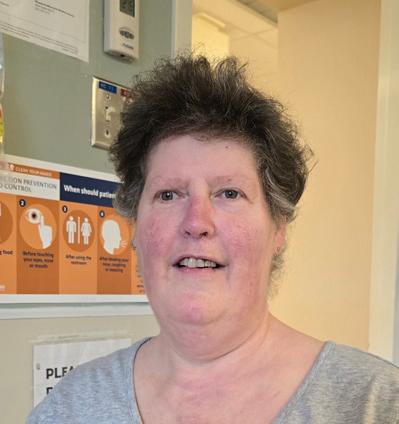
Edna “Yvonne” St. Laurent June 23, 1967 – October 18, 2024
Yvonne fought a very short battle with brain cancer. Yvonne has now joined her partner, Robert Bird, Her parents Anne and Edouard St. Laurent, her grandparents Bill and Edna Harris, numerous aunts and uncles.
Yvonne leaves behind her daughter Carol-Anne Michelle, Her sister Colleen (John), her brother Stephen (Teresa), Two nieces and one great niece.
Special thanks to Dr, K Saif for all your care and compassion you showed Yvonne. To Mara and Joey and the two Cathy’s in rehab, she truly loved you guys. To Chelsey, her life skills worker, you were so much more than a helper for Yvonne, and we appreciated all your help and especially toward the end of her life. Alika from CLBC, your time with Yvonne was short but very memorable and special to Yvonne and our family.










5X5 round hay bales, $275 each- net wrapped, barn stored. 250-614-6667
We are Moving so great deals on: Furniture Snowblowers,Lumber, Art, and much more 7310 Dawson Rd Sat. Nov. 16 10 am-2pm
I
Pallets for pick-up every Thursday. Call 250.562.2441 for

WOODLOT 218
Woodlot Licence Plan
Sorine Winther Holdings Ltd has prepared a Woodlot Licence Plan for the ten-year period commencing in early 2025. The plan is in accordance with the Woodlot Licence Planning and Practices Regulation. The woodlot consists of Schedule B lands in the vicinity of West Lake Rd. and Schedule A lands adjacent. In accordance with legislation this plan is available for public review and comment. The plan and detailed maps can be reviewed by appointment by calling 250-981-6430.
Written comments should be received by November 30, 2024.

Dunkley Lumber Ltd. Forest Operations Map # DLL A18160 2024-1
Dunkley Lumber’s Forest Operations Map # DLL A18160 2024-1 is open for public review and comment from November 14 – December 14, 2024. Use link below, or in person by appointment Mon-Fri 9am4pm. Contact the Dunkley Lumber forestry department at the email or phone number below in order to schedule an appointment. 17000 Dunkley Rd, Hixon, BC, V0K 1S1.
This FOM is applicable for 3 years. It may be relied upon to apply for a cutting permit or road permit, or to harvest a cutblock or construct a road that is displayed on the FOM.
250-998-4421
fom@dunkleylumber.com https://fom.nrs.gov.bc.ca/public/projects
Dease River First Nation Notice of General Assembly November 30, 2024, 10:00 a.m. Community Hall Good Hope Lake BC
A General Assembly for members of the Dease River First Nation will be held on November 30, 2024, beginning at 10:00 a.m. in the Community Hall in Good Hope Lake.
This General Assembly is being held as directed by the Federal Court in its decision of October 16, 2024 to review and vote on the ratification of the proposed DEASE RIVER INDIAN BAND CUSTOM ELECTION REGULATIONS to replace the current Regulations for the Custom Elections of the Chief and Council of the Dease River Band. These documents are available for review at www.deaseriverfirstnation.com
Registered members over the age of 18 are eligible to participate and vote in the General Assembly meeting.
FROM KING FEATURES WEEKLY SERVICE, 628 Virginia Drive, Orlando, FL 32803
The meeting will be chaired by Kit Spence, who has been appointed as Electoral Officer. This appointment was made to satisfy the direction of the court which states:
CUSTOMER SERVICE: (800) 708-7311 EXT. 257
FLASHBACK #12345_20241111 FOR RELEASE NOV. 11, 2024
By Mick Harper
“The Dease River First Nation will appoint forthwith or within 15 days from this order (on or before Wednesday, October 30, 2024), an Electoral Officer. The Electoral Officer must be a person who is viewed among community members as independent and may not be the Applicant or the Respondent Chief or Council or the spouse, child or parent of those persons, nor a member (or the spouse, child or parent of same) who intends to run for the position of Chief or Councilor in the next Dease River First Nation election;”
Members of the Dease River First Nation are encouraged to attend this important meeting. Those members who cannot attend in-person may join the meeting by Zoom. The Zoom link is available at www.deaseriverfirstnation.com
This notice is dated November 7, 2024
Kit Spence Toll Free: (877) 541-9017
Electoral Officer Text: 250-881-0142
Dease River First Nation drfn-eo@shaw.ca



1. Which group released “Rag Doll”?
2. Name the artist who wrote and released “Dreamy Eyes.”
3. Which group released “GreenEyed Lady”?
4. Who wrote and released “Cracklin’ Rosie”?
5. Name the song that contains this lyric: “If I could take my pick of all the girls I’ve ever known, Then I’d come and pick you out to be my very own.”
Answers
1. The Four Seasons, in 1964. The song spent two weeks at the top of the Hot 100 chart and reached No. 1 in Canada as well.
2. Johnny Tillotson, in 1958. The song was his first single and made it on to the Hot 100 chart. Tillotson penned several more hits over the years, including “Poetry in Motion.”
3. Sugarloaf, in 1970. A few years ago an old tape was found of the group’s live performance in 1975. It was remastered and turned into a vinyl album titled “Sugarloaf Live 1975.” It’s available online.
4. Neil Diamond, in 1970.
5. “Never Be Anyone Else But You,” by Ricky Nelson, in 1959. Nelson’s song has been covered by several artists, including internationally, over the years. The song has recently been used in a TV commercial for chicken noodle soup.
© 2024 King Features Syndicate
Between or anyone related, with the belief of abandonment of the storage UNIT C-10 located at AAA Self Storage 6700 Pacific Street, Prince George, BC V2N 6Y2.
Belongings of DAVID DESCHENE
25029 SHERATON SUB ROAD V0J 1E3
(250 321 0272)
will be dispose the afore said property unless the person being notified takes possession and liability of the property within 14 days from the date of this publication
The Manager



The Bailiff offers FOR SALE PURSUANT TO WAREHOUSE LIEN ACT(S), the interest of Goodvin, Charles William (the debtors) in the following goods:
To View contact North Central Bailiffs Ltd until November 21th, 2024, bids will be accepted on the units until November 21th, 2024. Goods to be sold as is where is. Bidder takes responsibility to ensure they are satisfied with the description of unit/ goods being sold. North Central Bailiffs Ltd. is not responsible for determining the correct model year or description. Terms of sale: Immediate full payment upon successful bid, plus sales tax. www.northcentralbailiffs.bc.ca
North Central Bailiffs Ltd. Court Bailiff Jenn M.
* On Nov. 25, 1990, following a severe thunderstorm on Thanksgiving Day, Washington State’s historic Lacey V. Murrow Memorial Bridge broke apart and sank to the bottom of Lake Washington. Its disintegration was slow enough for news crews to capture the entire event on camera and broadcast it to a fascinated audience throughout western Washington.
• On Nov. 11, 1831, Nat Turner, an American slave and educated minister who believed that he’d been chosen by God to lead his people into freedom, was hanged in Jerusalem, Virginia, for leading a revolt with 75 followers through Southampton County, killing about 60 white people.
* On Nov. 26, 1864, Oxford mathematician Charles Lutwidge Dodgson, better known to us today by his pen name, Lewis Carroll, sent a handwritten manuscript called “Alice’s Adventures Under Ground” to 12-year-old Alice Liddell. One of the earliest stories written solely to amuse rather than teach children, it became a beloved and much-adapted classic and is still the author’s best-known work.
* On Nov. 27, 2005, Aerosmith’s Steven Tyler and Joe Perry of Aerosmith, along with rapper 50 Cent and other notable music celebs, took to the stage as featured performers in New York City’s Rainbow Room at the $10 million bat mitzvah of 13-year-old Elizabeth Brooks.
• On Nov. 12, 1969, investigative journalist Seymour Hersh revealed the extent of the U.S. Army’s charges against 1st Lt. William L. Calley at My Lai, Vietnam, in a cable picked up by more than 30 newspapers, saying that “The Army says he [Calley] deliberately murdered at least 109 Vietnamese civilians during a searchand-destroy mission in March 1968, in a Viet Cong stronghold known as ‘Pinkville.’”
* On Nov. 28, 1582, 18-year-old William Shakespeare and 26-year-old Anne Hathaway paid a 40-pound bond for their marriage license in Stratford-upon-Avon. Their first child, daughter Susanna, followed six months later.
* On Nov. 29, 1942, coffee was added to the list of rationed items in the U.S. in spite of its record production in Latin American countries, due to high demand for the bean as well as shipping needed for other purposes.
• On Nov. 13, 1979, Philadelphia 76ers center Darryl Dawkins leaped over Kansas City Kings forward Bill Robinzine for a memorable slam dunk that shattered the fiberglass backboard. His equally memorable comment on the move, which was not his last and the sound of which spectators likened to a bomb going off: “It wasn’t really a safe thing to do, but it was a Darryl Dawkins thing to do.”
• On Nov. 14, 1882, outlaw Frank “Buckskin” Leslie shot and killed Billy “The Kid” Claiborne, who had publicly challenged him, in Tombstone, Arizona.
• On Nov. 15, 1984, Baby Fae, a month old infant who received the world’s first baboon heart transplant, died at California’s Loma Linda University 20 days after the operation. Three other people had received animal heart transplants, but none survived longer than a few days.
• On Nov. 16, 2001, British author J.K. Rowling’s most famous and beloved creation, the bespectacled boy wizard Harry Potter (played by Daniel Radcliffe in his first major role), made his silver-screen debut in “Harry Potter and the Sorcerer’s Stone,” which went on to become one of the highestgrossing movies in history.

DEAR PAW’S CORNER: I’m 16 and love pets -- I have a dog, cat and an iguana already -- and I want to start my own pet sitting business. What is the best way to start? How do I get customers? Do I need a license or something? -- Jeannie H., Pittsburgh
DEAR JEANNIE: Pet sitting can be a great business to get into. Every pet owner needs someone to watch their pet from time to time: long workdays, vacations, illness and so on. However, it’s a business that carries a lot of responsibility. Being reliable is very important and is essential to building your reputation as a sitter that pet owners can trust.
I recommend a trial period first, with a couple of neighbors or your parents’ friends. This will give you an idea of what the job entails, how long it takes to care for each pet, and can open your eyes to opportunities. For example, a neighbor who works from home may not need a sitter, but their dog could use an extra walk in the afternoon.
At the same time, study up on the requirements for running a business. Entrepreneurship courses are often available for free through your local library or at the Small Business Association (where you can also find a business mentor).
Most states don’t have a licensing requirement for pet sitters, but you can get a certification through Pet Sitters International (petsit.com), or the National Association of Professional Pet Sitters (petsitters.org). These organizations offer a wealth of information -- including how to find clients.
Most of all, have fun! You’re getting into this business because you love pets, and that will be a big factor in your success.
Bachelor and One Bedroom Cabins. Fully furnished. Weekly rates. Apply in person. 867 17th Avenue.


Palidan Drywall & Plaster-TQ tradesman. Renos, additions, repairs, popcorn removal and more. (778)890-0162 or cell (604)750-0210
ARIES (March 21 to April 19)
A long-sought workplace change could be happening soon. Consider reworking your ideas and preparing a presentation just in case. Meanwhile, a personal relationship takes a new turn.
TAURUS (April 20 to May 20) Your persuasiveness doesn’t really start to kick in until midweek. By then, you can count on having more supporters in your camp, including some who you doubted would ever join you.
GEMINI (May 21 to June 20) Your workload is still high, but good news! You should start to see the daylight by the week’s end. Reserve the weekend for fun and games with friends and loved ones. You deserve it!

CANCER (June 21 to July 22)
Regardless of how frustrating things are, keep that “Crab” under control. A cutting comment you might think is apt right now will leave others hurting for a long time to come.
LEO (July 23 to August 22) Be more sensitive to the emotions of loved ones who might feel left out while you’re stalking a new opportunity. Be sure to make it up to them this weekend. A nice surprise could be waiting.
VIRGO (August 23 to September 22) The gregarious Virgo rarely has a problem making new friends. But repairing frayed relationships doesn’t come easily. Still, if it’s what you want to do, you’ll find a way. Good luck!

LIBRA (September 23 to October 22)
A misunderstanding with a partner or spouse needs to be worked out before it turns into something really nasty. Forget about your pride for now and make the first healing move.
SCORPIO (October 23 to November 21) Communication dominates the week. Work out any misunderstandings with co-workers. Also, get back in touch with old friends and those family members you rarely see.
SAGITTARIUS (November 22 to December 21) As busy as your week is, make time for someone who feels shut out of your life. Your act of kindness could later prove to be more significant than you might have realized.

CAPRICORN (December 22 to January 19) Congratulations! Your busy workweek leads to some very satisfying results. Sports and sporting events are high on your weekend activities aspect. Enjoy them with family and friends.
AQUARIUS (January 20 to February 18) Your generosity of spirit reaches out once again to someone who needs reassurance. There might be problems, but keeping this line of communication open eventually pays off.
PISCES (February 19 to March 20) You are among the truth-seekers in the universe, so don’t be surprised to find yourself caught up in a new pursuit of facts to counter what you believe is an insidious exercise in lying.
Winter in Northern British Columbia often brings heavy snowfall, which can create challenges for parking. If you need to clear snow off your grass to use it for parking, there are several important factors to consider to protect your lawn and ensure safe parking.
Why Clear Snow Off the Grass?
Clearing snow off your grass can provide additional parking space when driveways and streets are full. It can also prevent the buildup of ice and snow, which can damage your lawn and make it difficult to use the area in the spring.
Tips for Clearing Snow
Use the Right Tools
A snow blower or a shovel with a plastic blade is ideal for clearing snow off grass. Metal blades can damage the grass and soil underneath. For large areas, consider using a snow blower


with adjustable height settings to avoid scraping the ground.
Avoid Heavy Equipment
Heavy machinery like plows can compact the soil and damage the grass. Stick to lighter tools to minimize impact on your lawn.
Clear snow regularly
Don’t wait for the snow to pile up.
Regularly clearing snow prevents it from becoming compacted and forming ice layers, which are harder to remove and more damaging to the grass.
Leave a thin layer
When clearing snow, leave a thin layer of snow (about an inch) on the grass. This layer acts as insulation, protecting the grass from extreme cold and potential damage from the clearing process.
Mark the area
Use stakes or flags to mark the boundaries of the parking area. This










helps you avoid driving over areas you don’t want to damage and ensures you clear the right spots.
Considerations for Winter Parking
Soil Compaction
Parking on grass can compact the soil, which can damage the grass roots and affect lawn health. To minimize this, rotate parking spots if possible and avoid parking in the same spot repeatedly.
Drainage
Ensure the area has good drainage to prevent water from pooling and freezing, which can create hazardous conditions and damage the grass.
Spring Recovery
Be prepared to repair and reseed the grass in the spring. Snow and ice can cause damage, and the weight of vehicles can leave ruts and bare patches.
Clearing snow off the grass for winter
parking can be a practical solution, but it requires careful planning and regular maintenance to protect your lawn. By using the right tools and techniques, you can create additional parking space without causing long-term damage to your grass.


Reverse mortgages have become an increasingly popular financial tool for Canadian homeowners aged 55 and older. This type of mortgage allows homeowners to convert part of the equity in their home into tax-free cash without having to sell their property or make monthly mortgage payments. Here’s a closer look at how reverse mortgages work, their benefits, and potential drawbacks. What is a reverse mortgage?
A reverse mortgage is a loan secured against the value of your home. Unlike a traditional mortgage, where you make regular payments to the lender, a reverse mortgage allows you to receive payments from the lender. The amount you can borrow depends on several factors, including your age, the value of your home, and the lender’s policies. In Canada, the two main providers of reverse mortgages are the Canadian Home Income Plan (CHIP) by HomeEquity Bank and Equitable Bank. How Does It Work?
To qualify for a reverse mortgage, you must be at least 55 years old and own your home. The loan amount is typically a percentage of your home’s appraised value, and you can
choose to receive the funds as a lump sum, regular payments, or a combination of both. Interest is charged on the loan, and it accumulates over time. The loan is repaid when you sell your home, move out, or pass away.
Benefits of a Reverse Mortgage
No monthly payments
One of the most significant advantages is that you don’t have to make monthly mortgage payments. This can be particularly beneficial for retirees with limited income.
Tax-free income
The money you receive from a reverse mortgage is tax-free, which can help you manage your finances more effectively.
Retain home ownership
you continue to own and live in your home, which means you can benefit from any future appreciation in its value.
Flexible payment options
You can choose how you receive the funds, whether as a lump sum, monthly payments, or a line of credit.
Drawbacks to Consider
Interest accumulation
Since you don’t make regular payments, the
If your car has a sunroof, the lashings of winter storms can cause damage that impacts its proper functioning. Here’s a guide to help you winterize your sunroof effectively.
Clean and inspect it
Remove any dirt, leaves or debris from the sunroof tracks and seals. Use a mild cleaner and a soft cloth to clean the glass and surrounding area. Inspect the seals for any signs of wear or damage. Cracked or worn seals can allow water to seep in, potentially freezing and causing further issues.
Lubricate the tracks
Use a silicone-based lubricant to prevent the tracks from freezing and ensure smooth operation. Avoid using petroleum-based lubricants, which can attract dirt and cause more harm than good.
Check the drainage channels
Sunroofs are equipped with drainage channels to divert water away from the car. Ensure these channels are clear of obstructions. Use a soft brush or compressed air to clean out any blockages.
interest on the loan accumulates over time, which can significantly reduce the equity in your home.
Impact on estate
The loan must be repaid when you sell your home or pass away, which can affect the inheritance you leave to your heirs.
Fees and costs
Reverse mortgages come with various fees, including appraisal fees, legal fees, and closing costs, which can add up.
Eligibility and amount limits
Not everyone qualifies for a reverse mortgage, and the amount you can borrow is limited by your age and the value of your home.
Is a Reverse Mortgage Right for You?
Deciding whether a reverse mortgage is the right financial tool for you depends on your individual circumstances. It can provide financial relief and flexibility, but it’s essential to consider the long-term implications. Consulting with a financial advisor can help you weigh the pros and cons and determine if a reverse mortgage aligns with your financial goals.

Blocked drainage channels can cause water to back up and leak into the car, leading to interior damage and mold growth.
Close it properly
Before the onset of winter, make sure your sunroof closes properly. Listen for any unusual noises or resistance when opening and closing it. A sunroof that doesn’t seal correctly can allow cold air, water and snow into your vehicle. Consider investing in a sunroof cover if you live in an area with heavy snowfall. This added layer of protection can prevent snow and ice from accumulating on the sunroof, reducing the risk of leaks and damage





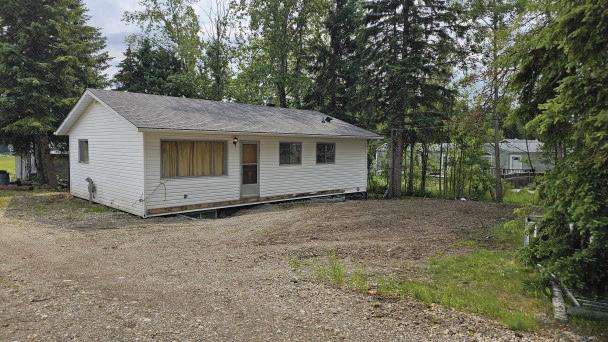

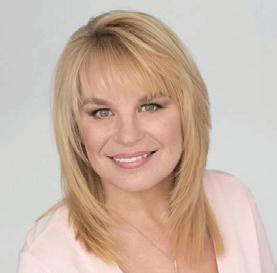






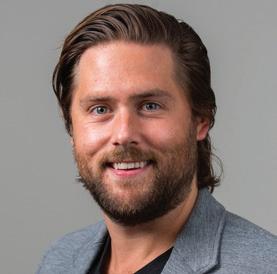






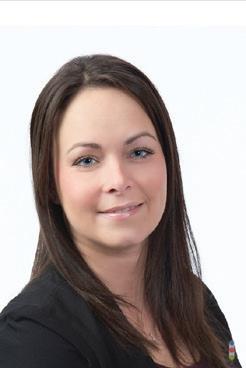






Winter in Northern British Columbia can be harsh, with heavy snowfall and icy conditions making sidewalks and driveways hazardous. Selecting the right de-icer is crucial for maintaining safety and protecting your property. Here’s a guide to help you choose the best de-icers for your needs.
Types of De-Icers
Rock Salt (Sodium Chloride)
This is the most common and affordable de-icer. It works effectively at temperatures above -9°C but can be less effective in extremely cold conditions. Rock salt can also be corrosive to concrete and harmful to plants and pets.
Calcium Chloride
Known for its ability to work at lower temperatures (down to -25°C), calcium chloride is a powerful de-icer. It acts quickly and is less damaging to concrete compared to rock salt. However, it can still be harmful to vegetation and pets if not used properly.
Magnesium Chloride
This de-icer is effective at tempera-
tures as low as -15°C and is less corrosive than rock salt and calcium chloride. It is also considered safer for plants and pets, making it a popular choice for residential areas.
Potassium Chloride:
While not as effective in extremely cold temperatures (works best above -12°C), potassium chloride is less harmful to the environment. It is often used in combination with other de-icers to improve performance.
Urea
Primarily used as a fertilizer, urea can also function as a de-icer. It is less effective in very cold temperatures and can contribute to water pollution if overused.
Considerations for Use
Temperature
Choose a de-icer that works effectively at the typical winter temperatures in Northern BC.
Environmental Impact
Consider the potential harm to plants, pets, and the environment. Opt for
products labeled as eco-friendly.
Surface Protection
Some de-icers can damage concrete and asphalt. Look for products that are less corrosive to protect your driveway and sidewalks.
Application
Follow the manufacturer’s instructions for application rates to avoid overuse, which can lead to environmental dam-
age and increased costs. Selecting the right de-icer for your sidewalks and driveways in Northern BC involves balancing effectiveness, safety, and environmental impact. By understanding the different types of de-icers and their properties, you can make an informed decision to keep your property safe and accessible throughout the winter months.

Creating a backyard ice rink can be a fun and rewarding project, especially if you love ice skating or hockey. Here’s a step-by-step guide to help you build your own rink:
Choose a good location
First, choose a flat area in your backyard. The flatter the surface, the easier it will be to create a smooth ice surface. Avoid areas with a slope or uneven ground. Next, decide on the size of your rink. A common size for a backyard rink is 20x40 feet, but you can adjust based on your available space. Mark the perimeter with stakes and string.
Materials
Gather the necessary materials, including lumber for the frame (2x6 or 2x8 boards), a heavy-duty plastic liner large enough to cover the entire rink, a water source like a garden hose, and brackets or screws to secure the frame. Optional items include floodlights for night skating and a snow blower or shovel for maintenance.
Assembly
To build the frame, lay out the lumber
around the perimeter of your marked area and secure the corners with brackets or screws. Ensure the frame is sturdy and level. Spread the plastic liner over the entire area, making sure it extends up and over the sides of the frame. This will hold the water and prevent it from seeping into the ground. Smooth out any wrinkles to avoid bumps in the ice.
Fill ‘er up
Fill the rink with water using a garden hose. Start with a thin layer to freeze the liner in place. Once the initial layer is frozen, add more water in stages until you reach the desired ice thickness, which is ideally 3-4 inches. Keep an eye on the weather, as consistent freezing temperatures (below 32°F or 0°C) are necessary to create solid ice. It may take several days for the ice to fully freeze, depending on the weather conditions.
Maintenance and upkeep
Regularly check the ice for rough spots or cracks and use a shovel or ice resurfacer to smooth out the surface. Adding a thin layer of water can help
fill in any imperfections. After snowfall, promptly remove snow from the rink to prevent it from melting and refreezing, which can create an uneven surface. Periodically flood the rink with a thin layer of water to maintain a smooth surface, especially after heavy use or warm weather.
Ensure the ice is thick enough to support skaters and check for any weak spots or cracks before use. If you plan to skate at night, set up floodlights
around the rink for visibility. Invite friends and family for a skating party or a game of hockey and enjoy the winter season with your very own backyard ice rink.
Building a backyard ice rink requires some effort, but the joy and fun it brings are well worth it. With proper planning and maintenance, you can create a winter wonderland right in your backyard. Happy skating!
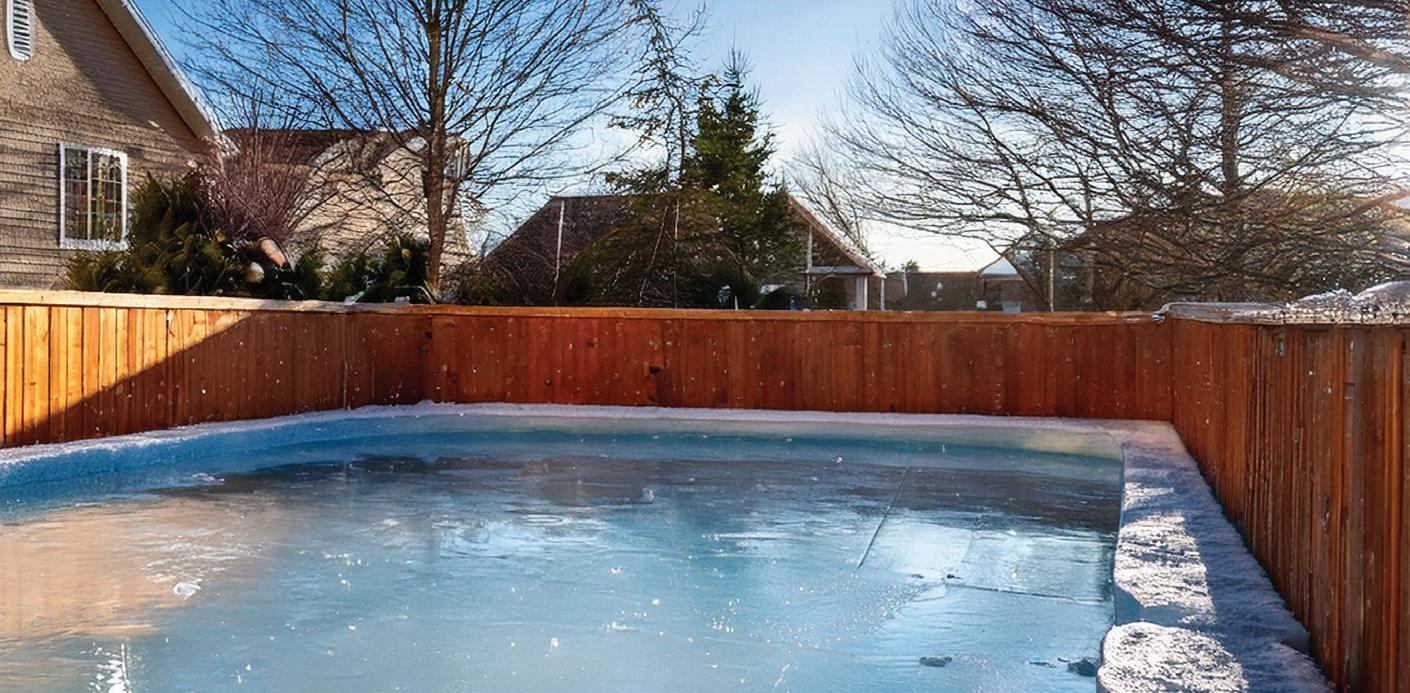
Winter can bring severe weather conditions, including snowstorms, ice storms, and extreme cold. These conditions can lead to power outages, road closures, and other emergencies. Having a well-prepared home winter emergency kit is essential to ensure your safety and comfort during these times. This article will guide you through the essential items and considerations for creating a comprehensive winter emergency kit for your home.
The first step in preparing your home winter emergency kit is to gather essential supplies. These supplies should include enough food and water to last each person in your household for at least three days. Non-perishable food items such as canned goods, dried fruits, nuts, and energy bars are ideal. Make sure to include a manual can opener if your food items require one. Water is crucial, and you should have at least one gallon of water per person per day for drinking and sanitation. Warmth and Shelter
Staying warm is critical during a winter emergency. Your kit should include extra blankets, sleeping bags, and warm clothing such as hats, gloves, and ther-
mal socks. Consider adding a portable heater that is safe for indoor use, along with extra fuel if necessary. If you have a fireplace or wood stove, ensure you have a supply of dry firewood. Additionally, include plastic sheeting and duct tape to seal windows and doors to retain heat.
Power outages are common during winter storms, so having alternative lighting sources is essential. Include flashlights with extra batteries, battery-powered lanterns, and candles with matches or lighters. A battery-powered or hand-crank radio is also important to stay informed about weather updates and emergency instructions. Ensure you have a fully charged power bank to keep your cell phone operational.
First Aid and Medications
A well-stocked first aid kit is a must for any emergency situation. Your kit should include bandages, antiseptic wipes, adhesive tape, scissors, tweezers, and pain relievers. If you or any family members take prescription medications, ensure you have an adequate supply to last through the emergency. Include a list of medications, dosages,
and any medical conditions in case you need to seek medical help.
Tools and Supplies
Having the right tools and supplies can make a significant difference during a winter emergency. Include a multi-tool or Swiss Army knife, a wrench or pliers to turn off utilities, and a shovel for clearing snow. Sand, salt, or non-clumping cat litter can help improve traction on icy surfaces. A whistle can be useful for signaling for help if needed.
Maintaining hygiene is important even during an emergency. Include items such as moist towelettes, hand sanitizer, and garbage bags with plastic ties for personal sanitation. Feminine hygiene products, diapers, and other personal care items should also be included if needed. Consider adding a portable toilet or bucket with a lid for emergency sanitation.
Important
Keep copies of important documents in a waterproof container. These documents should include identification, insurance policies, bank account records, and any other critical paperwork. Having some cash on hand is also important, as ATMs and credit
card machines may not be operational during a power outage. Preparing a home winter emergency kit is an essential step in ensuring your safety and comfort during severe winter weather. By gathering the necessary supplies and making a plan, you can be better prepared to handle any winter emergency that comes your way. Remember to review and update your kit regularly, and make sure all family members know where it is located and how to use the items inside. Stay safe and warm this winter season.
